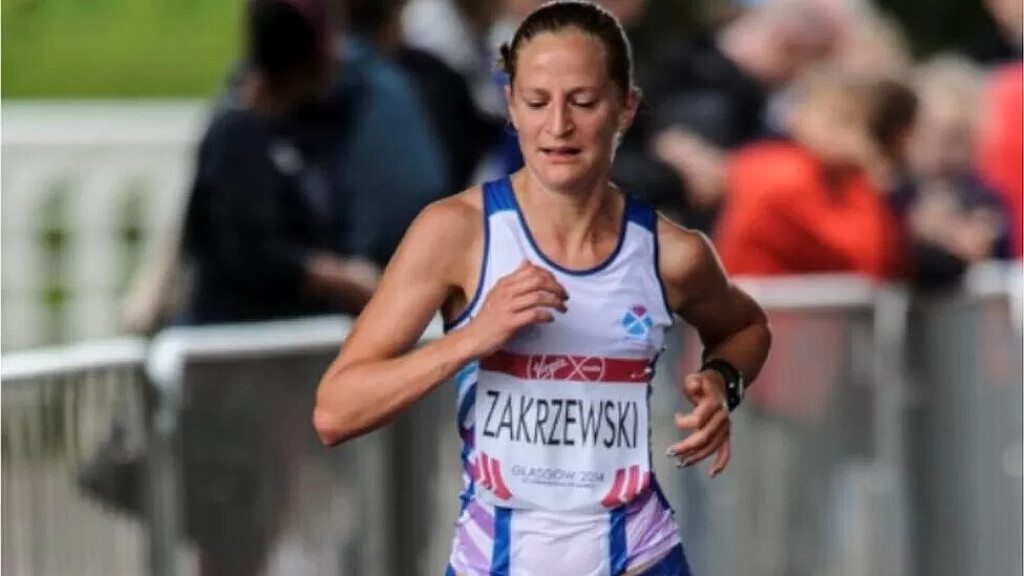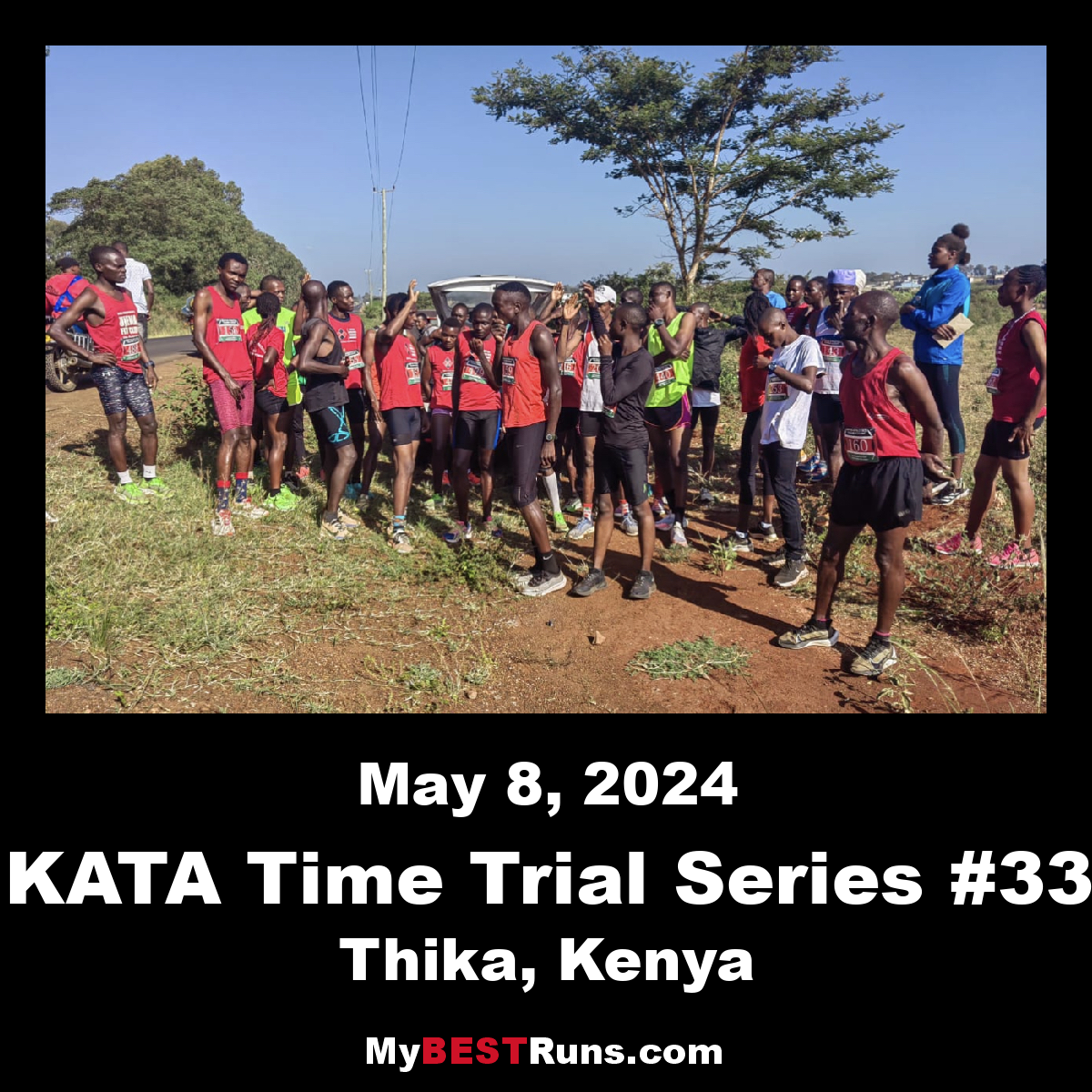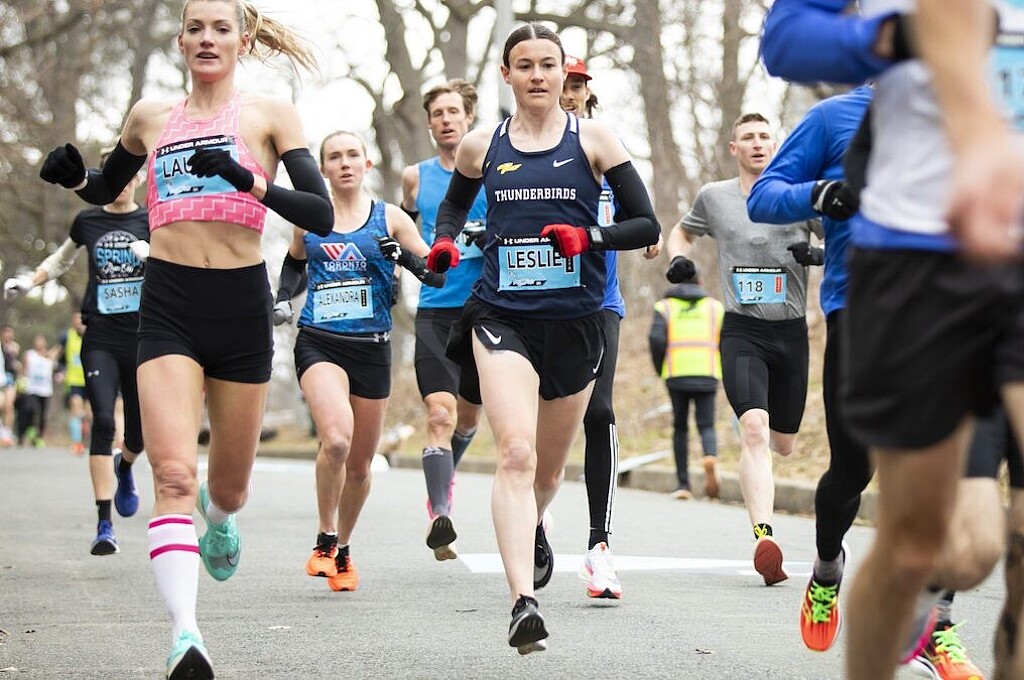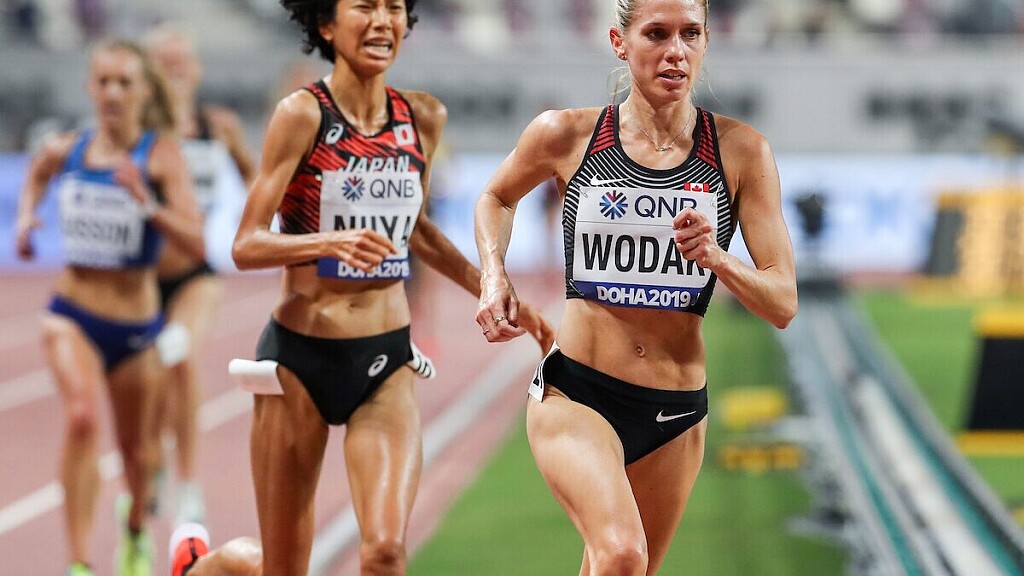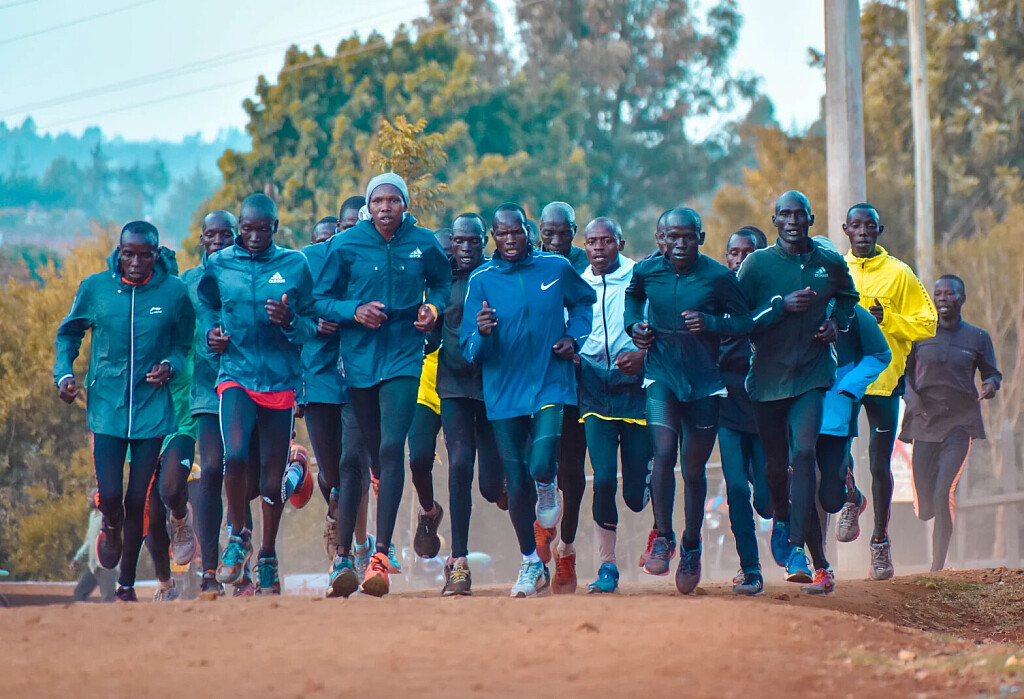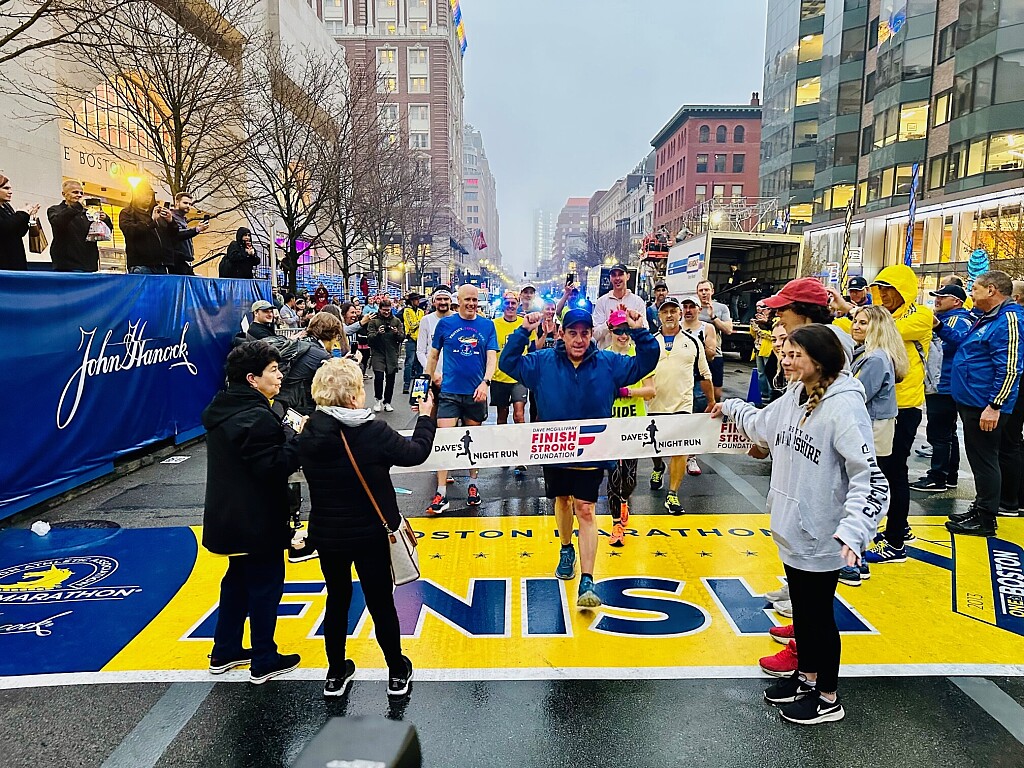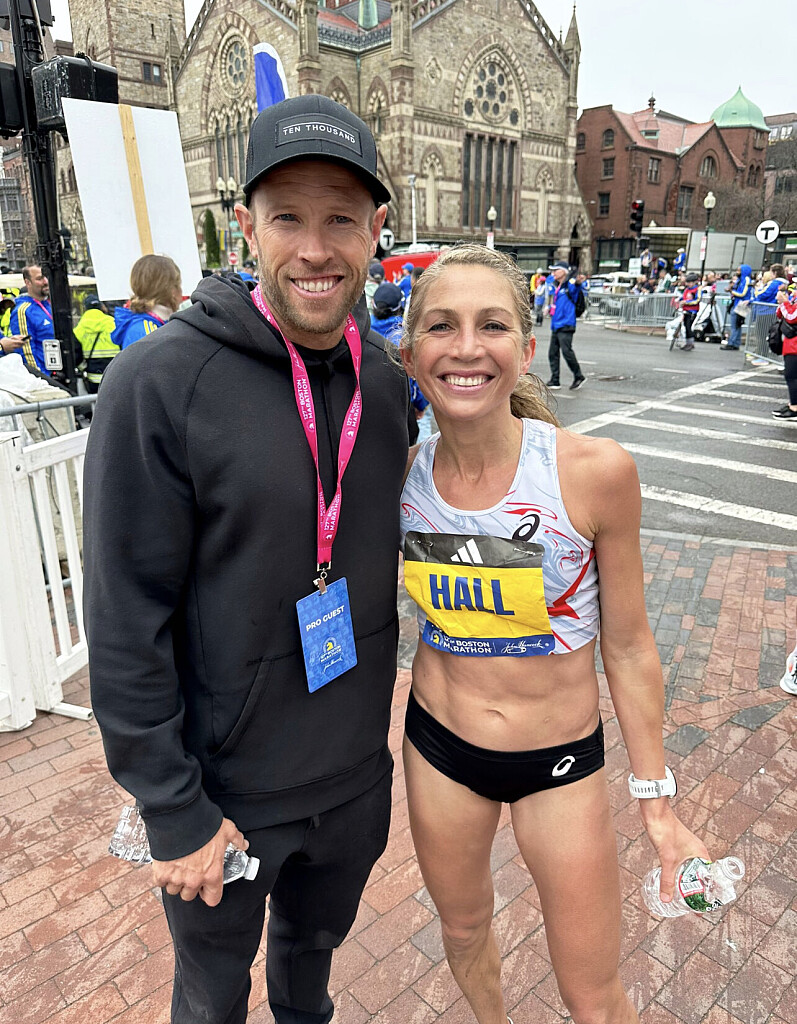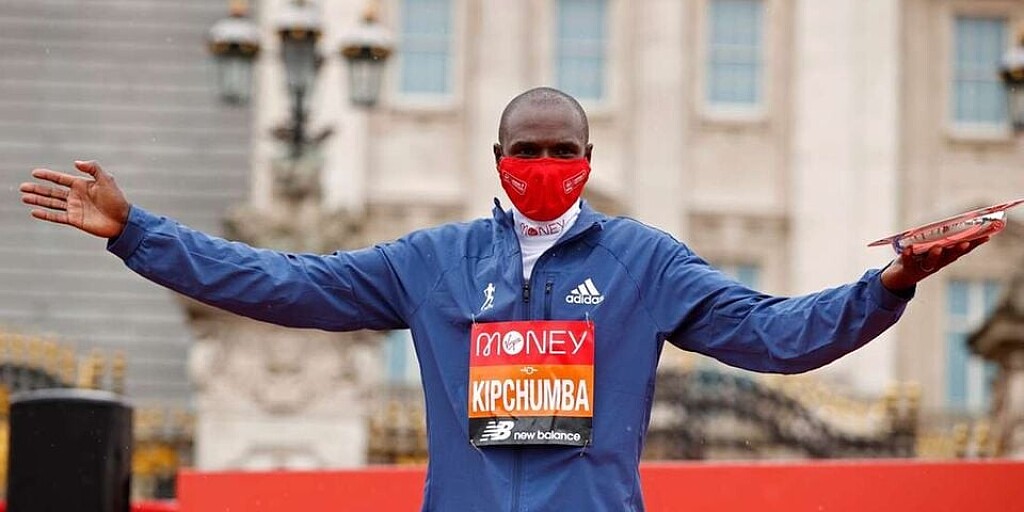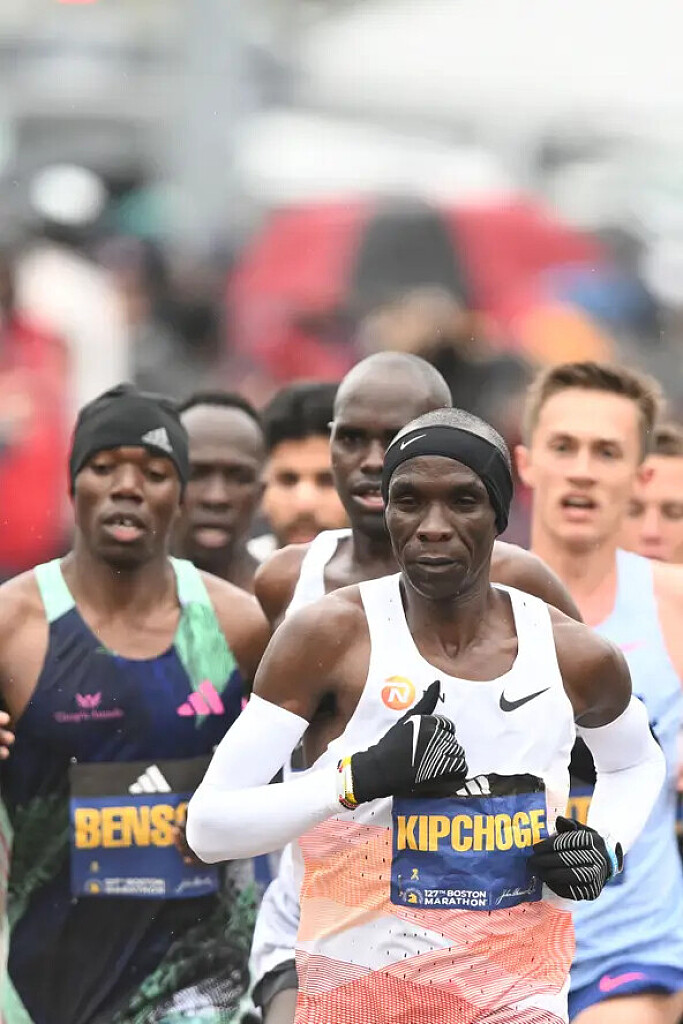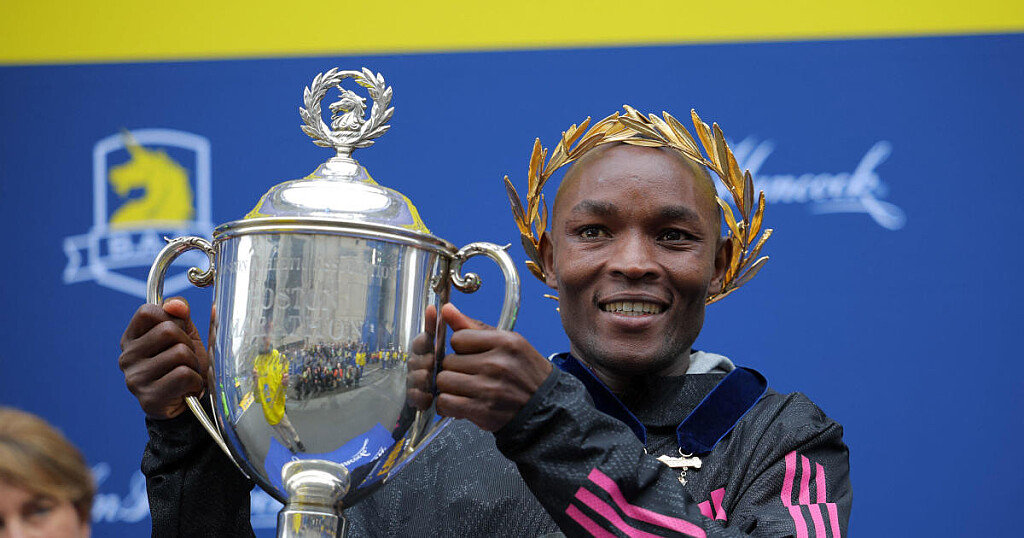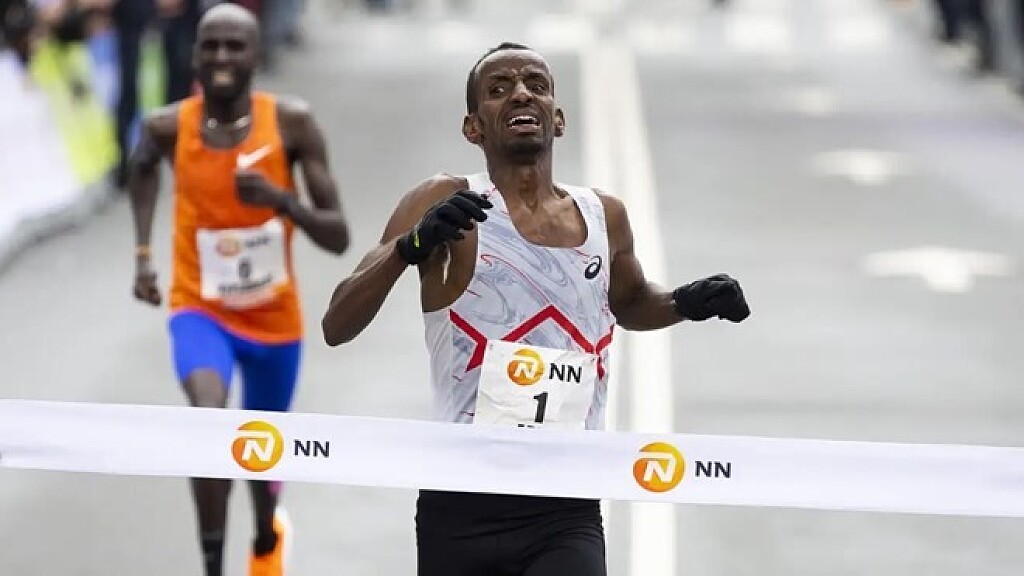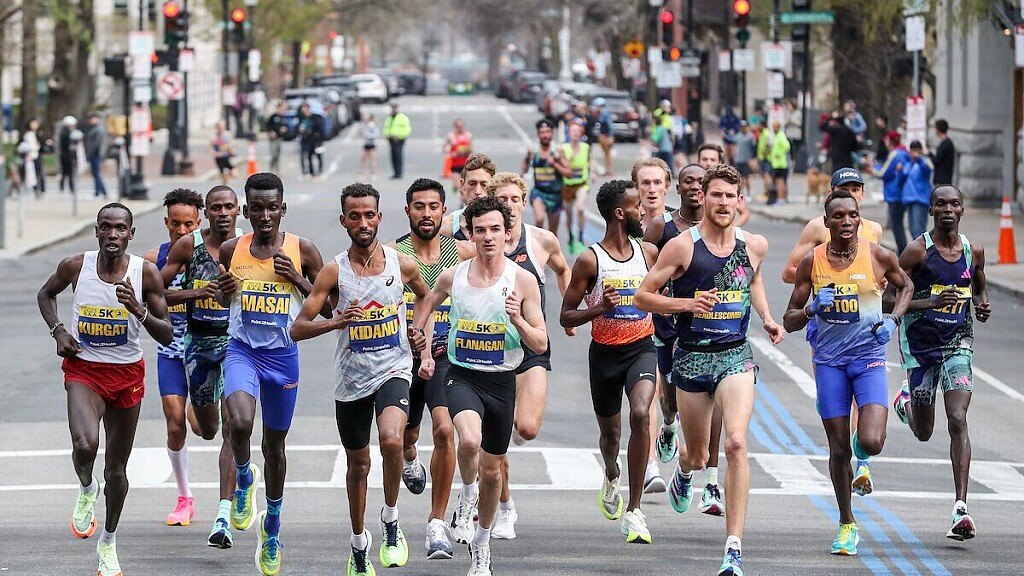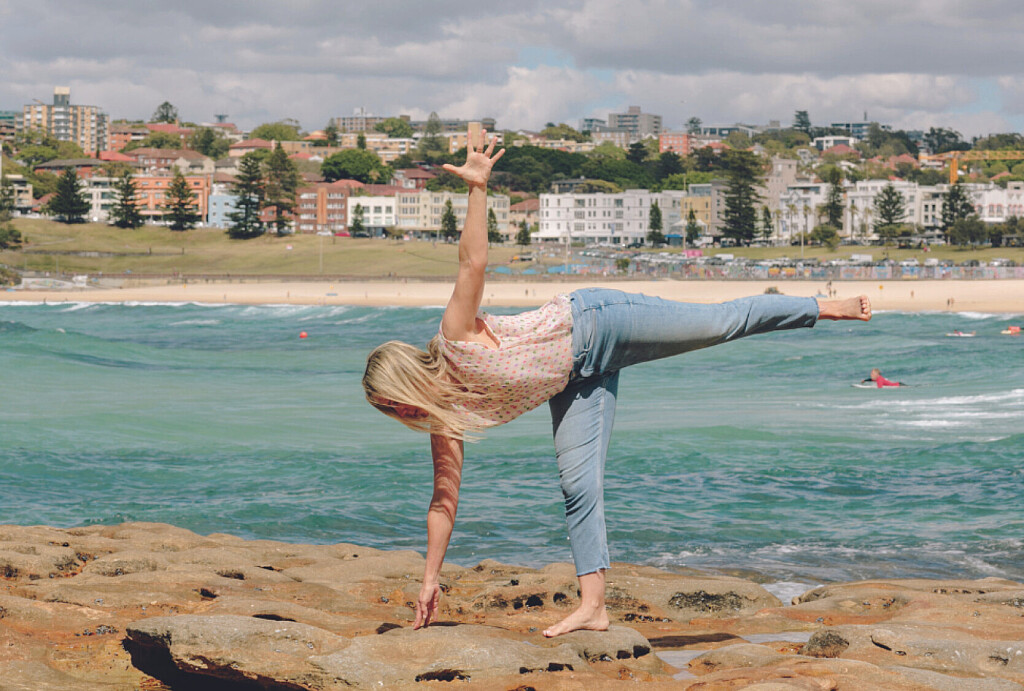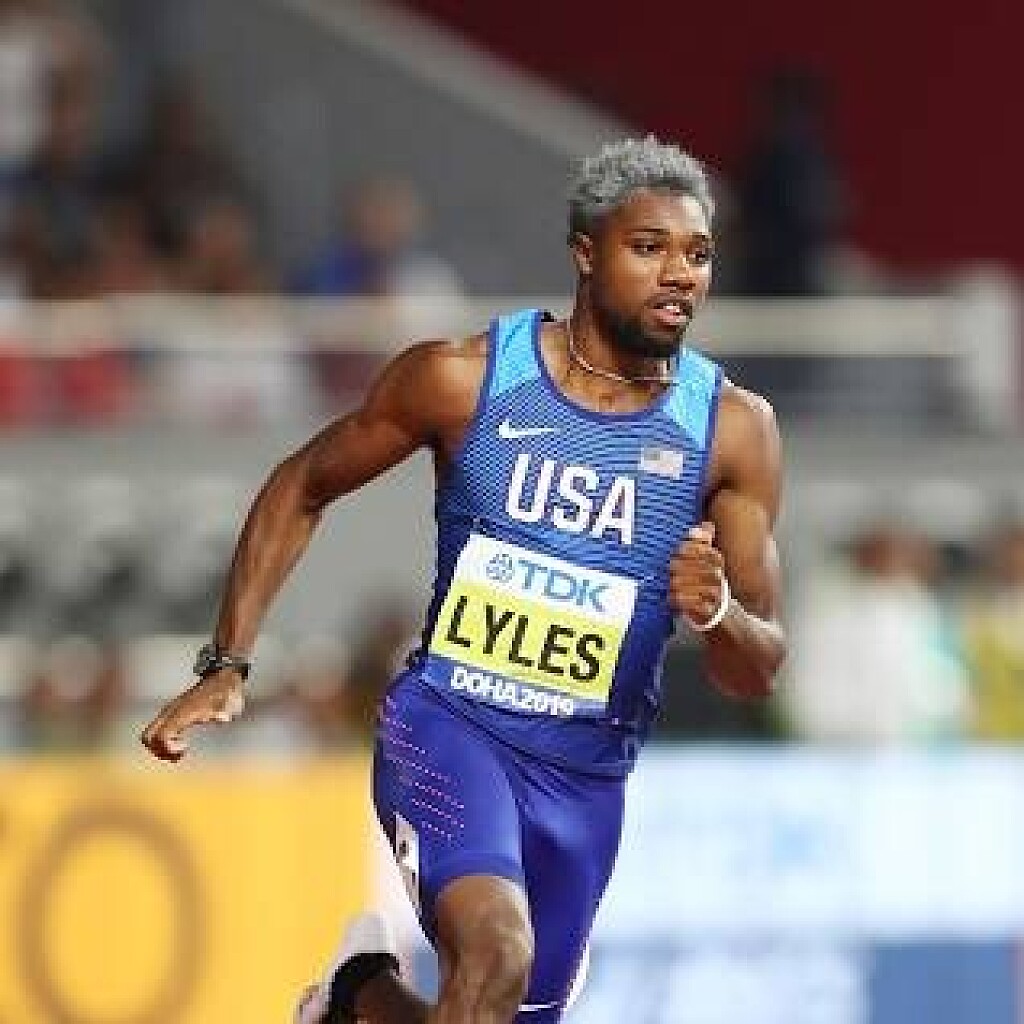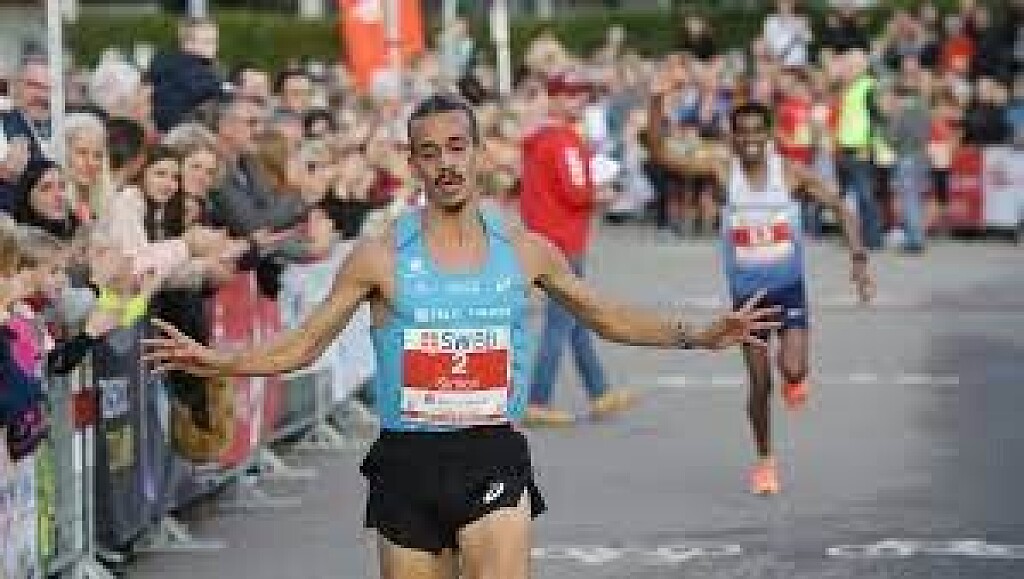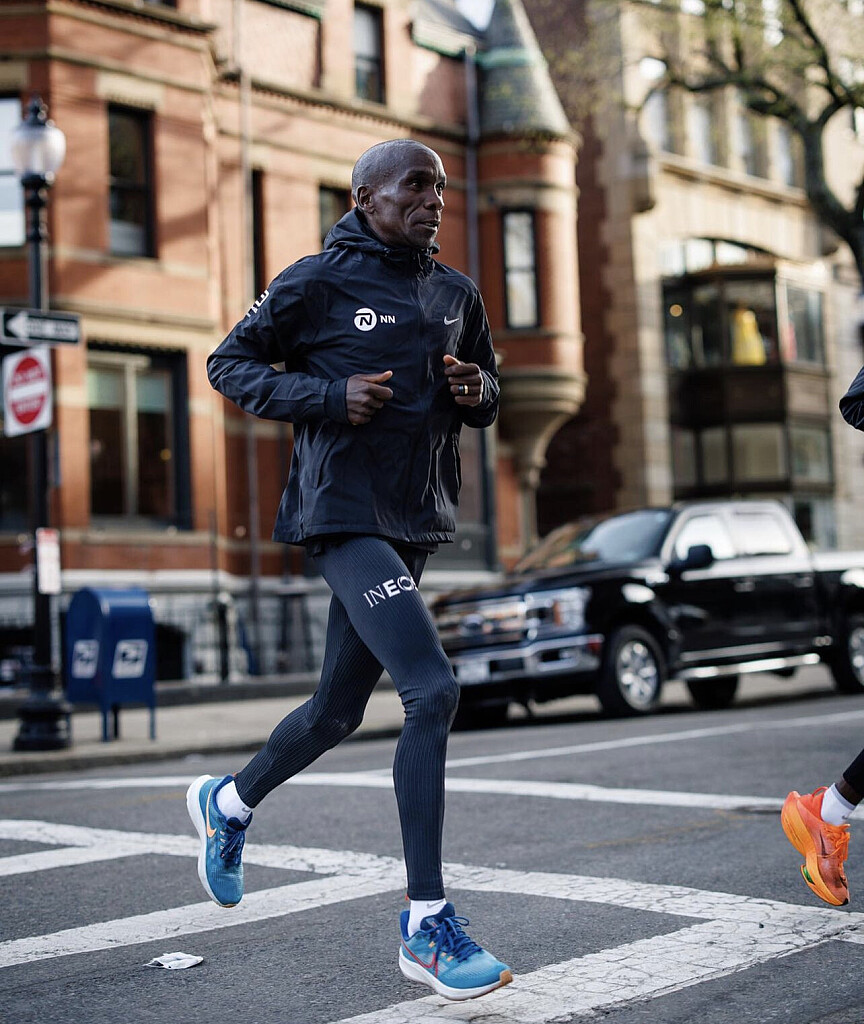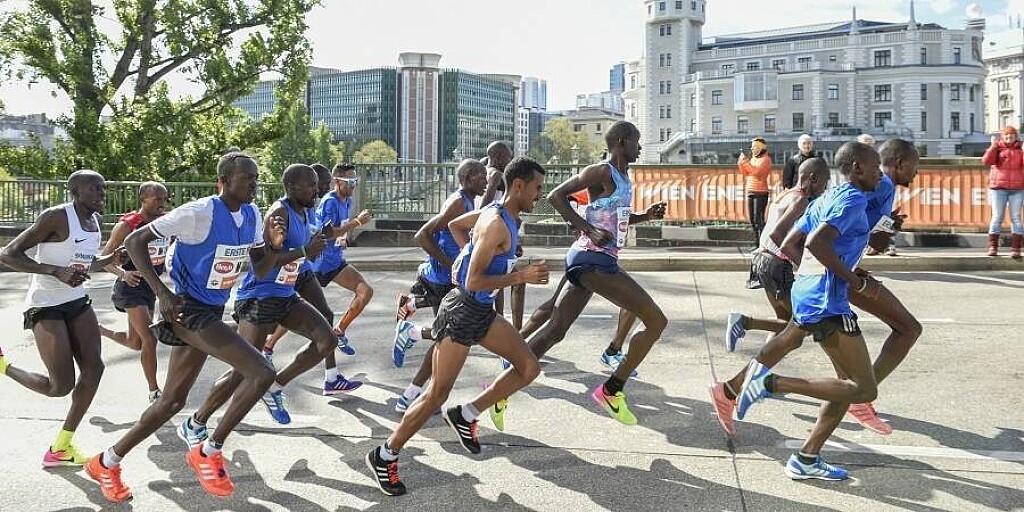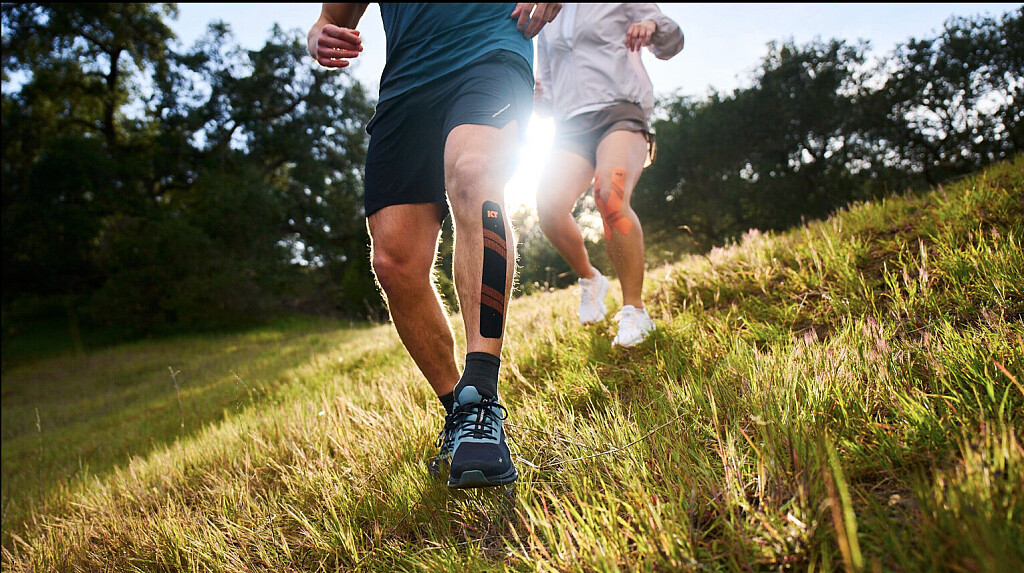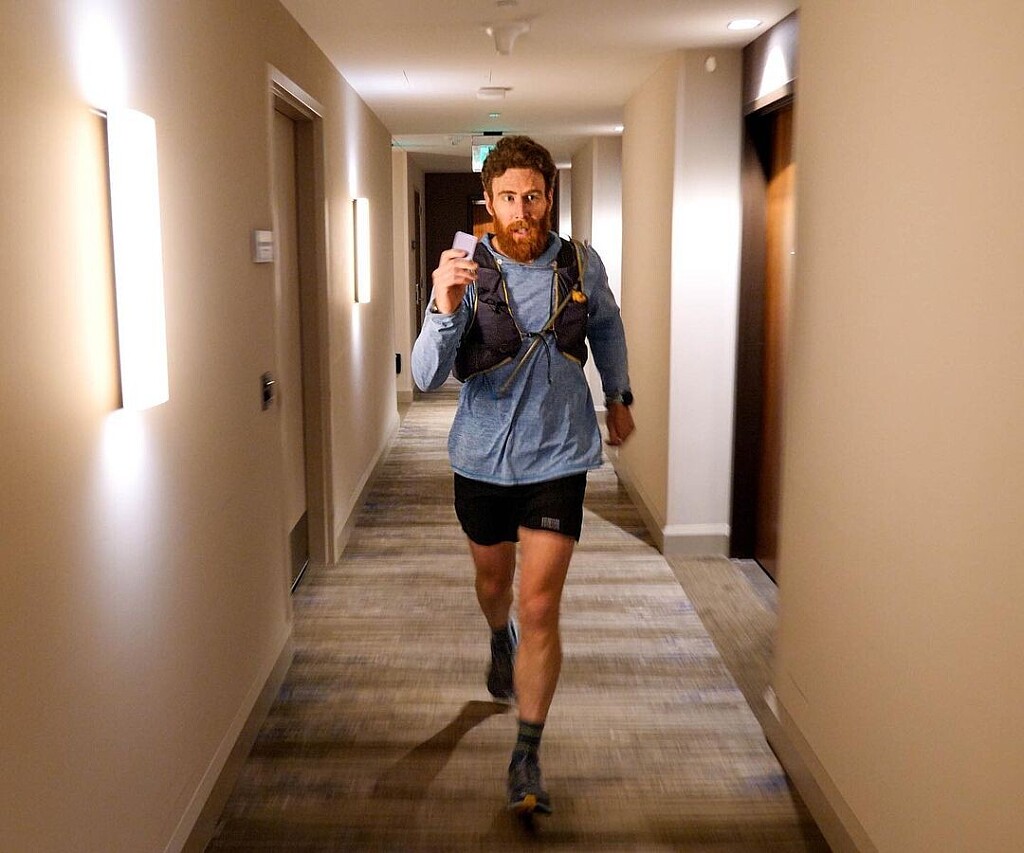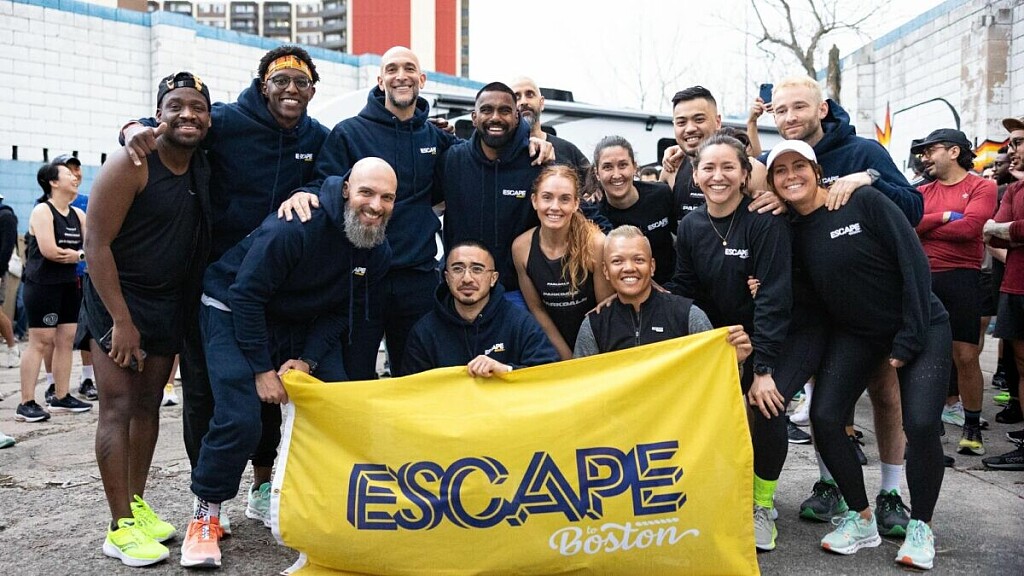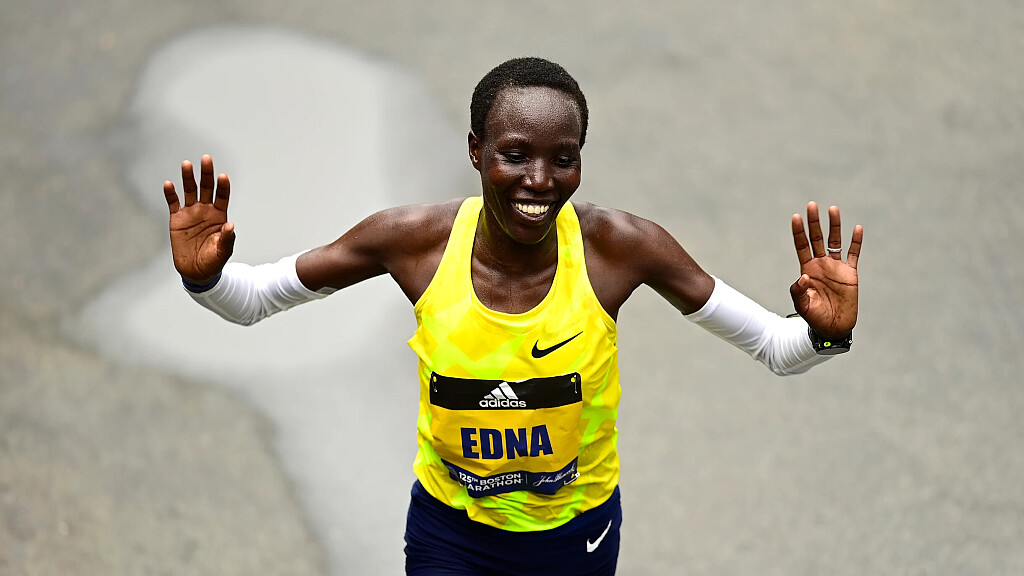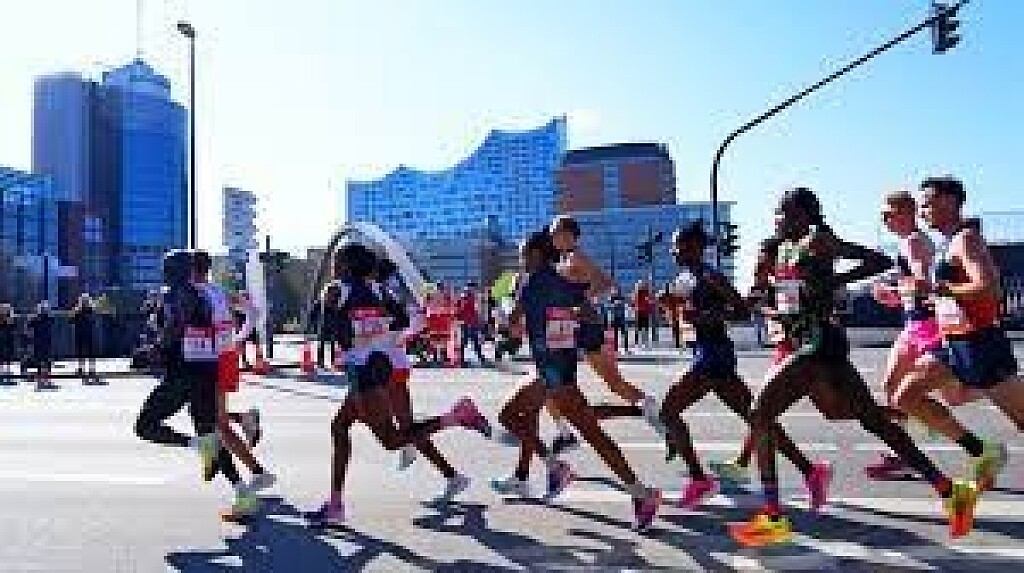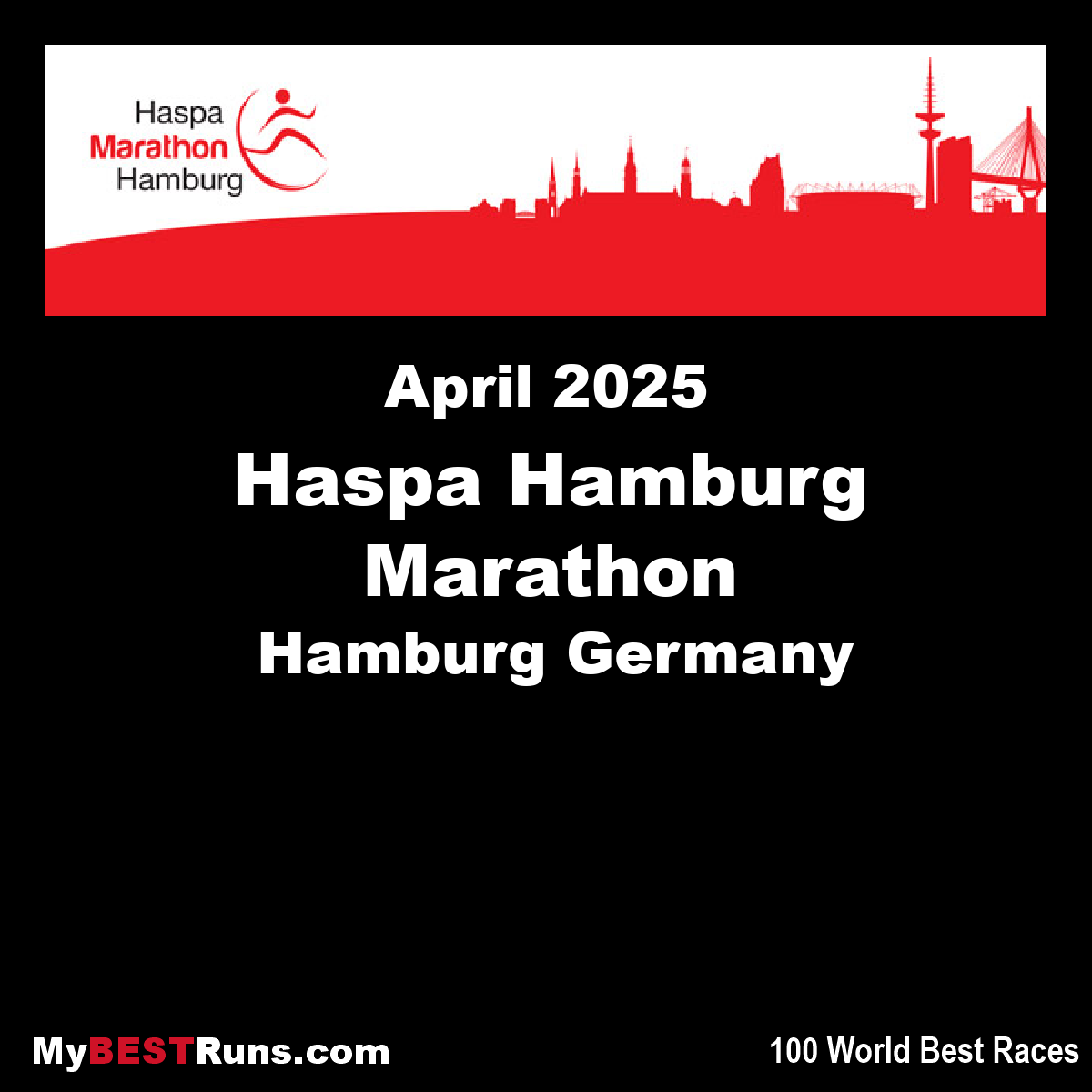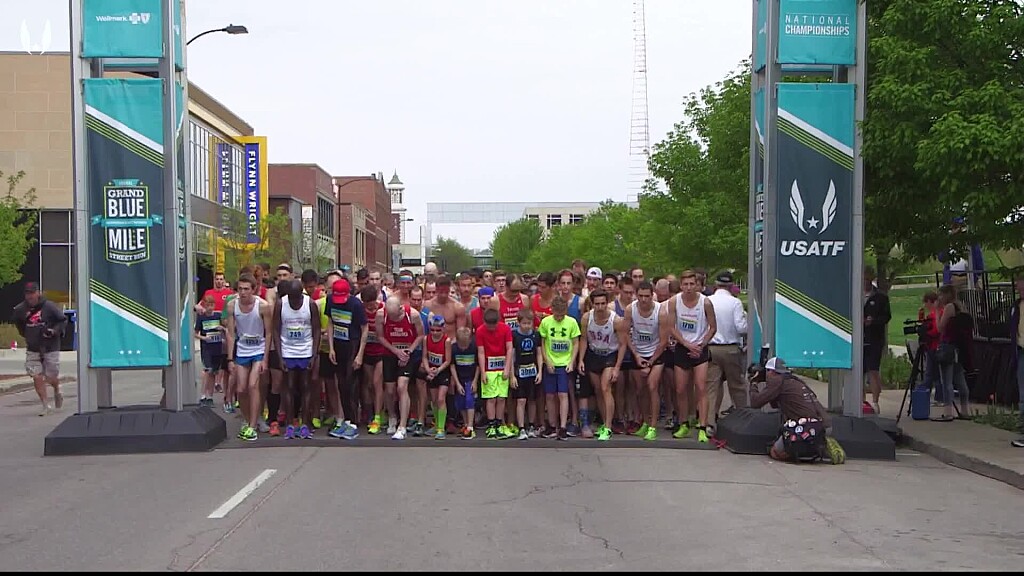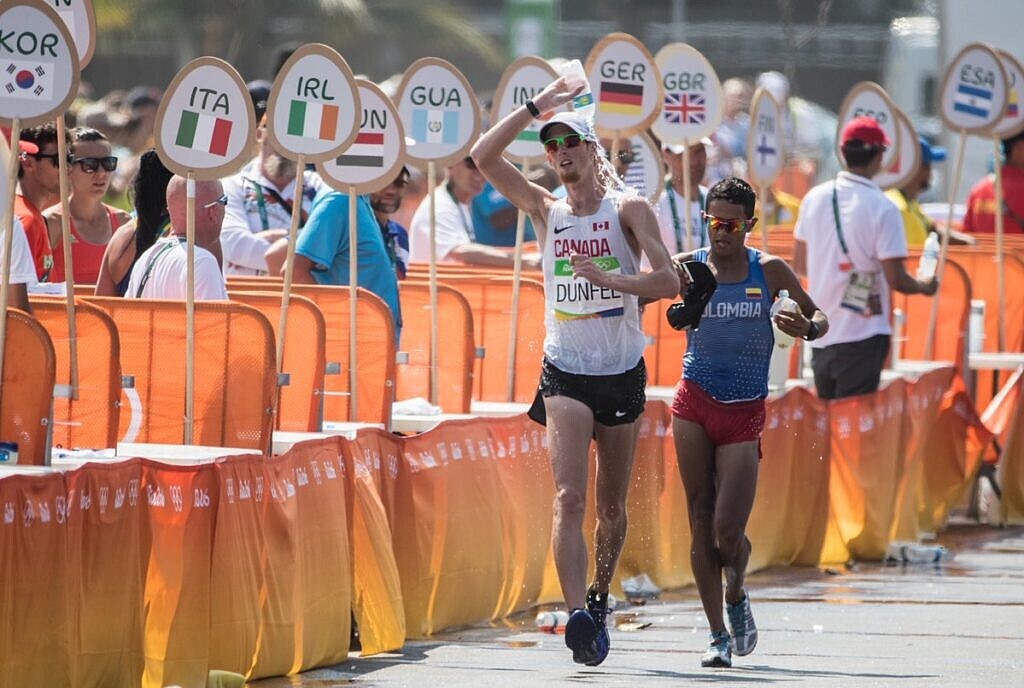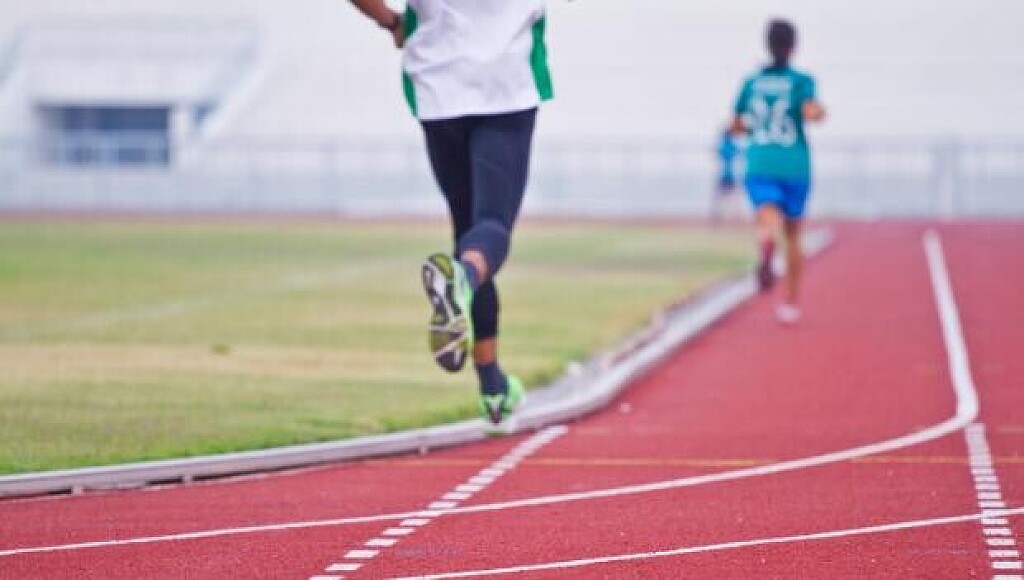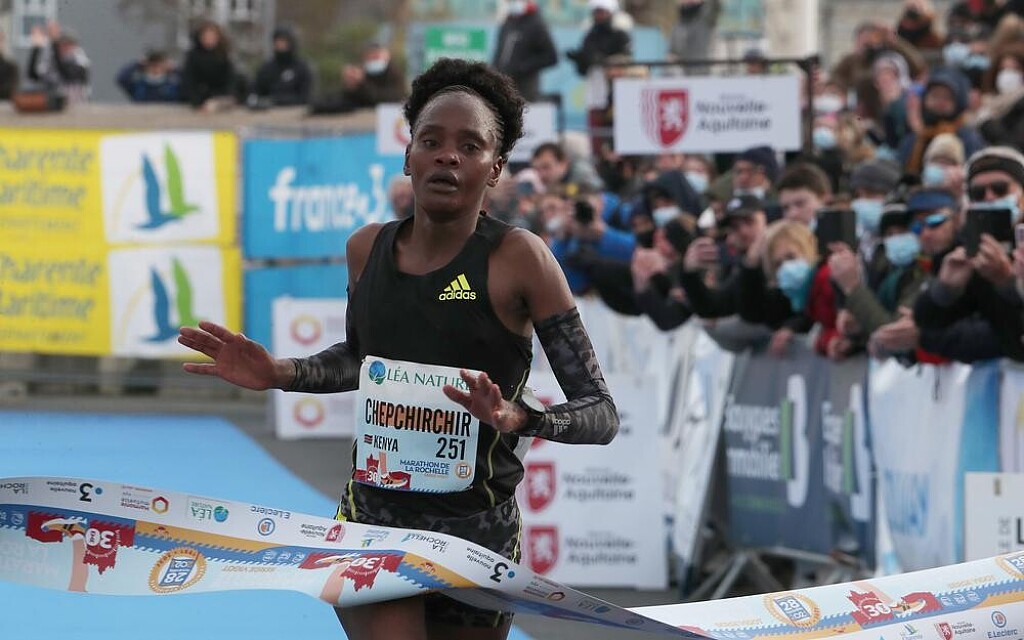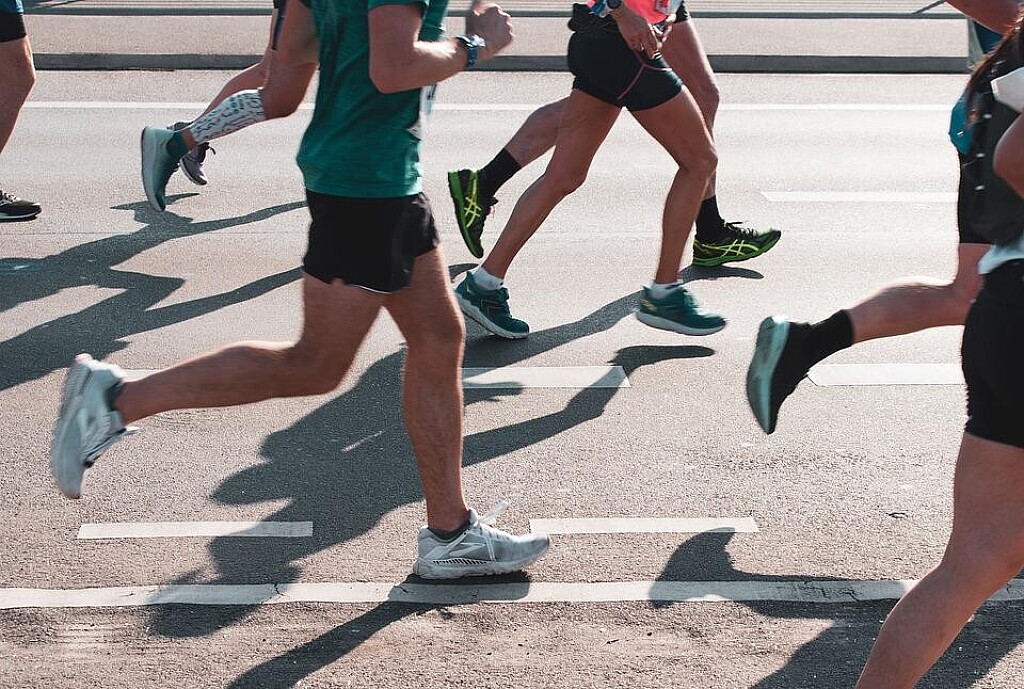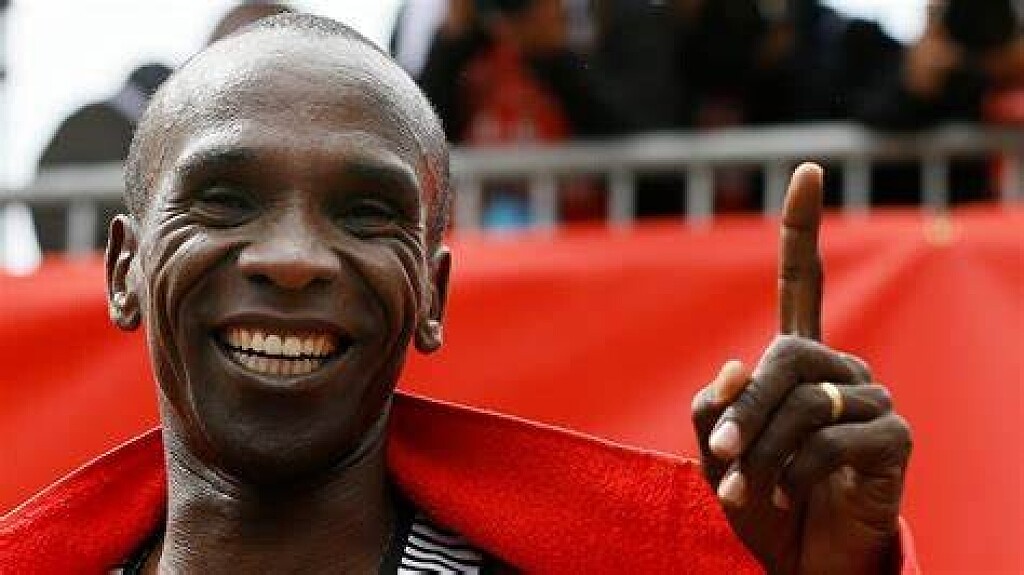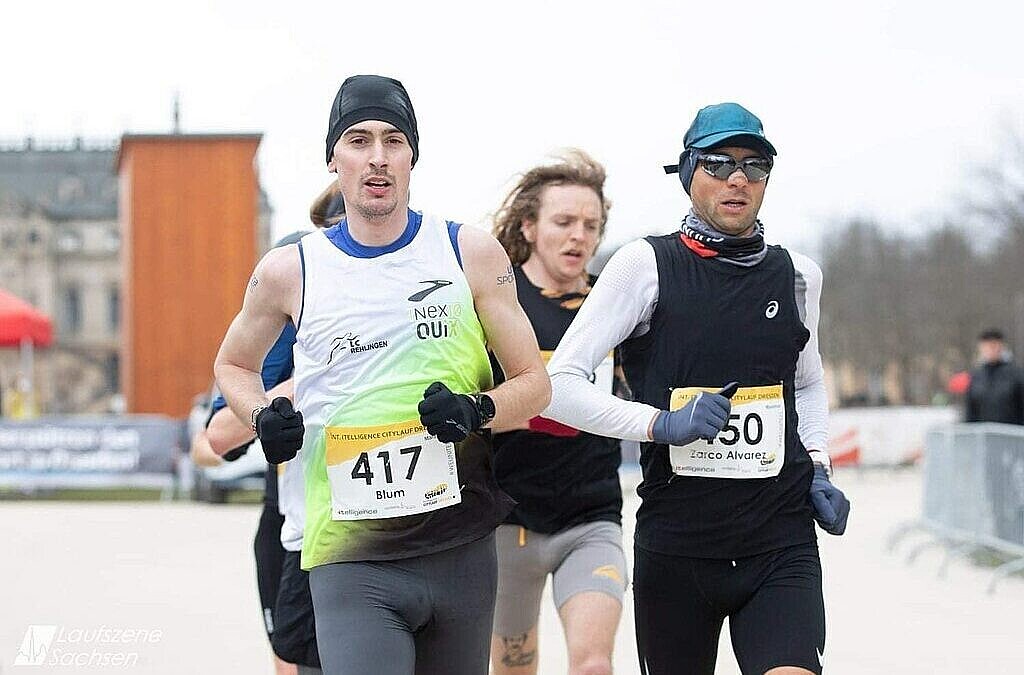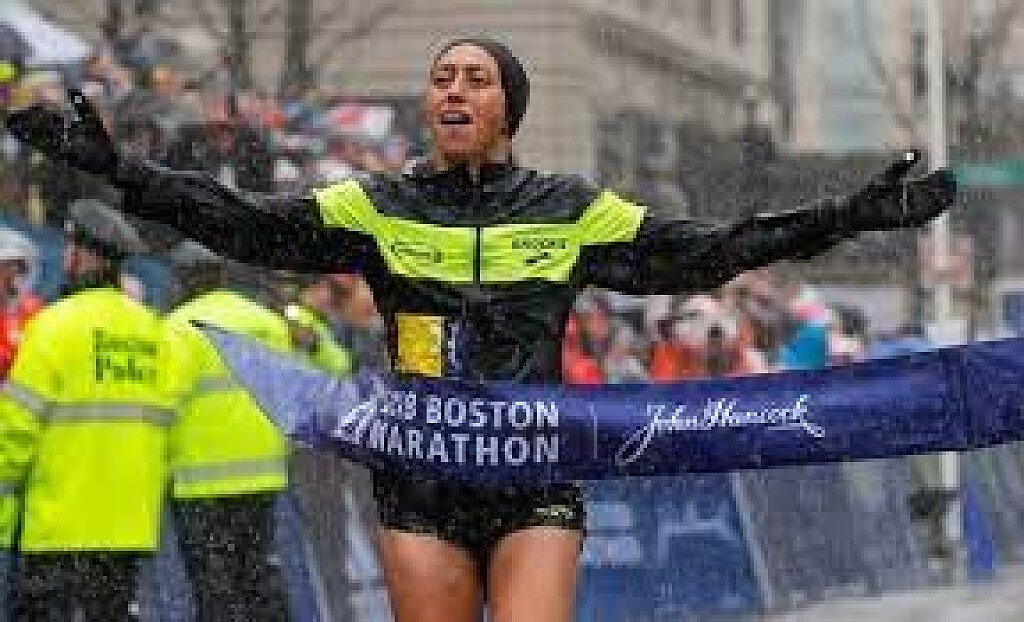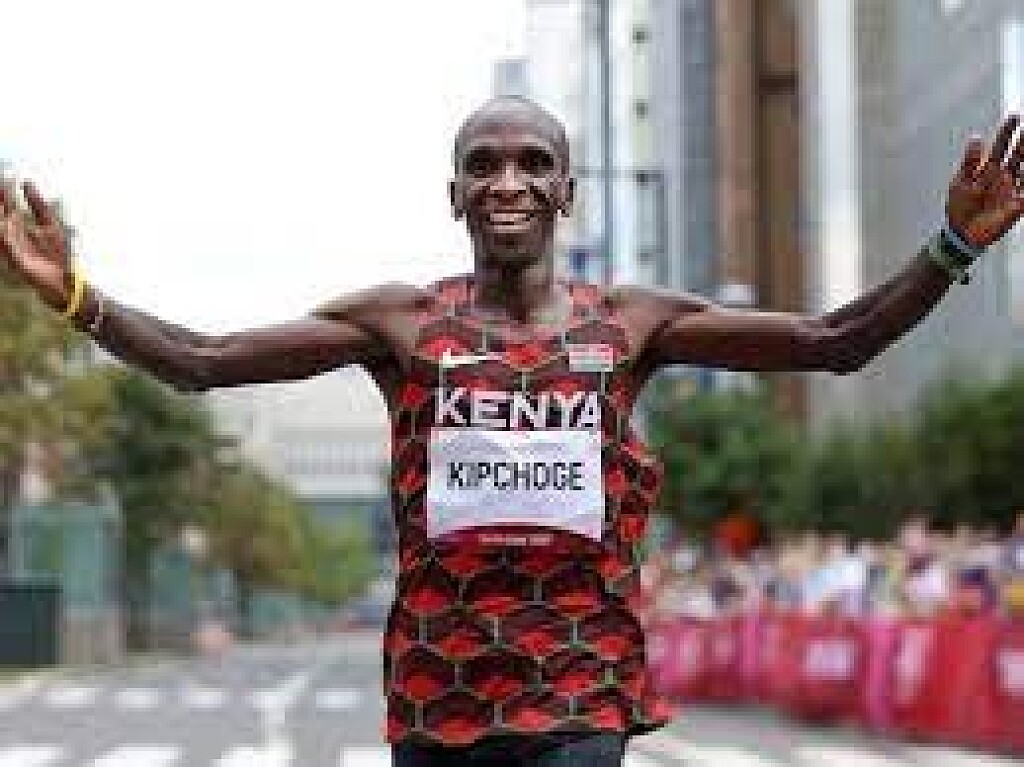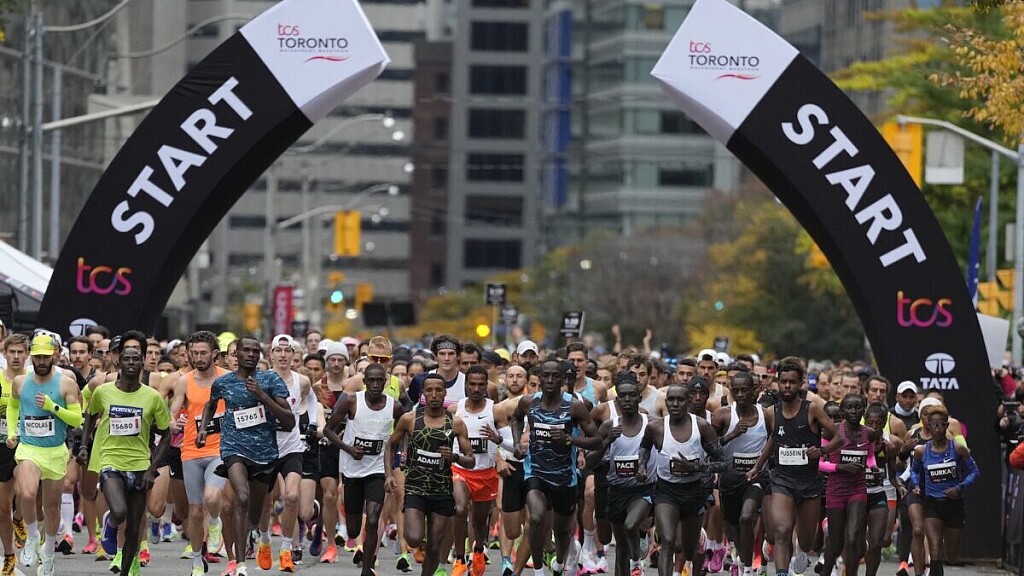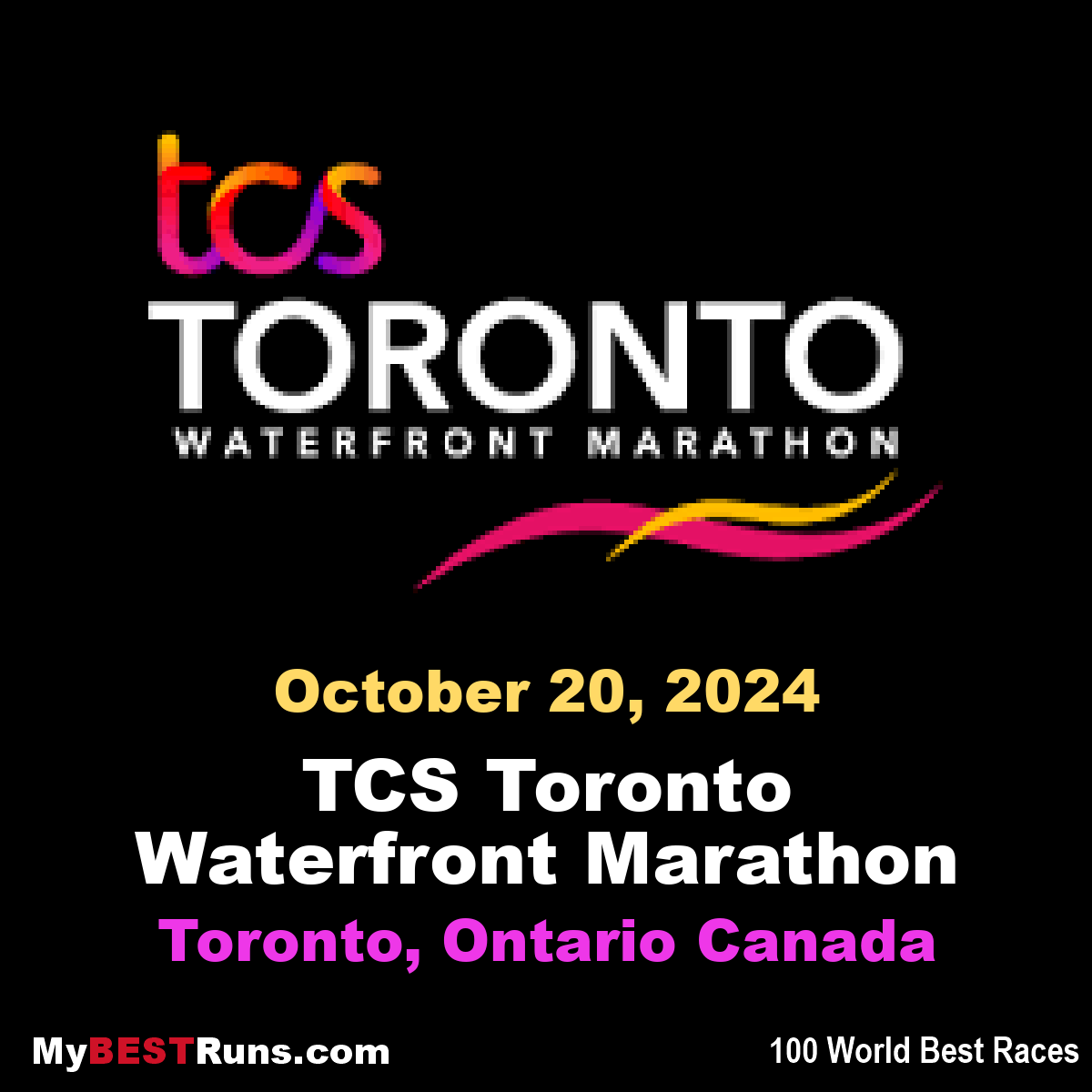Running News Daily
Running News Daily is edited by Bob Anderson. Send your news items to bob@mybestruns.com Advertising opportunities available. Train the Kenyan Way at KATA Kenya and Portugal owned and operated by Bob Anderson. Be sure to catch our movie A Long Run the movie KATA Running Camps and KATA Potato Farms - 31 now open in Kenya! https://kata.ke/
Index to Daily Posts · Sign Up For Updates · Run The World Feed
Eliud Kipchoge shed some light on what happened in his Boston Marathon debut
More than a day after he finished sixth in his first Boston Marathon, Eliud Kipchoge sat down to answer a few questions.
Kipchoge, the 38-year-old marathon world record holder, had only lost two of his 17 career marathons prior to Monday. So it was surprising to see him struggle to answer the acceleration of Gabriel Geay during Mile 18 of the race. He then fell to the back of the pack and was subsequently dropped by the race leaders by Mile 21.
Kipchoge acknowledged that he had an issue with his upper left leg that began during Mile 18.
“That’s where the problem is,” Kipchoge told reporters on Wednesday. “I tried to do what was necessary, but it was not working.”
“I’m not a doctor,” he later joked when asked for more specifics.
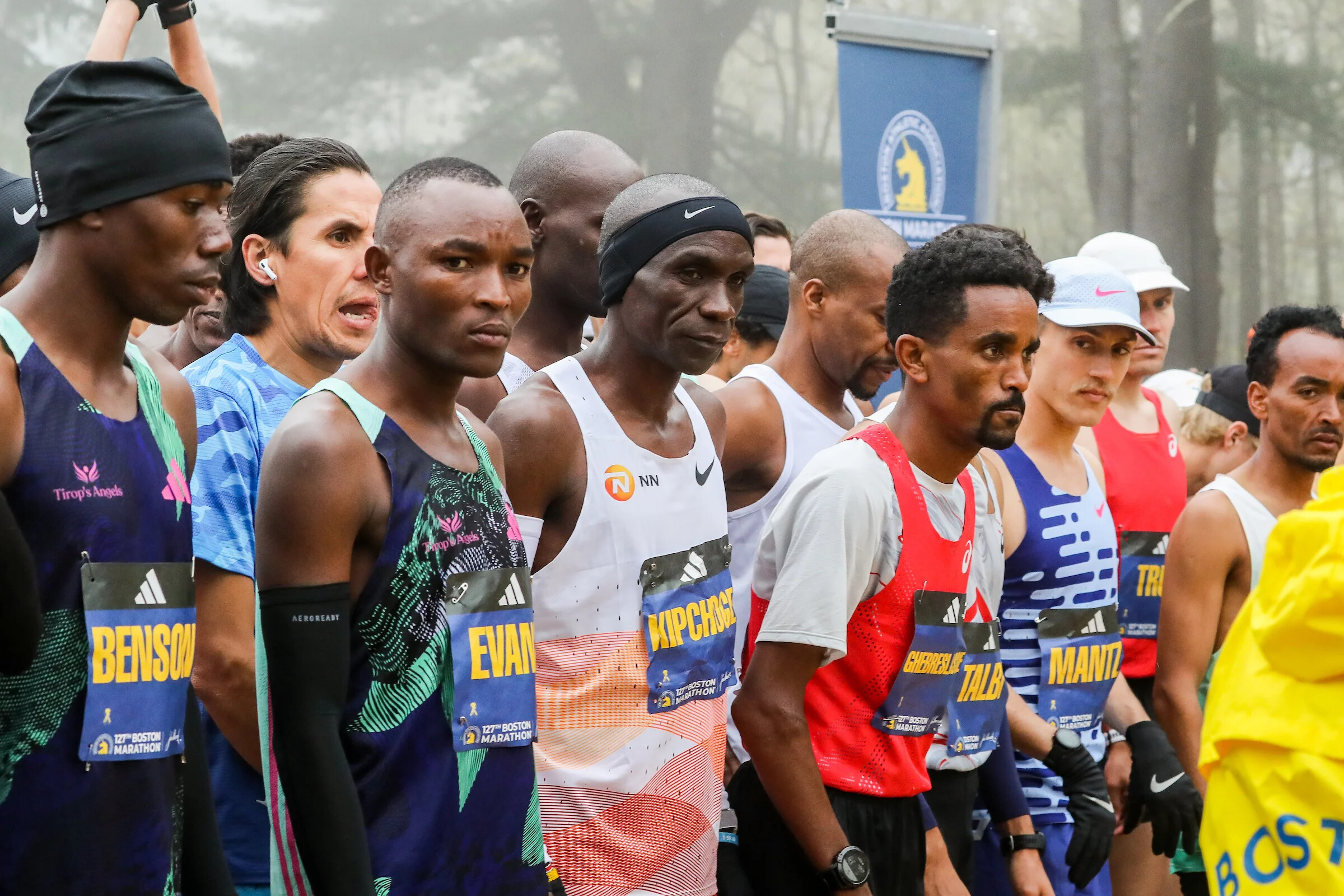
Having encountered the issue mid-race, he said that he simply “put my mind just to run in a comfortable pace to finish.”
Asked if he considered dropping out once he experienced an issue with his leg, Kipchoge admitted that “a lot of talking was going on in my mind.”
“But I said, ‘Hey, I can’t quit.’ They say it’s important to win, but it’s great to participate and finish.”
Given that he started confidently — leading the pack of elite runners for nearly all of the opening 17 miles — Kipchoge responded to a question about whether he had been tactically too aggressive in the early part of the race.
“This is sport, and you need to push,” he replied.
As for what’s next on his agenda, the Kenyan acknowledged that he will take some time to think things over. His main focus in the short term is to “recover, both mentally and physically.”
Despite the differences between Boston’s course — with its continuous elevation changes — and others that he’s run, which have generally been much more flat, Kipchoge also downplayed its effect on how he ran.
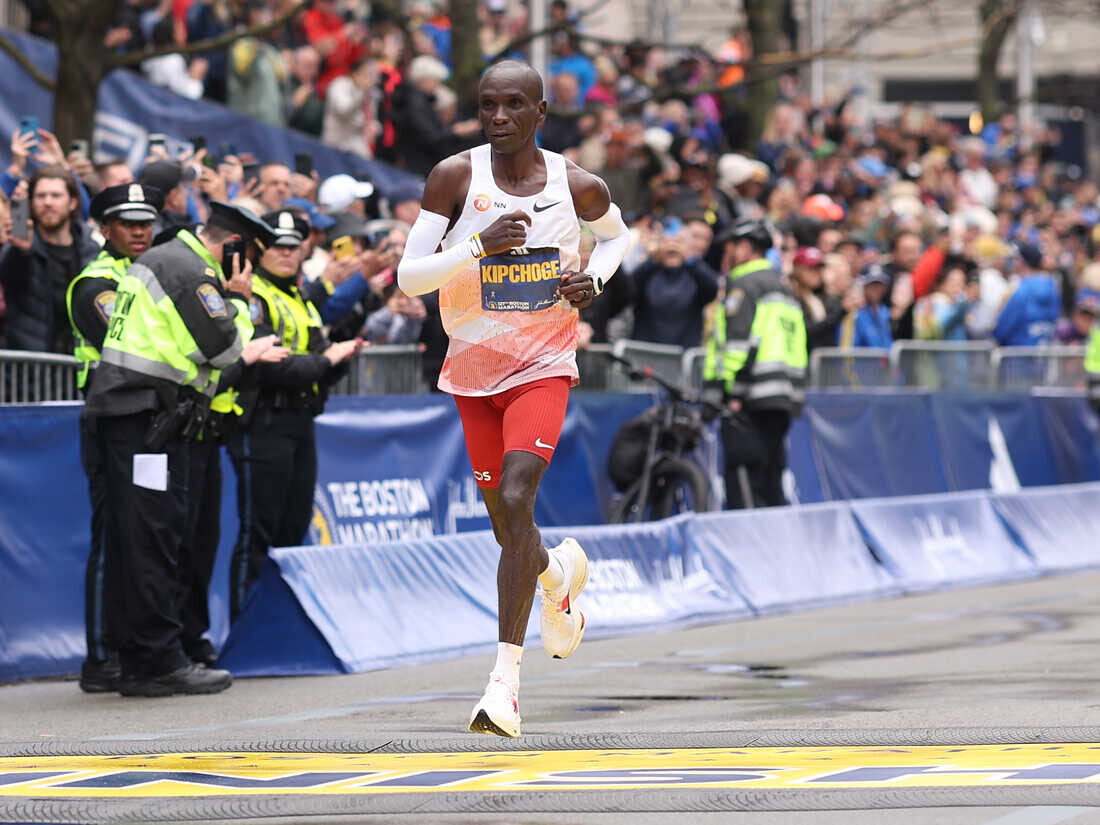
Though his debut in Boston didn’t go to plan, he said he would “absolutely” consider returning to run again. However, this will likely not be in 2024 since Kipchoge will probably aim to run in the Paris Olympics, which will take place too close to Boston’s April schedule for him to be at his fitness peak. He is the two-time defending Olympic gold medalist.
Kipchoge also released a statement following the race on Monday in which he congratulated eventual winner (and fellow Kenyan) Evans Chebet.
“I live for the moments where I get to challenge the limits. It’s never guaranteed, it’s never easy,” Kipchoge said. “Today was a tough day for me. I pushed myself as hard as I could but sometimes, we must accept that today wasn’t the day to push the barrier to a greater height.
“I want to congratulate my competitors and thank everyone in Boston and from home for the incredible support I am so humbled to receive,” he added. “In sports you win and you lose and there is always tomorrow to set a new challenge. Excited for what’s ahead.”
(04/19/2023) ⚡AMPby Hayden Bird
Boston Marathon
Among the nation’s oldest athletic clubs, the B.A.A. was established in 1887, and, in 1896, more than half of the U.S. Olympic Team at the first modern games was composed of B.A.A. club members. The Olympic Games provided the inspiration for the first Boston Marathon, which culminated the B.A.A. Games on April 19, 1897. John J. McDermott emerged from a...
more...Australian man runs marathon while pushing lawnmower
As runners tied up their shoelaces and stretched their calves for Sunday’s Newcastle Marathon in New South Wales, Australia, one local dad checked his wheels and made sure his catcher was secure, pushing a Victa Corvette 400 gas-powered lawnmower for 42.2 kilometres while raising money to help Australia’s Youth Mental Health Foundation.
The idea to do something special came to Daniel Robinson while he was mowing his lawn. He has previously done other challenges to raise money for the same foundation; for example, last year, he spent 12 hours running up and down Newcastle’s Mount Tomaree, doing 40 push-ups at the top, on every lap.
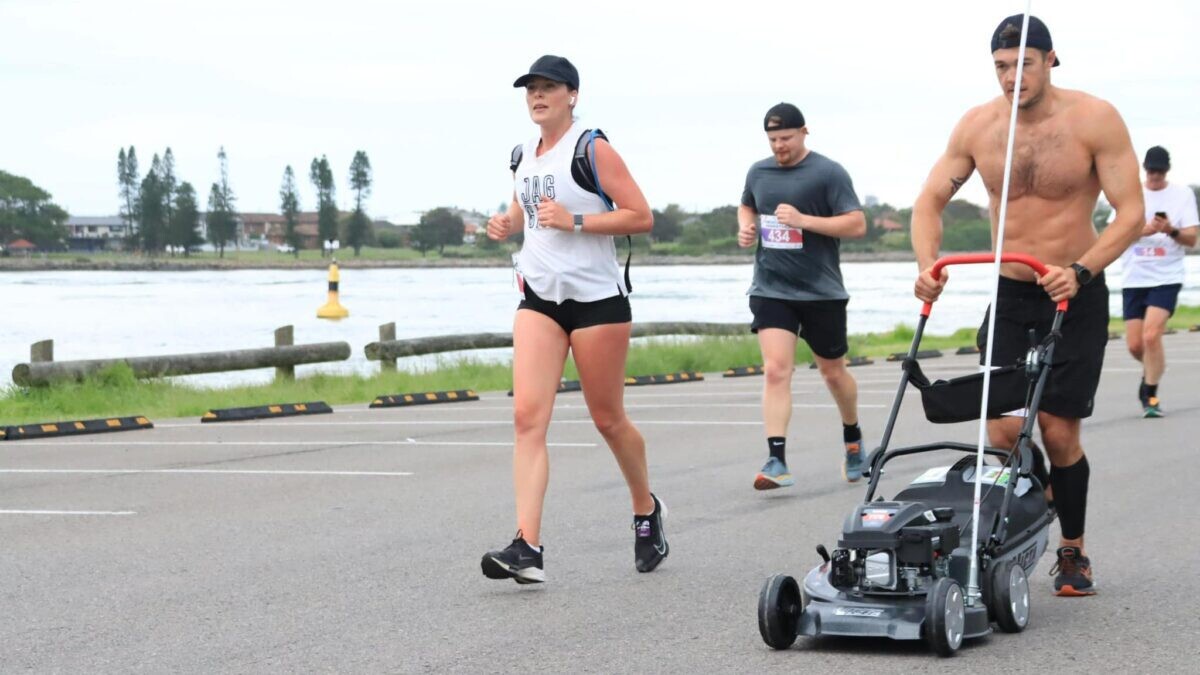
“I wanted to run a marathon while doing something that I haven’t seen before,” said Robinson to local news. “It took me a while to think it up, but I loved the idea of pushing myself and my lawnmower.”
Robinson finished the marathon in a time of 4:04:37, crossing the line in 198th place out of 500 runners. Robinson said the hardest part was making sure he didn’t trip or “mow” anyone down.
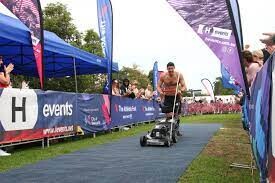
Youth mental health is an important cause close to Robinson’s heart. “Each year, one in four young people experience a mental health issue, and 75 per cent of mental health disorders emerge before a person turns 25,” said Robinson. “Sadly, suicide is still the leading cause of death for young people in Australia.”
Robinson’s goal is to raise $20,000 for Australia’s Youth Mental Health Foundation, he’s currently about half of the way there.
(04/19/2023) ⚡AMPby Marley Dickinson
Former world record holder disqualified for taking a car during 50-mile race
Scottish ultrarunning record holder Joasia Zakrzewski has been stripped of a recent third-place finish at a British 50-miler after it was discovered that she rode in a car for about two and a half miles mid-race. Zakrzewski told the BBC that while she did hitch a ride with a friend, her decision to do so “wasn’t malicious.” Zakrzewski is the owner of multiple Scottish and British ultrarunning records, and she ran the 48-hour world record in February (although her distance was bettered by Camille Herron in March).
Zakrzewski lives in Australia, and she reportedly travelled last-minute to the U.K. for the April 7 Manchester to Liverpool ultramarathon, arriving the night before the race. As she told the BBC, she got lost on the course halfway through the race, at which point she began dealing with leg pain that eventually became too much to handle. She saw a friend on the sidelines and decided to pull out of the run, hopping in his car and riding to tell the race marshals she was done for the day.
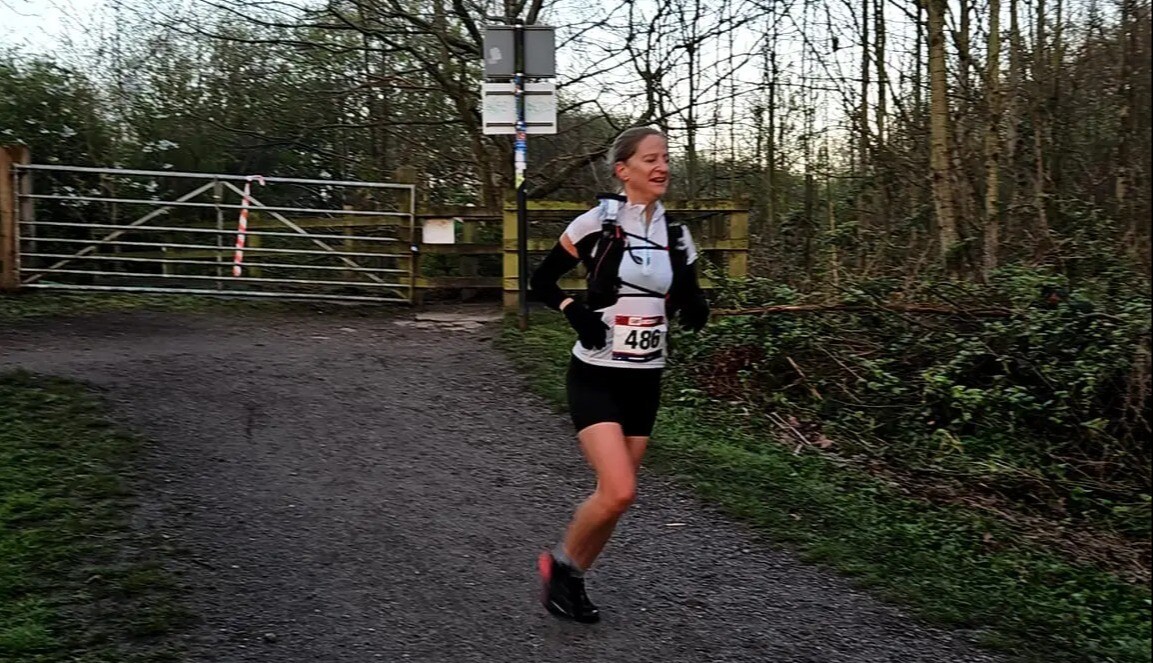
“When I got to the checkpoint I told them I was pulling out and that I had been in the car,” Zakrzewski said. “They said, ‘You will hate yourself if you stop.'” Zakrzewski agreed and carried on, later telling the BBC that she only planned to finish the race non-competitively.
After crossing the line in third place, however, Zakrzewski was given a medal, a trophy and she was asked to pose for podium pictures. She didn’t stop to let anyone know she had cut the course, but Zakrzewski said that was not intentional.
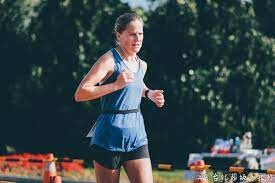
“I made a massive error accepting the trophy and should have handed it back,” she said. “I was tired and jet-lagged and … I was feeling unwell and spaced out and not thinking clearly.” Zakrzewski’s car ride blip was not noticed immediately, but race director Wayne Drinkwater was eventually tipped off that she had received an “unsporting, competitive advantage during a section of the event.”
Drinkwater and his team checked the race tracking data and took statements from other competitors, before moving forward with Zakrzewski’s disqualification. As The Guardian reported, a GPS file shows that Zakrzewski covered a mid-race mile in one minute and 40 seconds.
With Zakrzewski disqualified, a runner named Mel Sykes is the new third-place finisher at the race. “I’m an idiot and want to apologize to Mel,” Zakrzewski said. “I would never purposefully cheat.”
(04/19/2023) ⚡AMPby Ben Snider-McGrath
Peter Mwaniki again wins the 20th edition of the KATA monthly time trial in Thika Kenya clocking 29:17.5
The 20th edition of Kenyan Athletics Training Academy (KATA) time trial were held in Thika Kenya this Wednesday with on-form Peter Mwaniki and Fredrick Kiprotich retaining their titles.
Peter bettered his 29:42.6 attained in February to clock 29:17.5 on the 10Kilometres Course while Fredrick, who finished first in last month’s 5,000metres on the track, defended the 5Kilometres class after timing 15:34.7.
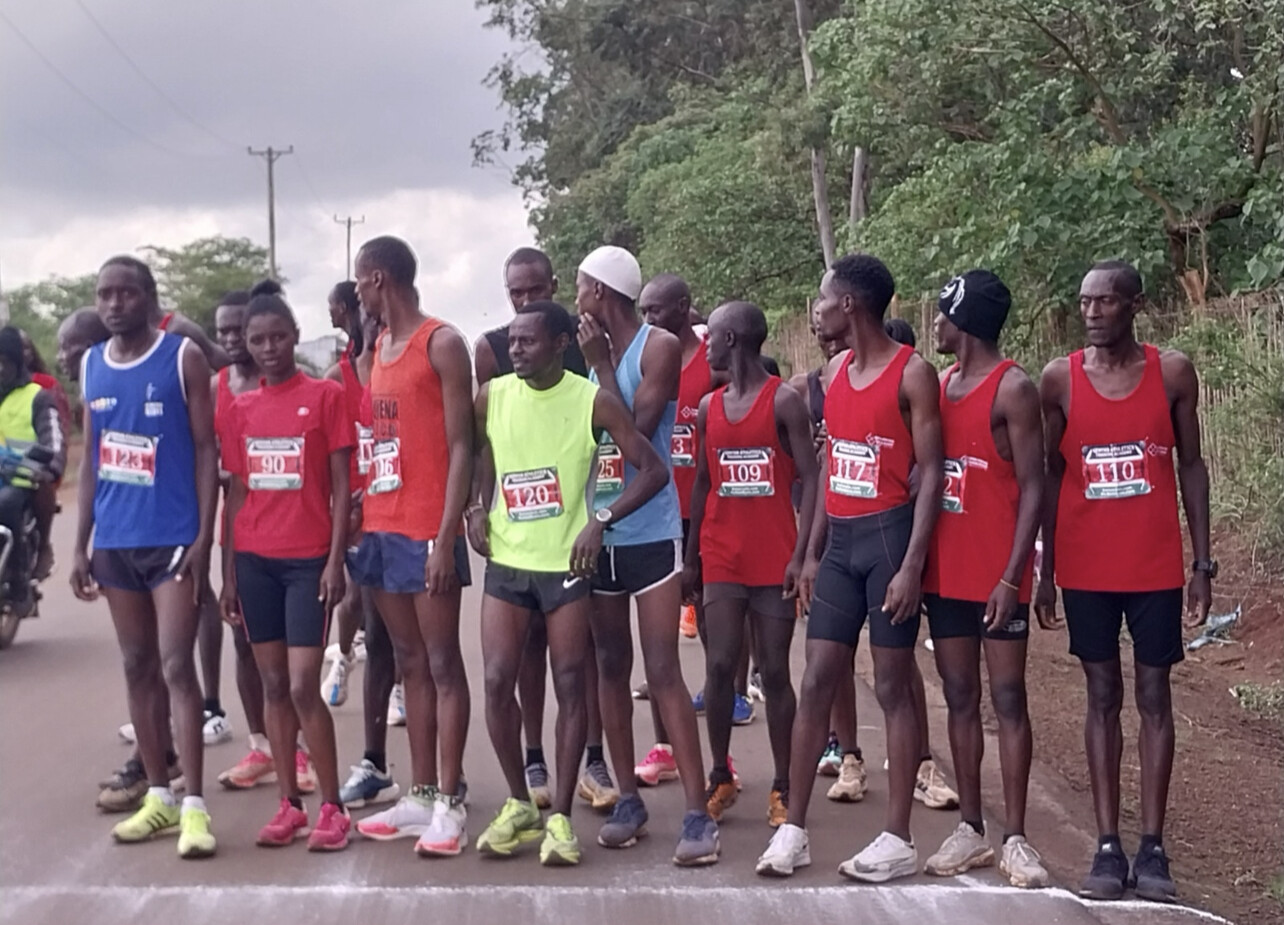
Zakaria Kirika followed the winner in the 10Km clocking 29:58.4 with 3rd-placed Raphael Gacheru clocking 30:54.2.
Peter Mburu and Evans Kiguru followed in 31:04.5 and 31:08.1.
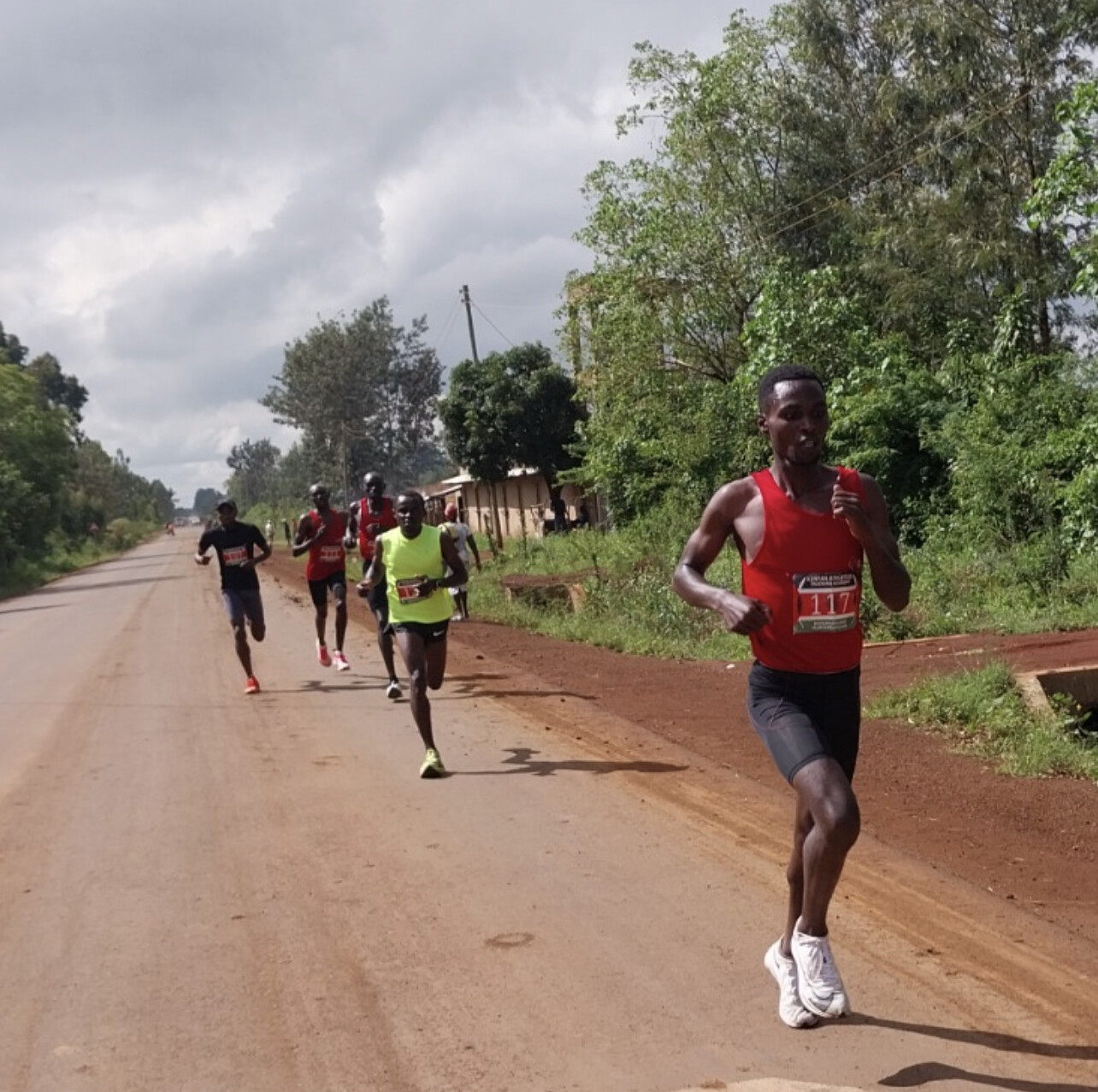
In the 5Kilometres, visiting athlete Daniel Kishoyan from Narok came second in 15:48.5 while upcoming John Mutiso,19, clocked 16:49.0 during the trial held at the traditional Mang’u-Bob Harries Road, just 5Km from KATA.
In Ladies, Marathoner Kellen Waithera,36, improved her time from 36:38.3 to 34:36.3 while Caren Chepkemoi posted 38:08.2 for second place.
Paul Ng’ang’a clocked 35:21.1 to come first in the 40-44 master’s class while Charles Ndirangu, 60, clocked an excellent 36:26.9 to win his category.
20th KATA TIME-TRIAL
10Kilometres
1.Peter Mwaniki 106 24 29:17.5
2.Zakaria Kiriki 124 22 29:58.4
3. Raphael Gacheru 117 24 30:54.2
4. Peter Mburu 123 26 31:04.5
5. Evans Kiguru 115 27 31:08.1
6. Simon Mwangi 107 21 31:08.5
7. Simon Ngumbao 120 28 31:50.3
8. Boniface Mungai 111 24 32:06.8
9. Anthony Mukundi 84 35 32:12.9
10.Eliud Muthike 127 28 34:22.5
11. Kellen Waithera 121 36 34:36.3
12. Paul Ng’ang’a 110 42 35:21.1
13. Charles Ndirangu 118 60 36:26.9
14. Caren Chepkemoi 89 21 38:08.2
15. Chris Kamande 114 38 48:53.6
5Kilometres
1.Fredrick Kiprotich 108 23 15:34.6
2. Daniel Kishoyan 93 21 15:48.5
3. John Mutiso 119 19 16:49.0
4. Amos Chirchir 122 23 16:52.7
5. Lawrence Maina 112 24 18:14.3
6. Francis Kariuki 120 16 18:20.8
7. Lewis Mwangi 109 16 18:22.9
8. Paul Kariuki - 24 19:00.0
9. Virginia Wanjiru 126 21 25:12.5
10. Hannah Njeri 90 23 26:08.2
(04/19/2023) ⚡AMPby Coach Joseph Ngure
KATA Time Trial Series
Welcome to the KATA Monthly Time Trial Held at the Kenyan Athletics Training Academy in Thika, Kenya, the KATA Monthly Time Trial is a unique and inclusive event designed to support runners of all levels in achieving their goals and showcasing their fitness. This event offers both 10K and 5K distances on an accurate, certified course, providing participants with...
more...Leslie Sexton flies to second straight Vancouver Sun Run crown
A star-studded lineup of runners raced the 2023 Vancouver Sun Run on Sunday, producing a pair of exciting 10K races won by John Gay and Leslie Sexton. Gay won the men’s race in a tight battle with 2019 Sun Run champion Justin Kent, crossing the line in 29:40. Sexton successfully defended her title from 2022, winning in 32:22. The race was a massive success, as more than 30,000 runners took to the wet and rainy streets of Vancouver to test their limits.
Two in a row for Sexton
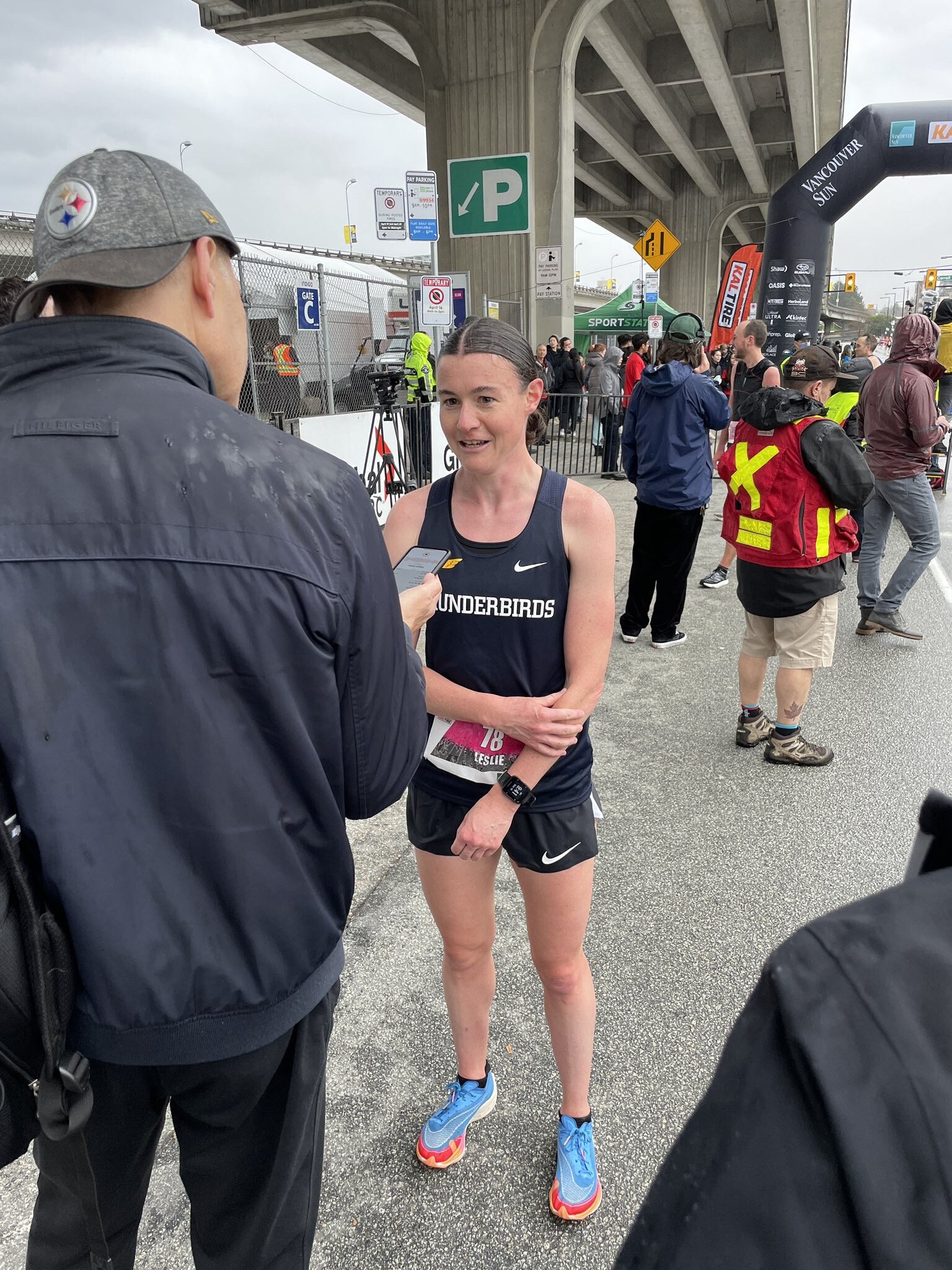
Sexton won the 2022 Vancouver Sun Run in 32:27, and this year she not only repeated as champion, but also improved on her previous winning time by 15 seconds. As she told the Vancouver Sun after the race, “I tend to run well in the rain. I saw the forecast and I knew this was a strength for me, and I’m just going to roll with it.”
Sexton ran near identical splits over the two halves of the race, running the first 5 km in 16:12 and the second in 16:10. This even pacing and negative split helped her catch Olympic marathoner Malindi Elmore, who got out to a hot start, passing through the 5 km checkpoint in 16:04. Over the closing 5 km, Sexton didn’t panic or force things as she attempted to draw Elmore back in, instead sticking to a regular pace and trusting in her fitness.
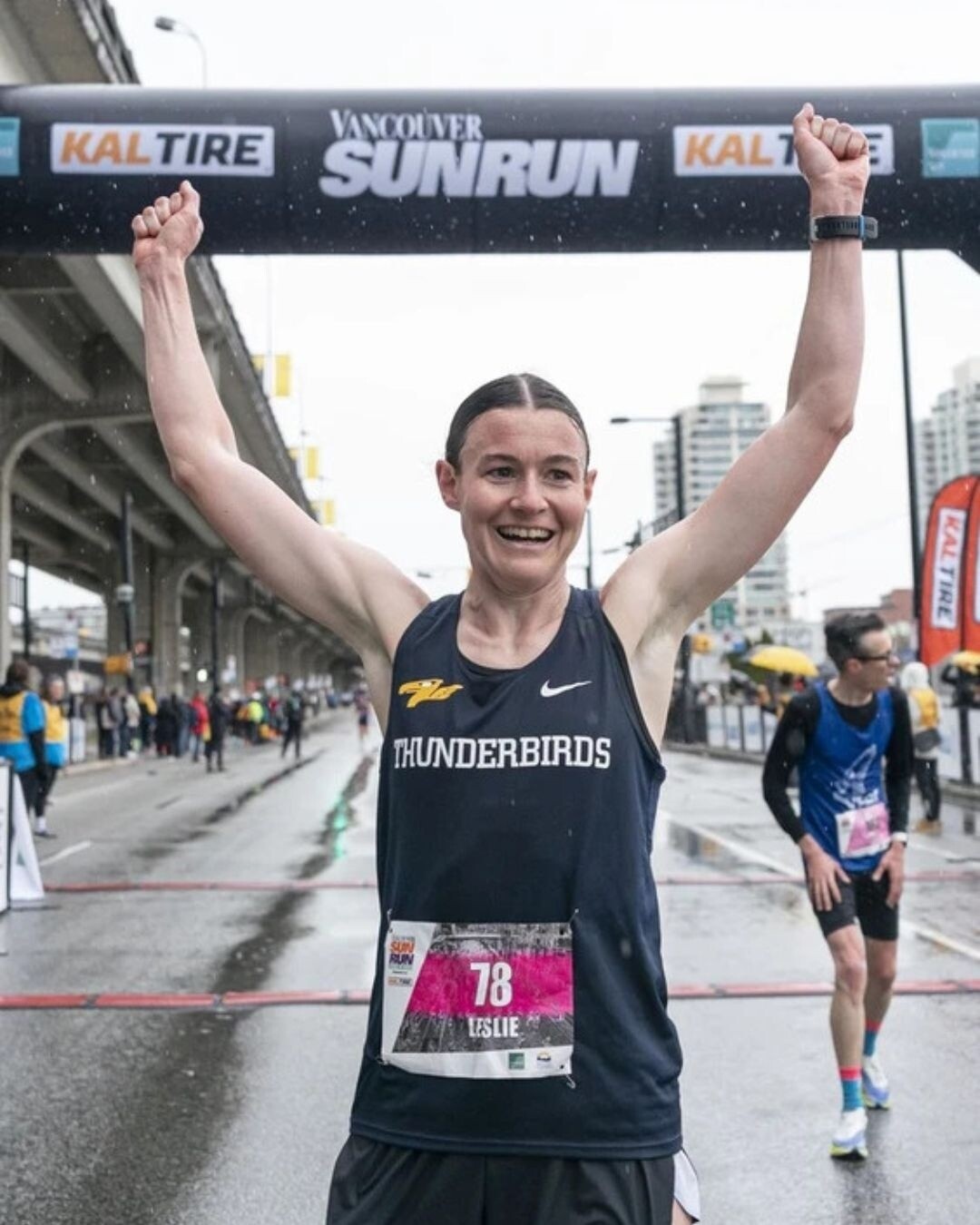
“Last year, I went out too fast,” Sexton told the Sun. “The course really chewed me up over the second half [in 2022] and, this year, I just let the top three go and they gapped me a bit. I just worked my way past people as it went on.” By 7 km, Sexton had caught Elmore, and she made her passing move on a slight uphill around a kilometre later.
Sexton continued to pull away in the final couple of kilometres, ultimately crossing the line in 32:22, 13 seconds in front of Elmore. Cleo Boyd rounded out the podium with a final time of 32:55.
(04/19/2023) ⚡AMP
by Running Magazine
Vancouver Sun Run
The Vancouver Sun Run has been Canada's largest 10K road race since its inception in 1985. Founded by former Canadian Olympians Dr. Doug and Diane Clement along with Dr. Jack Taunton, the run's purpose was to promote the benefits of running to improve health and fitness as well as support elite amateur athletics. The first run attracted 3,200 participants. Through...
more...Natasha Wodak withdraws from 2023 London Marathon
The Canadian women’s marathon record holder, Natasha Wodak, will not be racing at the 2023 London Marathon this Sunday. The 41-year-old announced on her Instagram Tuesday that she has been trying to train through injury and sickness but has not been 100 per cent, which has forced her to withdraw.
“I am absolutely gutted to announce I’ve pulled out of Sunday’s London Marathon,” wrote Wodak. “The last few days have been incredibly tough trying to decide what to do, but I am so grateful to all the people in my life that have reassured me that we have made the right decision.”
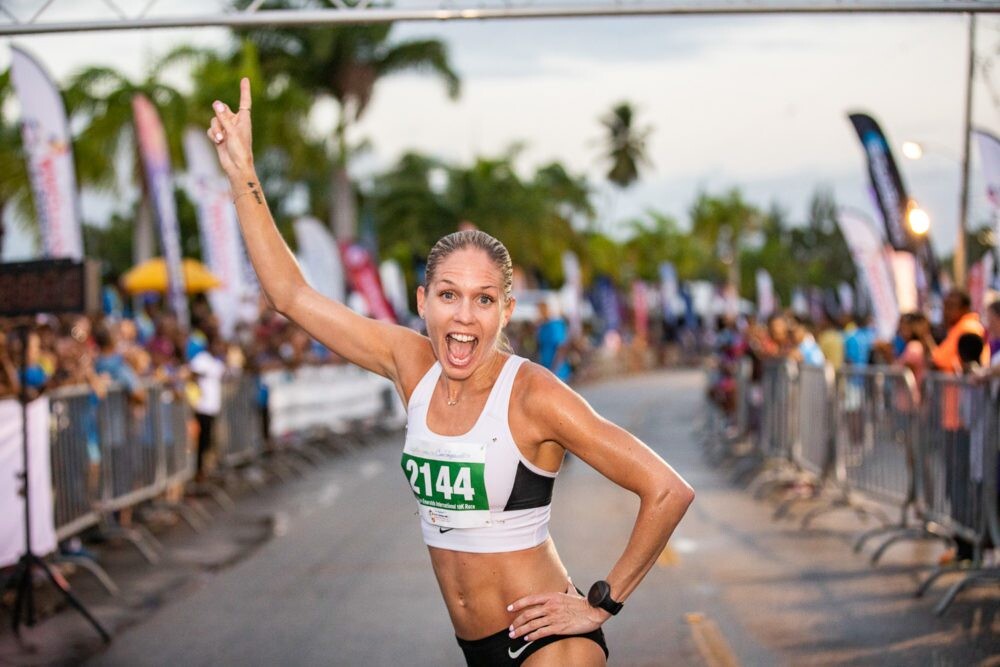
Earlier in her marathon training build, Wodak was dealing with two separate injuries, which resulted in her missing training. “We put up a great fight when injuries tried to derail us,” wrote Wodak. Two weeks before the marathon, I started having stomach issues, and I’ve unfortunately been sick since. I have not been able to eat much, and we all know you can’t race a marathon under-fuelled.”
Last year at the 2022 Berlin Marathon, Wodak set a new Canadian marathon record of 2:23:12 with her 12th-place finish.
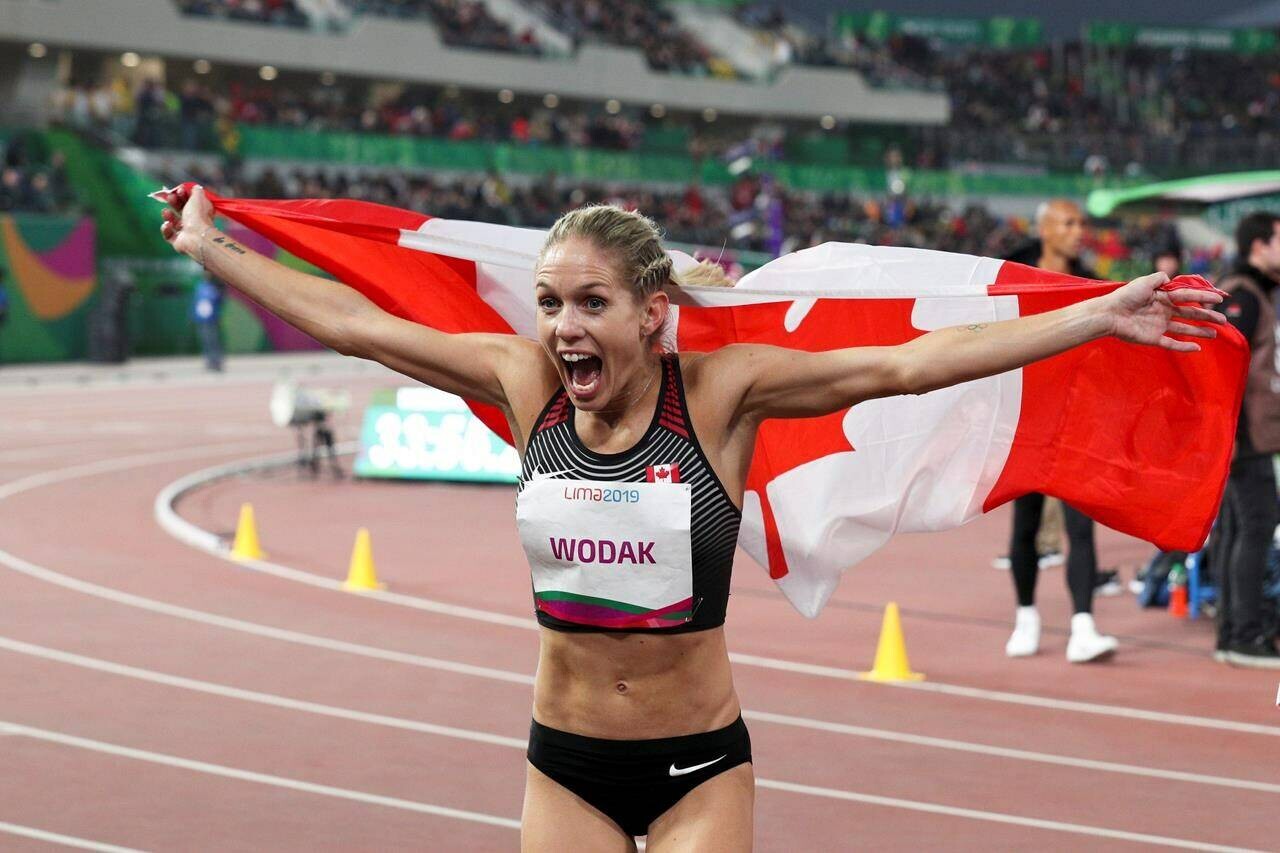
The two-time Canadian Olympian beat the previous record by a minute and 38 seconds, held by Malindi Elmore from the 2020 Houston Marathon (2:24:50).
Wodak was set to take on one of the greatest women’s marathon fields ever assembled, including Olympic champions Sifan Hassan and Peres Jepchirchir, plus the world record holder Brigid Kosgei and the marathon debut of Eilish McColgan.
Wodak remained optimistic about a return to the marathon, “Right now, I will take the time to rest and reset,” she said. “We have more races to come.”
With Wodak’s withdrawal, there will now be no Canadian elites at the 2023 London Marathon. Rory Linkletter was supposed to start in the men’s elite field but also had to withdraw from an IT band flare-up in late March.
(04/19/2023) ⚡AMPby Marley Dickinson
TCS London Marathon
The London Marathon was first run on March 29, 1981 and has been held in the spring of every year since 2010. It is sponsored by Virgin Money and was founded by the former Olympic champion and journalist Chris Brasher and Welsh athlete John Disley. It is organized by Hugh Brasher (son of Chris) as Race Director and Nick Bitel...
more...How quickly you can safely increase mileage?
There’s been a changing of the guard when it comes to injury-prevention metrics. The 10 per cent rule was once the predictor coaches used to assign programs and recommend the rate at which runners should increase their miles run.
However, there’s a new acronym in town. Introducing: ACWR (acute-to-chronic workload ratio), the new way to (successfully) up your mileage. As the weather gets nicer, many runners will be looking to up their mileage and get outside. While there are many factors that can have a bearing on likelihood of injury, mileage is certainly one of them–especially when mileage increases too quickly. Here’s how to up your mileage as safely as possible.
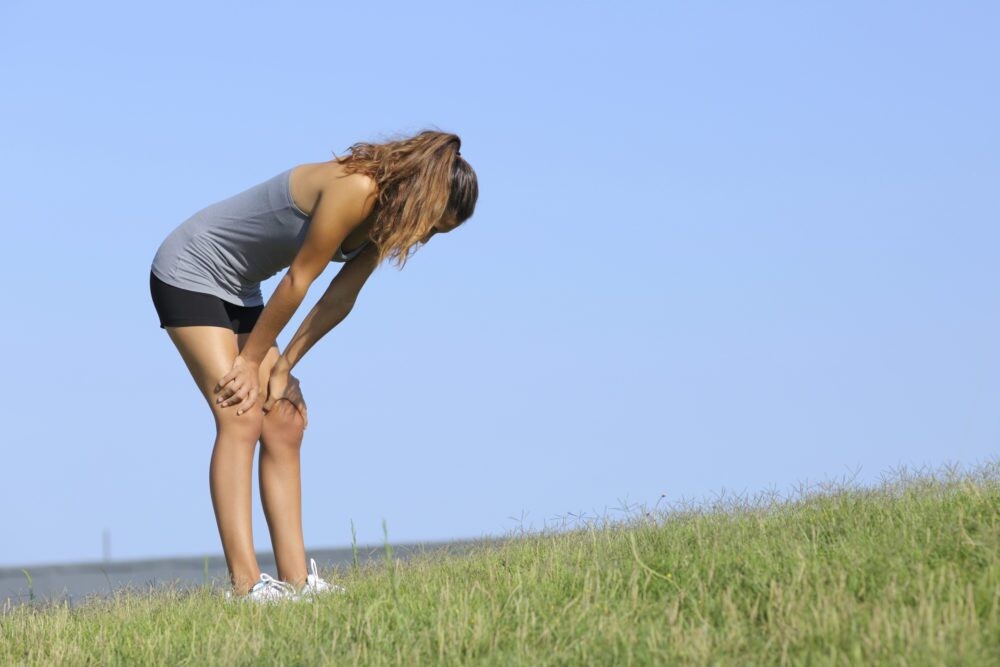
The 10 per cent rule
The 10 per cent rule was once known as the gold standard for increasing mileage and limiting the prevalence of injury. The basic principle was that a person’s training load shouldn’t increase by more than 10 per cent each week. So if someone was running 50K one week, the next week should be no more than 55K.

However, a recent paper out of the British Medical Journal, debunks the 10 per cent rule and suggests that novice runners can handle as much as a 20 to 25 per cent increase from one week to the next. Researchers also pointed out that the athlete really needs to be considered individually. For example, a runner who’s accustomed to high mileage can increase much faster than a new runner. Researchers suggested that, especially when it comes to well-trained runners, the 10 per cent rule is, at best, a guideline and not a rule.
Acute-to-chronic workload ratio
ACWR is the new rule, replacing the 10 per cent ‘guideline.’ The ACWR is an equation where the desired outcome is a score of 1.3 or under. Runners can divide their most recent week of mileage (or minutes run) by the average of their most recent four weeks of mileage (or minutes run).
Runners are identified as being higher-risk for injury if their score is 1.5 over or under 0.8 (with the sweet spot falling between those two figures). The 10 per cent rule only looks at the week before, whereas ACWR gives a slightly fuller picture and encourages runners to increase their miles at a reasonable rate.
While ACWR is an improvement on the 10 per cent rule, it’s not without its flaws as Alex Hutchinson points out in Outside Magazine, “In a new review in Sports Medicine, researchers from McGill University led by Ian Shrier sum up the case against it. In a way, the discussion reminds me of debates around the original ten-percent rule, where you have to weigh demonstrable flaws against the sense that this ratio really does tell you something useful in the real world.”
What’s your life looking like?
Neither the 10 per cent format nor ACWR are absolute rules, especially not without context of the runner’s background in the sport and life situation. It’s important to asses your circumstances when considering your training load. Things to think about are: your sleep habits, your previous training history, your work load in your professional life, your family demands and your general stress levels. All of these factors play into causing (or preventing) an injury.
A study out of The Institute for Scholastic Sport Science and Medicine found that in adolescent student-athletes (grades seven to 12), getting under eight hours of sleep led to a 70 per cent increase in the likelihood of injury. And runners who push through fatigue and life stress can easily develop symptoms of overtraining. If you find yourself planning a training block, make sure you factor your life into that plan–chances are you’ll find that training more rewarding if you do.
(04/18/2023) ⚡AMPby Running Magazine
Recovery Running: What’s the Point?
This blog discusses the reasons why recovery running is an important part of any athlete’s training program and reflects on insights that the author noticed during a training camp in Iten, Kenya.
A small village called Iten in rural Kenya has produced some of the finest distance runners in the history of the sport; Olympic champions, world record holders and professional athletes choose to make this their training ground. It’s not uncommon to bump into someone on the street who can casually talk about their marathon pb of 2.08 or below who are far from boasting, or see a group or 20 athletes training at the track, all of whom have sub 28 minute 10k’s to their name.
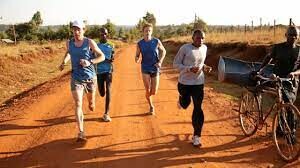
Would it then surprise you to see these same athletes jogging along the dirt trails at 9:00/mile pace?
We hear stories of top Kenyan athletes running well in excess of 100 miles per week but while that is indeed true for many individuals, there is still an overwhelming consensus that quality beats quantity. To train at ones best the body must be in good physical condition and the Kenyans are well aware of this fact. One aspect they believe is an important factor in this is recovery runs, and these are taken very seriously.
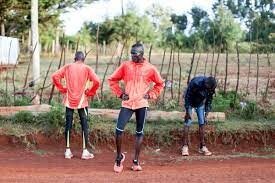
What is a recovery run?
When you train at a high intensity your muscles accumulate blood lactate, a by-product of anaerobic respiration. While we won’t delve into the science during this article it is important to understand that hard training takes its toll on the body and that without taking the time to recover it is extremely difficult to adapt to the stresses of exercise leading to fatigue, “burnout” and ultimately injury, not to mention that you won’t be getting the benefits of the hard training anyway.
A recovery run is a relatively short run at a very comfortable pace – typically under 60% of your maximum HR. These have a number of benefits but they may not be the ones you thought of. It is commonly taught that recovery runs will aid the removal of waste products from the body after hard training, however, there is in fact very little scientific evidence supporting this. Studies have shown that even after extremely taxing workouts, almost 100% of excess accumulated lactate is metabolised or removed from the body within 1 hour of the workout. Nor has there been any research indicating that recovery runs promote the repair of damaged tissues, restore glycogen reserves in the muscles or elicit any other physiological response that aids the recovery process…
So what’s the point?
At approximately 60% of maximum HR your heart reaches its maximum stroke volume. This means that despite running with a significantly reduced rate of energy expenditure, your heart muscle is contracting with as much force as it possibly can on each beat. Even at this easy pace you are training your heart muscle without fatiguing the rest of your body.
At a cellular level running at this pace stimulates growth of the mitochondria (the organelle responsible for energy production), increase capillary capacity and the ability to deliver oxygen to the muscles.
There are also several neuromuscular benefits. Although you may think of running as a task that you don’t need to “think” about, your brain is still in control of your limbs. Running at a slow pace allows you to develop neuromuscular pathways by focussing on correct running technique.
I think the third point above has particular relevance to Kenyan running culture. It is no coincidence that the Kenyans you see on TV look so fluent and graceful in the way they move. Take David Rudisha’s 800m world record for example; he front ran 2 laps of the track without breaking form, for sure he was working hard but he certainly didn’t look like it. Kenyans use their slow runs to work on their form. They are consciously thinking during the run; how their feet contact the ground, how it feels to breath, where their arms are positioned, how their heads are held etc. It’s very difficult to consider these things when running a hard track session, but when the time comes to run fast they don’t need to think about it, it’s been ingrained into their system.
So in fact, during a ‘recovery run’ you are still training your body; you are still stressing certain systems and certain parts of the body that will actually lead to improvement. But while doing so, since you are operating at an effort well below your max, your body can still continue it’s natural recovery process.
The Experts Viewpoint:
Last December, I joined a run with a group of athletes at St Patricks High School in Iten. I arrived not knowing what the workout would be. However having heard terrifying stories about how quick these guys were I was pretty nervous. What followed was very surprising. We did a warm up of some reaction games that involved jumping over a line painted on the ground and followed it with a 25 minute jog, in single file around a football field at approximately 10-12 minutes per mile pace. Legendary coach Brother Colm O’ Connell was leading the session and I asked what the point was. Otherwise I felt like I’d miss an opportunity to train hard amongst some of the worlds best runners. He replied “It’s so you can think”. I was able to think about where my feet were landing and how I was running compared to guy in front of me, how my breathing sounded compared to the guy behind me.
Of course these guys work incredibly hard when it’s time to do so, but they also take the time to think about their bodies, something that is often overlooked in the western training culture!
So the take home message may well be that these runs themselves may not directly influence ‘recovery’, but they allow you to continue to improve your fitness and work on your form, whilst you go through the natural recovery process. Which leads me to ask, if you can continue to get better whilst not compromising your recovery then why not?
(04/18/2023) ⚡AMPby Callum Jones
Dave McGillivray Completes 51st Consecutive Boston Marathon
After all other participants had long finished their Boston Marathon journeys, Dave McGillivray crossed the finish line at 7:28 p.m. yesterday evening. McGillivray oversaw the course throughout the race earlier in the day, taking runners across the starting line and helping to ensure their safe arrival on Boylston Street. This is McGillivray’s 51st consecutive completion of the Boston Marathon and the 36th of which he has completed at night after seeing to his race day duties.
“It doesn’t feel so long ago that I was 18 years old, sitting on the curb at mile 21, wondering if I would ever get a chance to finish the Boston Marathon. If I could go back and tell my younger self that he goes on to finish that day and 50 more editions, I can’t imagine his reaction,” said McGillivray. “I’m grateful for the more than a dozen friends and colleagues who joined me on the journey to the finish line today. I had to dream big to get to this moment, and I couldn’t do it without my community and my family that support me every step of the way.”
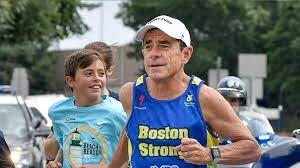
The weekend featured two other special moments for McGillivray. On Saturday, Team With A Vision inducted McGillivray into their hall of fame during a dinner at the Westin Copley Place. Team With A Vision pairs blind and sighted runners together to complete endurance races across the country. Their efforts support the Massachusetts Association for the Blind and Visually Impaired, which delivers professional, peer, and volunteer support to over 1,200 individuals each year, giving them the support they need to live with dignity and independence. All funds raised support MABVI’s statewide vision rehabilitation services, including 34 low-vision support groups, Assistive Technology and Training Centers, and 400 volunteers matched 1:1 with blind individuals.
In addition, McGillivray was a featured speaker during the Boston Marathon Expo, where World Marathon Challenge champion Becca Pizzi interviewed him about his long history with the race. He shared photos, videos and stories with the crowd, and signed copies of his books for attendees at the Dave McGillivray Finish Strong Foundation booth following the presentation.
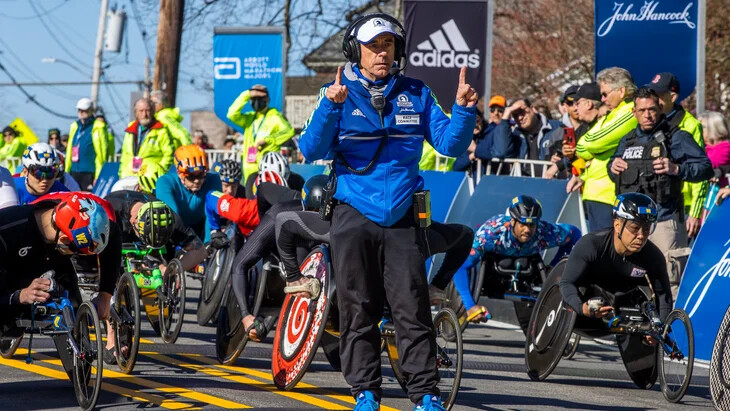
McGillivray is one of just a handful of runners who have marked half a century or more of completing the world’s most famous marathon. Alongside his rich connection to this race, his running resume includes completing the World Marathon Challenge (seven marathons in seven days on seven continents,) nine Ironman Triathlon World Championships, a 1,250-mile run along the U.S. East Coast in 1980 to again benefit the Jimmy Fund, a 24-hour run (120 miles,) a 24-hour bike (385 miles,) and a 24-hour swim (27 miles.) He triathloned around the six New England states by swimming one mile, biking 80 miles and running 20 miles every day for 32 consecutive days. Over the span of his life, he estimates he’s run more than 150,000 miles.
For more information on Dave McGillivray, visit www.davemcgillivray.com and follow him on Facebook, Instagram, LinkedIn and Twitter.
ABOUT DAVE MCGILLIVRAY
Running legend Dave McGillivray has increased the self-esteem of millions of people through his work as an entrepreneur, philanthropist, motivational speaker, author, and athlete. Dave is best known for his athletic feats including his 80-day trek across the United States, running the 3,452 miles from Medford, Ore., to Medford, Mass. in the summer of 1978 to benefit the Jimmy Fund. In addition, he’s received great acclaim for directing or consulting on more than 1,400 events throughout the world including the Boston Marathon, the Olympic Marathon trials, and the Olympic Games. For more information on Dave McGillivray, visit www.davemcgillivray.com and follow him on Facebook, Instagram, LinkedIn and Twitter.
(04/18/2023) ⚡AMPby Running USA
Boston Marathon
Among the nation’s oldest athletic clubs, the B.A.A. was established in 1887, and, in 1896, more than half of the U.S. Olympic Team at the first modern games was composed of B.A.A. club members. The Olympic Games provided the inspiration for the first Boston Marathon, which culminated the B.A.A. Games on April 19, 1897. John J. McDermott emerged from a...
more...Sara Hall set a new American master record in Boston
Sara Hall just set a new American Record in the Marathon for the Masters division.
Hall now 40 years old finished the Boston Marathon in 17th place in 2:25:48.She of course won her division.Old American record was 2:27:47 by Deena Kastor in 2015.
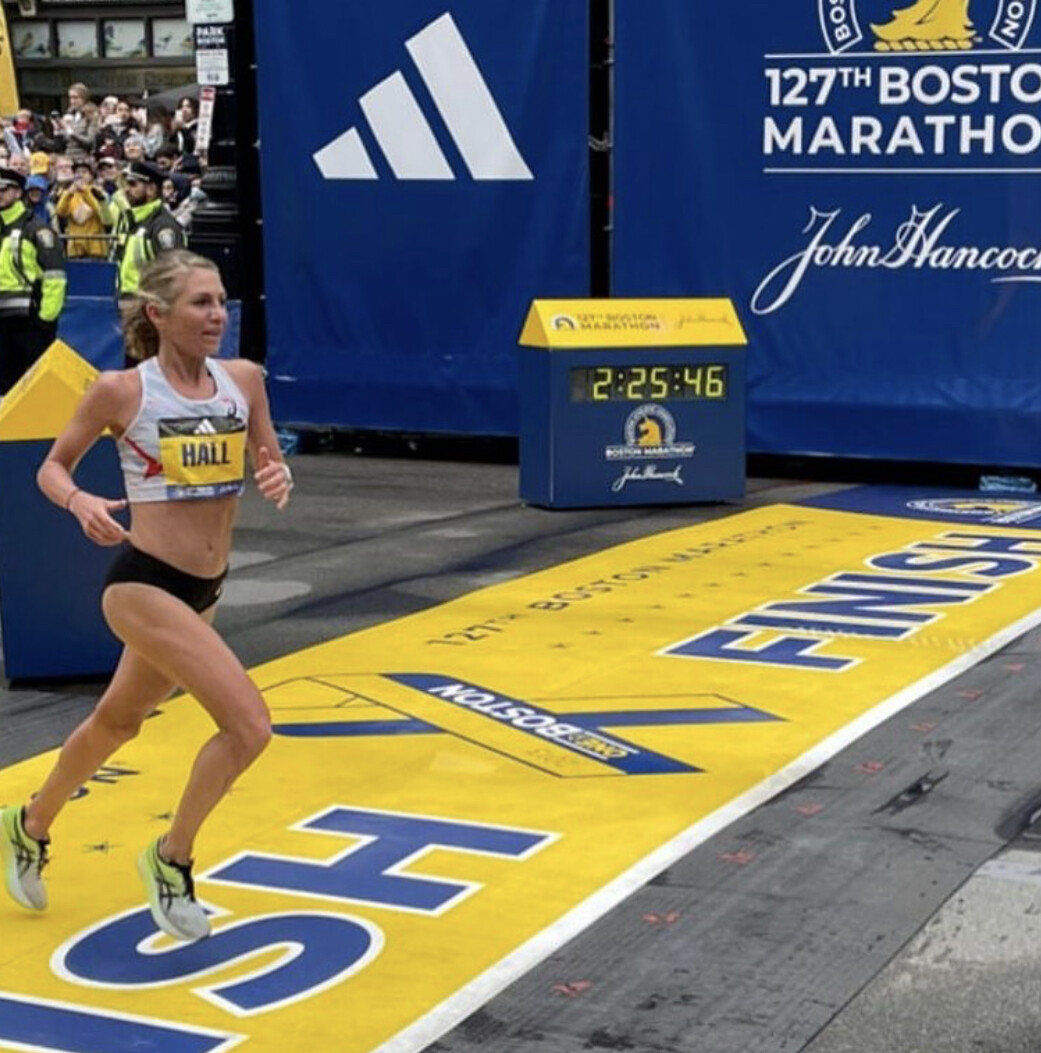

Boston Marathon
Among the nation’s oldest athletic clubs, the B.A.A. was established in 1887, and, in 1896, more than half of the U.S. Olympic Team at the first modern games was composed of B.A.A. club members. The Olympic Games provided the inspiration for the first Boston Marathon, which culminated the B.A.A. Games on April 19, 1897. John J. McDermott emerged from a...
more...How to set and achieve your running goals
If you want to improve in anything, you have to have an idea of where you’re going. Hence, the importance of setting goals. This is especially true with running. Without goals, it can be easy to avoid workouts, miles, and progress. Set a clear idea of what you want to accomplish, and you’re much more likely to get there.
In this article, we’ll cover everything that you need to know about goal setting as it relates to running, including why you should set goals, how to do it, and ways to achieve your running goals.
WHY YOU SHOULD SET RUNNING GOALS
What do you want out of running? For some, just getting out and running is enough. And that’s a 100% acceptable approach to running. For others, though, progress is a key motivator. If you are clear with yourself about what you want from running, it will be easier to stay on that path. Undertaking running mindlessly, without intention, is a recipe for finding yourself in a motivation-killing rut. This is why you should make goals.

First, goals give you something to achieve. Goals don’t have to be outlandish or newspaper-worthy. Set small, achievable goals. It could be as simple as you want to get outside and run at least a mile every day. It could be that you want to run three times a week. These are not ambitious, long-term goals like running a sub-3-hour marathon. But they still express why you run.
Second, goals will guide your training. If you want to run a mile every day, that’s a pretty clear training plan. However, you’ll have a completely different training plan if you want to run a sub-3-hour marathon.
Finally, goals can help motivate you to get out of your comfort zone. If you want to do something big, you have to change things up. Goals can help you do that because you now have an end in mind, and you just have to figure out the means to do it.
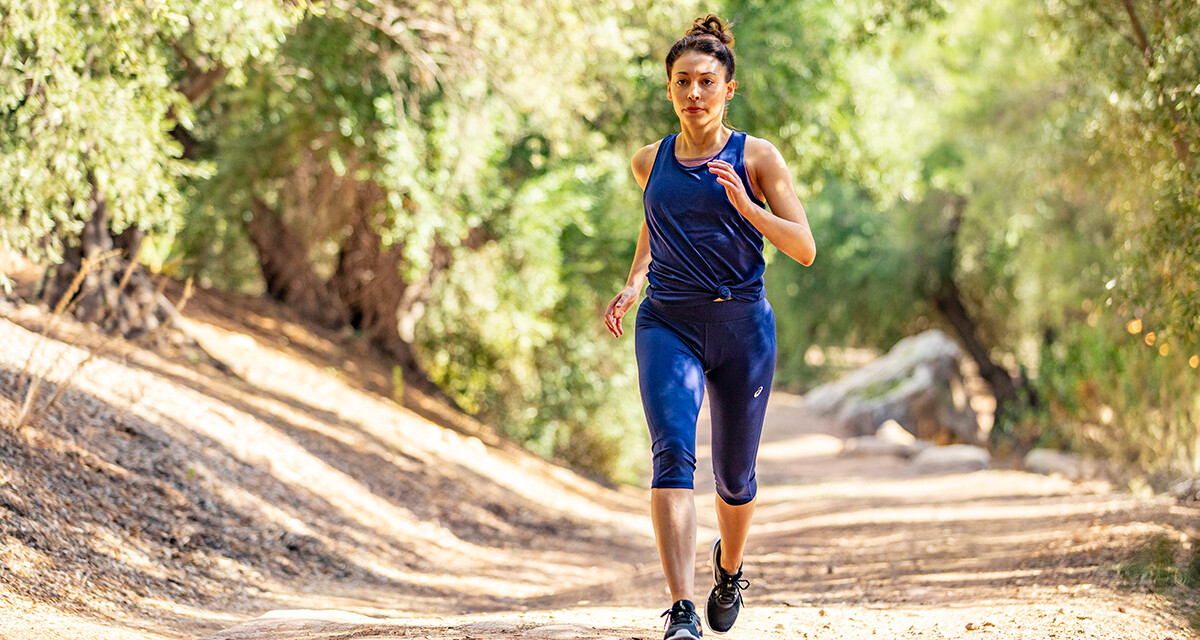
TYPES OF RUNNING GOALS
The most typical running goal is a race. So many people have decided that they want to get off the couch and run a 5k. Or they decide to hunt bigger game and commit to something that seems impossible at the time, like a marathon.
Sometimes it happens that people set a goal, sign up for a race, and then don’t follow through. But if you have support from friends and family, you’ll end up running the race like you planned.
The problem with this type of goal, though, is what about after the race is done? Now that you’ve run a marathon, are you going to keep running? That is something that you have to figure out for yourself.
I set a goal of running a half marathon. And I was successful! Afterwards, one of my friends encouraged me to not stop running there. He guided me to set new running goals as a new part of my lifestyle. His advice was sound.
If you don’t want to build goals around completing races, focus on something else that makes sense to your fitness journey. Set an ambitious pace goal. Try running for a longer distance, improving your running form, getting stronger running up hills. Goals can be as diverse as runner are. Even just being an overall more healthy person is an admirable goal to set.
Many experts suggest that process goals are better than outcome goals. In other words, running at least a mile every day is better than trying to run a 5:00 mile, for example.
The reason why is that you subconsciously tell yourself that you won’t be happy until you reach your outcome. Process goals are easy to reach as a matter of habit. Pretty much anyone can run a mile every day for a month, so success is very likely. Running a 5:00 mile on the other hand, while admirable, is very difficult to achieve. You might get all your workouts in, run everyday, and create a new habit in the process, while never actually reaching that performance mark.
But try running a mile every day and within several weeks, you’ll likely drop your mile time significantly. Plus, you’ll be putting less pressure on yourself to perform, and it will be more enjoyable. Win-win.
HOW TO MAKE SUCCESSFUL GOALS
If you want to be successful with your goals, you need to set SMART goals—SMART meaning specific, measurable, achievable, realistic/relevant, and time-bound. Many companies use this paradigm, and it works for running too.
SPECIFIC
Numbers are always a good way to be specific. For example, you could aim for running a 5k in under 30 minutes or running 10 miles in four weeks. If you want to do a process goal, you could say that you’ll run outside three times a week for at least 20 minutes each time.
You don’t have to use numbers, but you do want to make sure that you know when you have achieved your goal. For example, saying that you’ll run up a steep hill without walking is specific because you know when you have achieved it.
MEASURABLE
Just like being specific, a measurable goal helps you understand your goal, how to get there, and when you’ve achieved it. This means your goal should be linked to something tangible you can measure: a race, a distance, a time, a pace, a certain number of days, etc. Less effective are goals like “Get faster” or “Get healthier.” It’s hard to say when these goals have been achieved.
You should also come up with metrics to evaluate your goal because you need to be able to track your progress. If you want to run three days a week, are you running three days a week?
If you want to reach a certain pace, are you getting faster during your runs? It doesn’t have to be huge differences, but you need to know that you’re making progress. If you want to reach a certain distance, are you able to run farther?
ACHIEVABLE
This is probably the hardest aspect of goal-setting for runners. Make sure that you can reach your goal. It can be a stretch goal, but you don’t want to set the bar too high. If it’s too hard, you won’t achieve it. You might get frustrated and quit. If you can only run one mile right now, setting a goal to run 20 miles is likely to be frustrating. If you are running 12:00 miles, setting a goal to run a 5:00 mile is not the best next step. You may very well get to these points down the road. But you need some easier signposts along the way. Start with goals for running three miles, or a 10:00 mile, and then go from there.
This is the idea of breaking a longer-term goal down into smaller, less intimidating steps. If you’re a new runner and eventually want to run a marathon, start with other benchmarks that will set you on your way to the larger goal. For example:
Two-month goal: I want to run a sub-30 minute 5k. Four month goal: I want to run a sub-one hour 10k. Six month goal: I want to be able to run 10 miles. Eight month goal: I want to run a sub-2:30 half marathon. In ten months, I want to be able to run 20 miles. And in one year, I will run a marathon!
REALISTIC/RELEVANT
Your running goals need to be specific to you. Make sure that they match where you honestly are or could get. Aiming to join the U.S. Olympic team to run the marathon when your fastest pace is a 10:00-minute-mile is likely not realistic for you.
On the other hand, you don’t want to make it something too easy either. If you’ve already run a sub-2 hour half marathon, set a different goal this time like beating your previous record by PRing or feeling stronger at the end of the race.
It’s so easy to see race results, or statistics on social media and Strava that make you believe your goals should be set by other people’s performances. But ignore the noise. Run your own race, set your own goals, achieve your own results.
TIME-BOUND
You need to set a deadline. You could say that you want to run a 5k in less than 30 minutes, which you plan to achieve in two months. This gives you an end date—eight weeks—to know if you’ve met your goal.
Without a time frame, you may get distracted, lose motivation, or set new records for procrastination. Definitely give yourself the time you need to achieve your goals, especially reach ones, but don’t drag it out too long either.
HOW TO ACHIEVE YOUR GOALS
While having clear goals is extremely helpful in knowing the way forward, you do also have to take the next step. You won’t be able to reach your goals without work. Make sure that you’re willing to put in the work for your goal.
If you don’t really want to, then maybe consider setting a different goal that is better-suited to you. Just because other people want to run a marathon doesn’t mean that has to be your goal.
STAY CONSISTENT
The best thing you can do to meet your goals is to stay consistent. Write your runs into your calendar and keep them like you would a business meeting. They are important! Taking the time to write down what you’re going to do does make people more likely to achieve their goals.
Getting better at running is about doing it on a regular basis. This is why training plans are good. They lay out exactly what to do and when.
If you don’t have a training plan now, take the time to come up with one. Easier yet, find one. Garmin, Stava, MapMyRun, and other services all offer basic training plans for athletes of all levels. There’s a wide range of books on training out there as well. A plan will save you from doing it on the fly and being more likely to skip.
FOCUS ON THE PROCESS, NOT THE GOAL
Although this sounds counter-intuitive, it works like we hinted at above. If you focus on the steps to achieve your goal, meaning how you get to your goal, instead of the goal itself, you are more likely to reach it.
It’s about enjoying the journey and being grateful that you get to run and meet whatever goal you ultimately set for yourself. Whenever you do well at a race, it’s the race itself and the training leading up to it that makes crossing the finish line so exciting!
HOW TO DEAL WITH INJURIES
While it’s important not to slack off in working toward your goals, injuries are a different story. You need to be in tune with your body and pay attention to its needs. Cut back on training if you feel too fatigued or are experiencing unusual body pains—anything that may lead to injury.
It’s always a bummer to take a day or two off to rest, but you’re much better off doing it now as opposed to overexerting yourself and making the injury even worse, requiring you to take a week or more off of your training.
DON’T BE AFRAID TO FAIL
Finally, it’s important to get started. Even partially completing a big goal is doing more than just sitting on the couch. While setting a realistic goal is key, it’s also okay to set a goal that will be hard to achieve and come up slightly shy of meeting it.
If you fail, you can always try again. But at least you hit the ground running. Failure is how you can get better, because you can learn from your mistakes. Many new runners start off too quickly in the first mile of their races until they learn not to.
There’s a lot to be said for trying and failing. At least you were brave enough to try. You might want to set two goals. One that is your reach goal and one that is your still-hard-to-achieve-but-possible goal.
That’s what I did for running my first half marathon. I wanted a super-fast time for a beginner, but I gave myself a range of 15 minutes for a finish time. I got closer to the slower time than the faster time, but by pushing myself to the faster time, I was faster than I would have been otherwise.
CONCLUSION
Running is an amazing sport, and when you combine it with goal-setting, you can truly change your life. By setting realistic, but big goals, you’ll be able to give yourself a sense of accomplishment when you meet these goals and even exceed them!
I’d encourage you to get a pen and paper and write down some running goals as well as a training plan of how to get there, and then start. As they say, there is no better day than today! Good luck!
(04/18/2023) ⚡AMPby Rachel Basinger
Recovering Vincent Kipchumba out of London Marathon
Vincent Kipchumba may be down but certainly not out.
It has always been his dream to finally win the world's most prestigious marathon, but the 32-year-old distance runner will once again miss this year’s London Marathon scheduled for Sunday.
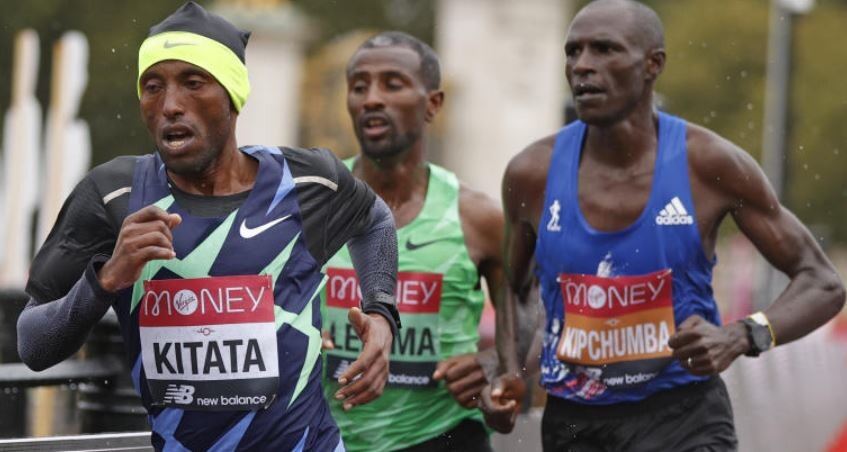
Kipchumba, who has finished second twice in the British capital, has revealed that he has just recovered from a knee injury, hence not ready for the grueling marathon.
This will be the second time Kipchumba is missing the London Marathon after a recurring leg frame injury knocked him out last year’s race.
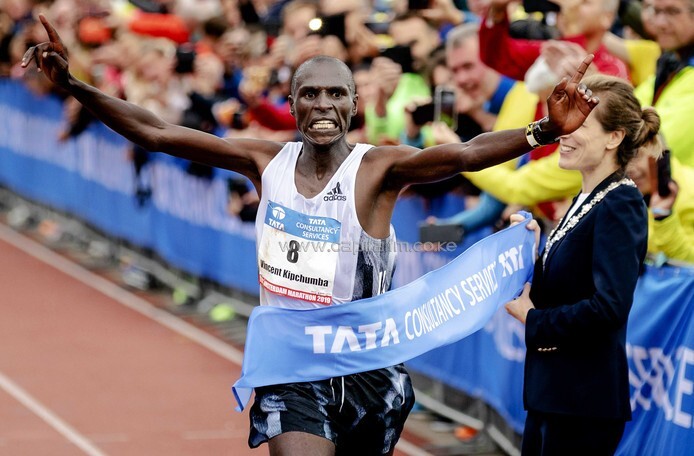
It’s the same injury that also saw the Kapsabet-based distance runner withdraw from the delayed 2020 Tokyo Olympic Games held in August, 2021.
“I was preparing so well, having completely healed from the frame injury only to go down again with a knee injury this time round,” said Kipchumba.
“I was really determined not to finish second again in London but this is so frustrating.”
Kipchumba had made a return after 17 months to finish 14th at the Ras Al Khaimah Half Marathon on February 18 this year before the knee injury crept in.
Kipchumba made his World Marathon Majors (WMM) debut in London in 2020 where he clocked two hours, five minutes and 42 seconds to finish second, losing to Ethiopia’s Shura Kitala by 16 seconds in 2:05:58.
Kipchumba, 2019 Amsterdam and Vienna Marathon champion, would return to the British capital the following year where he improved his personal best to 2:04:28, but still settled second again behind another Ethiopian Sisay Lemma, who clocked 2:04:01.
It would be his last marathon race as he stayed out of action for the better part of last year, only making his first appearance at Ras Al Khaimah in February this year.
"I will not lose hope and I believe my time will come. I will one day win in London and also get to represent Kenya for the first time too. I want to heal properly first before I can plan my next race,"said Kipchumba, who is handled by Claudio Berardelli.
Kipchumba’s exit now leaves three Kenyan men in the race- defending champion Amos Kipruto, Kelvin Kiptum and Geoffrey Kamworor.
The race will for the first time in history have two men, who have run inside two hours and two minutes- Ethiopia’s Kenenisa Bekele, who is the second fastest man in marathon history with 2:01:41 and Kiptum (2:01:53).
(04/18/2023) ⚡AMPby Ayumba Ayodi
TCS London Marathon
The London Marathon was first run on March 29, 1981 and has been held in the spring of every year since 2010. It is sponsored by Virgin Money and was founded by the former Olympic champion and journalist Chris Brasher and Welsh athlete John Disley. It is organized by Hugh Brasher (son of Chris) as Race Director and Nick Bitel...
more...Eliud Kipchoge is human afterall
Eliud Kipchoge came to Boston seeking to add the world’s most storied annual marathon to his unrivaled trophy case. He will leave with a sixth-place result and questions about whether he can achieve two outstanding, unprecedented goals.
“I live for the moments where I get to challenge the limits,” was posted on Kipchoge’s social media four hours after he finished. “It’s never guaranteed, it’s never easy. Today was a tough day for me. I pushed myself as hard as I could but sometimes, we must accept that today wasn’t the day to push the barrier to a greater height.”
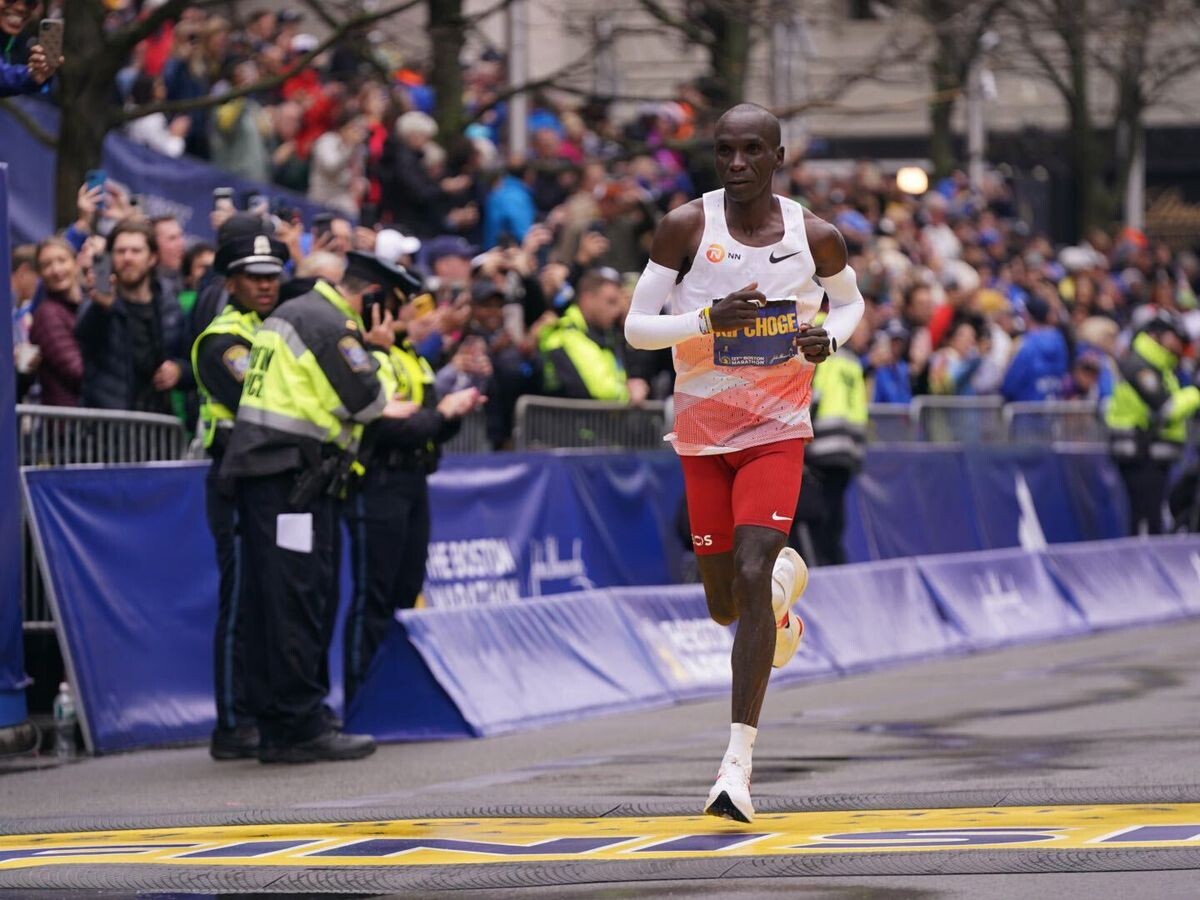
Kipchoge was dropped in the 19th mile in his Boston Marathon debut in the middle of the race’s famed hills. He finished 3 minutes, 29 seconds behind fellow Kenyan Evans Chebet, who clocked 2:05:54 and became the first male runner to repeat as Boston champion since 2008.
“I did not observe Kipchoge,” Chebet said of what happened, according to the Boston Athletic Association. “Eliud was not so much of a threat because the bottom line was that we trained well.”
It marked just Kipchoge’s third defeat in 18 career marathons, a decade-long career at 26.2 miles that’s included two world record-breaking runs and two Olympic gold medals.
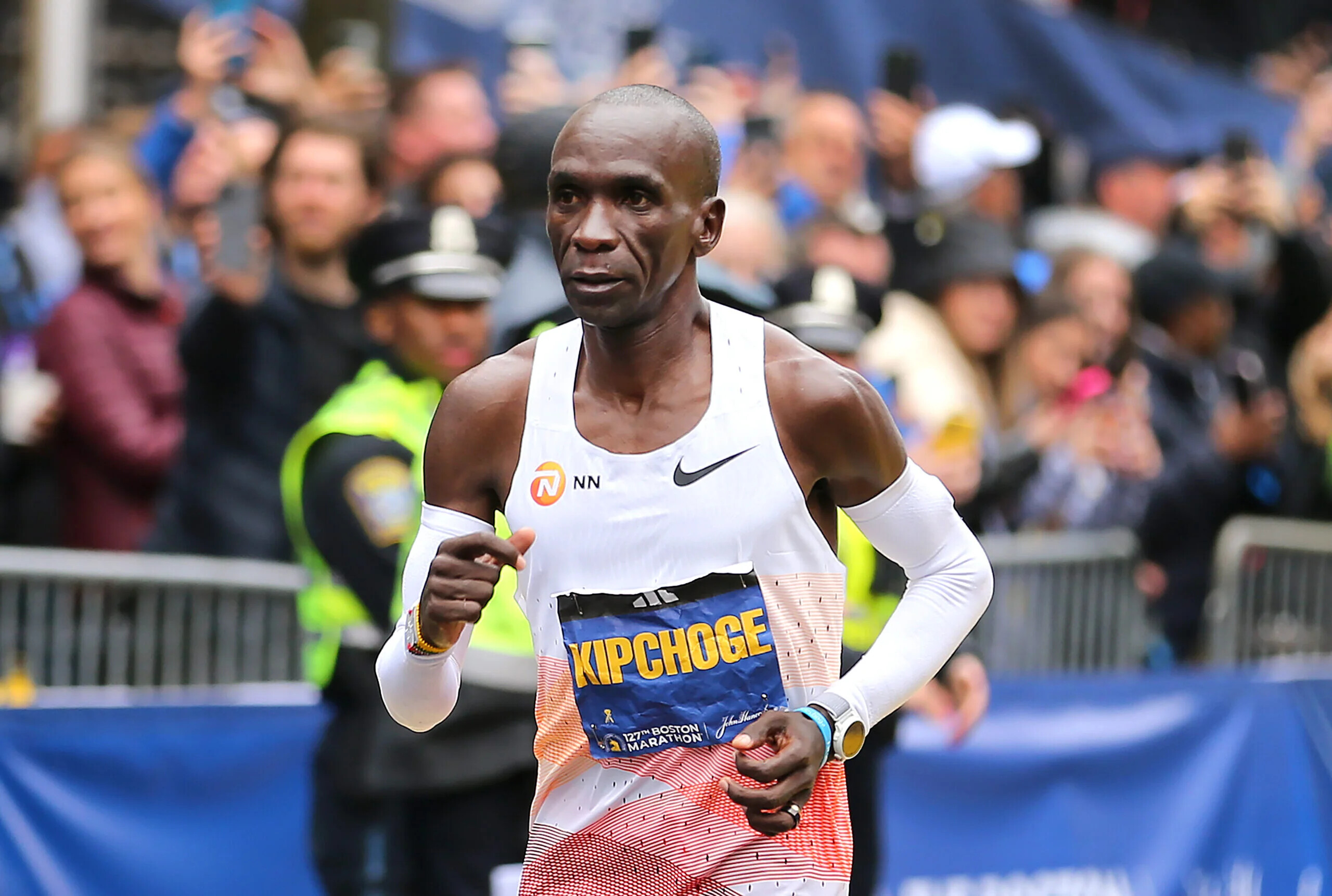
Kipchoge, 38, hopes next year to become the first person to win three Olympic marathons, but major doubt was thrown on that Monday, along with his goal to win all six annual World Marathon Majors. Kipchoge has won four of the six, just missing Boston and New York City, a November marathon that he has never raced.He skipped his traditional spring marathon plan of racing London to go for the win in Boston, the world’s oldest annual marathon dating to 1897.
Kipchoge has yet to speak to media, but may be asked whether a failed water bottle grab just before he lost contact with a leading pack of five contributed to his first defeat since he placed eighth at the 2020 London Marathon. Boston’s weather on Monday, rainy, was similar to London in 2020.
Kipchoge’s only other 26.2-mile loss was when he was runner-up at his second career marathon in Berlin in 2013.
He is expected to race two more marathons before the Paris Games. Kipchoge will be nearly 40 come Paris, more than one year older than the oldest Olympic champion in any running event, according to Olympedia.org. Kenya has yet to name its three-man Olympic marathon team.
“In sports you win and you lose and there is always tomorrow to set a new challenge,” was posted on Kipchoge’s social media. “Excited for what’s ahead.”
Kenyan Hellen Obiri won Monday’s women’s race in 2:21:38, pulling away from Ethiopian Amane Beriso in the last mile.
Obiri, a two-time world champion and two-time Olympic medalist in the 5000m on the track, made her marathon debut in New York City last November with a sixth-place finish. She was a late add to the Boston field three weeks ago after initially eschewing a spring marathon.
“I didn’t want to come here, because my heart was somewhere else,” said Obiri, who is coached in Colorado by three-time U.S. Olympian Dathan Ritzenhein. “But, my coach said I should try and go to Boston.”
Emma Bates was the top American in fifth in the second-fastest Boston time for an American woman ever, consolidating her status as a favorite to make the three-woman Olympic team at next February’s trials in Orlando. Emily Sisson and Keira D’Amato, who traded the American marathon record last year, didn’t enter Boston.
“I expected myself to be in the top five,” said the 30-year-old Bates, who feels she can challenge Sisson’s American record of 2:18:29, if and when she next races on a flat course.
The next major marathon is London on Sunday, headlined by women’s world record holder Brigid Kosgei of Kenya, Tokyo Olympic champion Peres Jepchirchir of Kenya and Olympic 5000m and 10,000m champion Sifan Hassan of the Netherlands in her 26.2-mile debut.
(04/17/2023) ⚡AMPby Olympic Talk
Boston Marathon
Among the nation’s oldest athletic clubs, the B.A.A. was established in 1887, and, in 1896, more than half of the U.S. Olympic Team at the first modern games was composed of B.A.A. club members. The Olympic Games provided the inspiration for the first Boston Marathon, which culminated the B.A.A. Games on April 19, 1897. John J. McDermott emerged from a...
more...Evans Chebet successfully defended his title at the Boston Marathon and fellow Kenyan Hellen Obiri triumphed in the women’s race at the World Athletics Platinum Label road race on Monday
The big sub-plot of the race, however, was the performance of Eliud Kipchoge, who headed to Boston in the hopes of taking one step closer to completing his set of World Marathon Majors victories but trailed home in sixth place in 2:09:23, the slowest time of his glittering career and more than three minutes behind the winner.
But the day belonged to Chebet and Obiri, both of whom dropped their final opponents in the last few minutes of the race, winning in 2:05:54 and 2:21:38 respectively. Chebet’s mark is the third-fastest winning time ever recorded in the men’s race in Boston and Obiri’s performance is the fourth-fastest women’s winning mark.
Kipchoge looked comfortable in the early stages and was part of a lead pack of 11 men that passed through 10km in 28:52 before reaching the half-way point in 1:02:19.
Chebet and Kipchoge were still together in the lead group through 30km, reached in 1:29:23, but the double Olympic champion and world record-holder started to lose contact with the leaders just a minute or two later, having missed picking up his bottle at a water station.
At 35km, with 1:44:19 on the clock, the lead pack was down to five men – Chebet, 2021 Boston winner Benson Kipruto, Tanzanian record-holder Gabriel Geay, Kenya’s John Korir and Ethiopia’s Andualem Belay. Kipchoge, meanwhile, was more than a minute behind the leaders and no longer in contention for a podium spot.
Evans Chebet wins the 2023 Boston Marathon (© Getty Images)
With three miles to go, and Korir and Belay no longer in the running, the race was down to three men: Geay, Chebet and Kipruto. They ran together as a trio for the best part of two miles before Geay’s challenge eventually faded, leaving the Kenyan duo out in front. Chebet then gradually pulled ahead of his compatriot and training partner Kipruto, going on to cross the finish line in 2:05:54.
Geay recovered enough to pass Kipruto in the closing stages, claiming the runner-up spot in 2:06:04, two seconds ahead of Kipruto. 2021 New York winner Albert Korir finished strongly to take fourth place in 2:08:01 and Morocco’s Zouhair Talbi was fifth (2:08:35). Kipchoge followed a further 48 seconds in arrears.
“I train with Benson; he’s my friend and like a brother to me,” said Chebet, who became the sixth man to win back-to-back Boston titles. “With one kilometre to go, I said to him, ‘let’s go’.”Obiri wins in final mile thriller
Five months after making her marathon debut with a sixth-place finish in New York, two-time world 5000m champion Hellen Obiri triumphed in her second race over the classic distance.
In an incredibly close race that wasn’t decided until the final few minutes, Obiri disposed of one of the strongest women’s fields ever assembled for the Boston Marathon.
In contrast to the men’s race, the women’s contest started off at a cautiously steady pace and gradually picked up as the race went on. A large lead pack of more than 20 runners passed through 10km in 34:46, but they had been whittled down to 11 contenders by the half-way mark, reached in 1:11:29.
By this point, the lead pack still included Obiri, world marathon champion Gotytom Gebreslase, Ethiopian record-holder Amane Beriso, Amsterdam course record-holder Angela Tanui, 2020 Tokyo champion Lonah Salpeter, Eritrean record-holder Nazret Weldu and 2021 London champion Joyciline Jepkosgei.
Gebreslase and Weldu had fallen out of the pack with five miles to go, and the lead pack was reduced further to just six women at 23 miles: Obiri, Salpeter, Beriso, Jepkosgei, Ethiopia’s Ababel Yeshaneh and USA’s Emma Bates.
Jepkosgei and Bates started to fade in the last few miles, while Yeshaneh tripped and fell, only to rejoin the lead pack soon after. Salpeter was the next to fade, leaving just Obiri, Beriso and Yeshaneh to battle it out for the victory.
Hellen Obiri wins the 2023 Boston Marathon (© Getty Images)
With 2:17 on the clock, Obiri and Beriso had broken free from Yeshaneh. About 90 seconds later, Obiri embarked on a long drive for the finish line. With occasional glances over her shoulder, the Olympic silver medallist maintained a healthy gap ahead of Beriso and went on to finish in 2:21:38.
Beriso took second place in 2:21:50 and Salpeter overtook Yeshaneh in the closing stages to claim third place in 2:21:57, three seconds ahead of the Ethiopian. Bates was fifth in 2:22:10, making her the top US finisher in either of the races.
“I’m so happy,” said Obiri. “I was undecided about which marathon to do this year, but eventually I decided to do Boston. My coach (Dathen Ritzenhein) told me, ‘you have trained well, you’re ready to do Boston’. I’m very, very happy I chose to do it.”
Leading results
Women1 Hellen Obiri (KEN) 2:21:382 Amane Beriso (ETH) 2:21:503 Lonah Salpeter (ISR) 2:21:574 Ababel Yeshaneh (ETH) 2:22:005 Emma Bates (USA) 2:22:106 Nazret Weldu (ERI) 2:23:257 Angela Tanui (KEN) 2:24:128 Hiwot Gebremaryam (ETH) 2:24:30
Men1 Evans Chebet (KEN) 2:05:542 Gabriel Geay (TAN) 2:06:043 Benson Kipruto (KEN) 2:06:064 Albert Korir (KEN) 2:08:015 Zouhair Talbi (MAR) 2:08:356 Eliud Kipchoge (KEN) 2:09:237 Scott Fauble (USA) 2:09:448 Hassan Chahdi (FRA) 2:09:46
(04/17/2023) ⚡AMPby World Athletics
Boston Marathon
Among the nation’s oldest athletic clubs, the B.A.A. was established in 1887, and, in 1896, more than half of the U.S. Olympic Team at the first modern games was composed of B.A.A. club members. The Olympic Games provided the inspiration for the first Boston Marathon, which culminated the B.A.A. Games on April 19, 1897. John J. McDermott emerged from a...
more...Six Smart Pre-Workout Snacks
It can be tough to find the perfect pre-exercise food. You want something that’ll fuel your workout, but it also needs to be light enough that it won’t weigh you down. The ideal workout food is something that is low in calories, contains quality carbs, and is high in protein. Also, as you eat closer to your workout, you also want to have a lower fat and fiber intake. It's best to be consistent with the time between when you snack and then when you workout.
1.- Greek yogurt

Fat-free plain Greek yogurt is the ultimate exercise snack: tons of protein (twice as much as regular yogurt), super filling without being heavy, and it's easy to eat on-the-go. There are plenty of brands that make perfectly portioned 100-calorie containers.
If you find the taste of plain Greek yogurt a little too tart, mix in a packet of natural no-calorie sweetener (like Truvia), some raspberries and blueberries, or some low-sugar preserves. For some healthy fats that’ll kick your workout into high gear, add a few almonds!

2.- Banana
One perfect pre-workout food comes straight from Mother Nature: the banana.
A medium-sized banana has just about 100 calories, 27g carbs, and almost no fat.1 It is best to consume a banana 30-60 minutes before a workout.
Bananas have enough calories to quiet your hungry stomach for the duration of a workout, and just enough carbs to keep you energized. Plus, it comes in its own container. Can't beat that! (And no, bananas themselves won't cause weight gain).
3.- Delicious Style smoothie
Smoothies definitely have the potential to be a nutritious light snack, but you should be extra careful with them—they can be packed with way too many sugary calories. Your best bet is to DIY your own low-calorie smoothie. Stick with skim cow's milk (or your favorite unsweetened soy milk), unsweetened frozen fruits, and fat-free Greek yogurt.
Aim for 150 calories. This way, the smoothie will energize you for your workout without leading to a sugar crash later in the day. If you are planning a harder workout lasting more than 60-90 minutes, more carbohydrates may be needed, especially if it is a cardio workout.
4.- Oatmeal
Oatmeal is chock-full of quality carbs and it’s so satisfying. It’s an especially good choice if you want to eat a full breakfast before a mid-morning workout. A popular way to cook oatmeal is to make a bowl of “growing oatmeal.” That's one serving of old-fashioned oats cooked for twice as long and with double the liquid. The result? A super-sized portion! Just give yourself some time to digest it before you lace up your sneakers.
5.- Snack Bars With Protein
Need something fast, easy, and shelf-stable? Snack bars are for you. But not so fast! Not all snack bars are created equal. For pre-workout purposes, you want a carbohydrate and protein bar with less than 200 calories and a fair amount of protein that will help rebuild muscles as you work out. And watch out for fat. Certain snack bars pack are surprisingly high in fat.
6.- Apple With Light Cheese
An all-time favorite snacks is a Fuji apple with a wheel of Mini Babybel cheese, and it just so happens that it’s also the perfect fuel for exercise.
Apples have just enough calories and carbs to keep your energy up, and Mini Babybel cheese adds a bit of protein and extra flavor.
Together, apples and cheese add up to a satisfying snack with under 200 calories. Sweet!
(04/17/2023) ⚡AMPby Lisa Lillien
Bashir Abdi regains Rotterdam Marathon title
World and Olympic bronze medalist Bashir Abdi notched up his second Rotterdam Marathon victory, winning the World Athletics Gold Label road race in 2:03:47 on Sunday (16).
The Belgian’s winning time was just 11 seconds shy of the European and course record he set when winning in the Dutch city two years ago. He was pushed all the way by Kenya’s Timothy Kiplagat, who finished second in 2:03:50, a PB by 90 seconds.
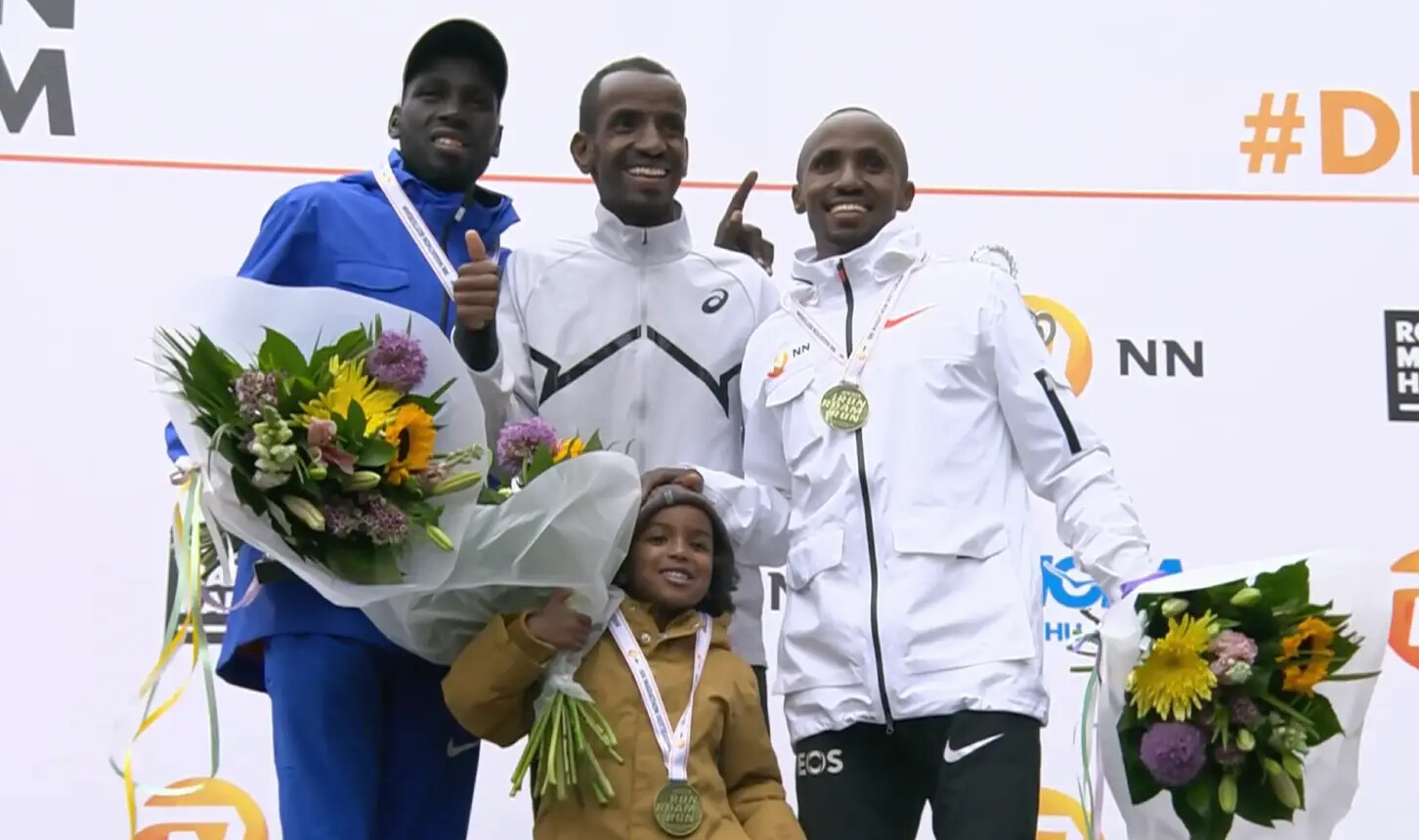
Eunice Chumba, meanwhile, won the women’s race by more than a minute in 2:20:31 – the second-fastest time ever recorded in the women’s race in Rotterdam. She also became the first athlete from Bahrain to win this race.
In the men’s race, a large group passed through 10km in a steady 29:29 before reaching the half-way point in 1:02:15. Abdi and Kiplagat were among the leading pack, as was defending champion Abdi Nageeye and Ethiopian duo Dawit Wolde and Chala Regasa.

The pace picked up between 25km and 30km, with that segment covered in 14:38, and the lead pack had been reduced to five men, which still included Kiplagat, Wolde and Abdi. Kiplagat and Abdi continued to push the pace and they broke away from the last of their pursuers with just under 10km remaining.
In the closing stages, Abdi finally opened up a gap on Kiplagat and went on to cross the line in 2:03:47 with Kipagat following three seconds later. Olympic silver medalist Nageeye was third in 2:05:32 and Wolde was fourth (2:05:46).
“I’m very happy that I won again in Rotterdam," said Abdi. "The weather conditions were not ideal and the pace changed quite a bit, but I ran my second fastest time ever.”
In the women’s race, Chumba had just three other women for company – Kenya’s Pascalia Jepkosgei, Ethiopia’s Meseret Gebre and Eritrea’s Dolshi Tesfu – as she passed through 10km in 32:33.
Chumba, Gebre and Tesfu reached the half-way point in 1:08:43, well inside the pace required to break the course record of 2:18:58 set 11 years ago by 2012 Olympic champion Tiki Gelana, who was also in this race.
Tesfu and Chumba continued to run together up until 35km, reached in 1:55:50, but Chumba then started to open up a bit of a gap on her rival in the final few kilometers. The Bahraini record-holder went on to win in 2:20:31, just 29 seconds shy of her PB and her third sub-2:21 clocking within 12 months. Tesfu was second in 2:21:35.
Chumba’s compatriot Rose Chelimo, the 2017 world champion, made her way through the field in the second half of the race to place third in 2:26:21. Gelana, meanwhile, finished sixth in 2:27:19, her fastest time in eight years.
Over on the other side of the Netherlands, Alfred Barkach and Shyline Toroitich scored a Kenyan double at the Enschede Marathon, a World Athletics Label road race.
Barkach, who was making his marathon debut, won the men’s race in 2:08:50 from compatriot Bernard Kipyego (2:09:13). Toroitich, meanwhile, was a comfortable winner of the women’s race in 2:22:43 from Uganda’s Mercyline Chelangat (2:24:09).
(04/17/2023) ⚡AMPby World Athletics
NN Rotterdam Marathon
The marathon has been the biggest one-day sporting event in the Netherlands for many years in a row with over 35000 athletes professionals inclusive. The world's top athletes will at the start on the bustling coolsingel, alongside thousands of other runners who will also triumph,each in their own way.The marathon weekend is a wonderful blend of top sport and festival. ...
more...Ben Flanagan shatters Canadian record at B.A.A. 5K
For the second year in a row, the men’s Canadian 5K record was shattered at the B.A.A. 5K in Boston. Ben Flanagan of Kitchener, Ont., placed second in the race and broke the previous Canadian record by ten seconds in 13:26.
There was a lot of buzz around the Canadian 5K record heading into Saturday’s race, with Charles Philibert-Thiboutot of Quebec City coming in as the national record holder and defending B.A.A. 5K champion, while Flanagan came into the race as the reigning Canadian 5K champion, holding the second-fastest 5K time in Canadian history.

The men’s elite race got out quickly, going through the first mile in four minutes and 12 seconds (13:00-flat pace). Flanagan and Philibert-Thiboutot found themselves in the chase pack after Ethiopia’s Tsegay Kidanu was off to an early lead. Philibert-Thiboutot drove the chase pack to catch Kidanu at the 3K point.
In the final mile, a large pack of 15 runners was still in contention, lining up for a sprint finish on Charles St. through the Boston Common. Flanagan made a move with his Very Nice Track Club training partner, U.S. miler Morgan Beadlescomb,with 300 metres to go, and held on to finish second behind Beadlescomb in 13:26. Kenya’s Edwin Kurgat finished third in 13:27.
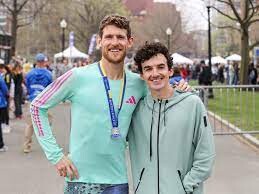
Flanagan took a glance over his shoulder with one mile to go and couldn’t believe how many guys were in the lead group. “When Morgan made his move, I knew I had to keep myself close to him,” says Flanagan. “He and Charles are 1,500m guys, so you know they are explosive.”
“The race was awesome,” says Flanagan. “Even though I ran there four years ago, it well exceeded my expectations.”
This 5K record is the third Canadian road record Flanagan has broken in the last 12 months. Last June, he broke the long-standing Canadian 10K record at the B.A.A. 10K in Boston, finishing fourth in 28:11. Four months later, he ran the Canadian half-marathon record of 61-flat, beating Cam Levins by four seconds at the Valencia Half Marathon. Levins later took the half-marathon record back, running 60:18 at the Vancouver First Half in February.
“My goal is to make a world’s team,” says Flanagan. “It annoys me that I haven’t been able to do it yet.”
Flanagan and Philibert-Thiboutot will head back to the track to chase the 2023 world championships 5,000m standard of 13:07:00 at the Sound Running Invitational in Los Angeles on May 6.
Canada’s Julie-Anne Staehli finished 13th in the women’s 5K, in 15:50. The 2022 world championship steeplechase bronze medallist, Mekides Abebe of Ethiopia, won the women’s race in a sprint finish ahead of Kenya’s Agnes Ngetich, in 15:01. American Annie Rodenfels of Boston finished third in 15:12.
(04/17/2023) ⚡AMPB.A.A. 5K
The B.A.A. 5K began in 2009, and became an instant hit among runners from far and wide. Viewed by many as the “calm before the storm,” the Sunday of Marathon weekend traditionally was for shopping, loading up on carbohydrates at the pasta dinner, and most importantly- resting. But now, runners of shorter distances, and even a few marathoners looking for...
more...Eilish McColgan has had a spectacular year and now she has her sights set on competing at the Olympics in the marathon but she has not run a marathon yet
After three decades immersed in athletics, there are not too many times now when Eilish McColgan is stepping into the unknown.
Next Sunday, however, will be one of those unusual occasions when she stands on the start line not knowing quite what to expect as she will make her marathon debut in London.

For all the thousands upon thousands of miles she has run in training over the years, she is treading new ground.
“I’ve never run 26 miles,” she says. “I don’t actually know many athletes who do the full distance in training.
“We coach amateur runners and we advise not to do more than 22 miles in training and that’s what I’ve been doing myself. There is the mental aspect of can you actually get round 26 miles? But I’ve done 22-mile runs and I had no doubt at the end of them I could have run another four-mile loop. So it’s not so much the distance for me that will be tough, it’s going to be the pace of it.
“There’s a big difference between a long run and a hard, hard effort for that long. So for me, that’s what’s unknown and not something I’ve particularly tested in training.
“I think that’s something that only comes with the experience of racing.”

McColgan is certainly not easing herself in gently. London boasts the strongest women’s marathon field ever assembled with defending champion and world 10k record holder Yalemzerf Yehualaw, marathon world record holder Brigid Kosgei and Olympic champion Peres Jepchirchir all going to be on the start line.
However, with the 32-year-old from Dundee having had the year of her life over the past 12 months, she could not be in a better frame of mind.
McColgan has been on the international scene since 2012, when she competed in her first Olympic Games, but it was in 2022 that she really grabbed the spotlight.
Commonwealth gold in the 10,000m in Birmingham was the most memorable of her performances, but that win was accompanied by a raft of Scottish, British and European records both on the track and on the road.
McColgan has continued her sparkling form into 2023, with her opening appearance of the year a run over 10,000m of 30 minutes 0.86 seconds, breaking Paula Radcliffe’s long-standing national record and smashing her own personal best by 19 seconds.
That was followed by a win at the Berlin Half Marathon two weeks ago in yet another British record and McColgan admits that despite the trepidation that is certainly present about running her first marathon, she is in a confident mood.
“I’m really pleased with my runs. To have come away with British records and such big PBs, I was really happy,” she says. “It’s given me quite a lot of confidence knowing that the training I’m doing is really suited to me.
“I know for sure I can run a good 5k, a good 10k and a good half marathon so now the question is whether or not I can run a good marathon because it’s something I’ve never done. I’m certainly in a better place to run the marathon now than I ever have been but how I actually cope with it, we won’t know till race day.”
The one, and perhaps only, down side of McColgan’s spectacular year is that expectations from observers are now sky-high regarding what she is likely to achieve in London.
However, McColgan is far too pragmatic and too experienced to expect anything spectacular and instead, she sees next weekend’s race as the start of her marathon journey which will, she hopes, lead to the start line of the Olympic marathon in Paris next summer.
“This first marathon is about getting the experience of it,” she says. “I’m in a much stronger position than I’ve ever been and so I’ve given myself the best opportunity to run a good marathon but there’s a lot of things that come into play on the day with regard to the mental side of it, the physical side of covering that sort of distance at that fast pace and the fuelling side of things to make sure I don’t hit the wall.
“There’s a lot more elements that come into a marathon than do on the track or on the shorter road races.
“I know other people maybe expect me to go to London and be competitive but that’s not realistic.
“I’m going into the best marathon field that’s ever been assembled so I have to be realistic with what I can achieve within that. I’m certainly not going in there to win.”
McColgan may not be targeting a podium place but she is not lacking goals for the race.
With the 2024 Olympic Games already in her mind, qualification for Paris is of primary importance – and ideally sooner rather than later – but she also has her mum, Liz’s, one remaining time that is faster than her in her sights over those 26.1 miles in London.
“I have a few goals for London,” she says. “Firstly, I want to get round in one piece. That’s my No.1 goal – to get round and feel like yes, I want to do the marathon at the Paris Olympics,” she says.
“Secondly, this is the final PB that my mum still has of 2 hours 26 mins. Steph Twell took her Scottish record a couple of years ago when she ran 2:25 so I have that in my head as a time target.
“I do feel I’m capable of running faster than my mum and getting that Scottish record and it’d be a triple-whammy because it’d be a qualifying time for the Paris Olympics too.
“I’d like to be competitive against the British girls and if I can do that, I think I can knock those three goals off in the process.
“If I can achieve all my personal goals, that’d be a good day for me.”
(04/16/2023) ⚡AMPby Susan Egelstaff
TCS London Marathon
The London Marathon was first run on March 29, 1981 and has been held in the spring of every year since 2010. It is sponsored by Virgin Money and was founded by the former Olympic champion and journalist Chris Brasher and Welsh athlete John Disley. It is organized by Hugh Brasher (son of Chris) as Race Director and Nick Bitel...
more...Most People Get Slower with Age. But Is That Inevitable?
Recently, while sifting through some of the excruciatingly detailed performance data he'd collected over decades as a Colorado-based triathlon coach, Alan Couzens noticed a pleasing symmetry. All else being equal, the amount of aerobic fitness his athletes lost by getting a year older was almost identical to the amount they gained by adding an hour per month of training time. Want to freeze the biological clock from one birthday to the next? Find a spare 15 minutes per week and fill it with running.
The long-haul practicality of this approach is debatable: after a decade, that additional training time would total 2.5 hours a week. But the underlying premise of what we might call the Couzens Immortality Quotient taps into a fertile area of debate. How much of the aging process is an inevitable slide into decrepitude, and how much is a result of not getting enough exercise?

That's the question Johannes Burtscher of the University of Lausanne, along with colleagues in Switzerland and Austria, posed recently in the International Journal of Environmental Research and Public Health. By pooling the results of more than a dozen studies, the group reached an encouraging, quantifiable conclusion: only about half of the fitness losses suffered by endurance athletes as they get older are attributable to the passage of time. The other half can be chalked up to reduced training.
The standard gauge of aerobic fitness is VO2 max, which measures how quickly you're able to breathe oxygen into your lungs, pump it through your arteries, and use it to help fuel muscle contraction. It's expressed in milliliters of oxygen per kilogram of body weight per minute, and in young adults it typically hovers somewhere in the forties. After age 25, it declines by about 10 percent each decade, dropping more quickly in your sixties and seventies. Among endurance athletes, the numbers aren't so predictable. Some studies find losses of 5 percent per decade; others as much as 46 percent. What accounts for the difference? The extent to which you continue training as you get older. After all, the fitter you are, the more you stand to lose.
The effects of ceasing training entirely seem to be similar in athletes of all ages. Your VO2 max begins to plummet within a few days of stopping exercise, and you might lose as much as 20 percent after 12 weeks. These losses are explained mostly by changes in how much blood your heart can pump with each beat; the good news is that the trend can be reversed fairly quickly when training is resumed. Other age-related changes, such as stiffening arteries, occur more slowly and are harder to undo.
How much of aging is an inevitable slide into decrepitude, and how much is a result of not getting enough exercise?
When Burtscher and his colleagues ran the numbers, they found that 54 percent of the variation in fitness loss by male endurance athletes was explained by differences in how much they trained. That number in women was 39 percent, but the scarcity of data for female subjects makes it impossible to tell whether there's a real physiological difference between the sexes. Overall, the data fits with the observation that athletes who keep training at a fairly constant level over the years lose about 5 percent per decade-half as much as the typical nonathlete.
There are a couple of key questions raised by these findings. The first one: If you miss a year, or a decade, can you get back to where you were? Or is some of that fitness lost forever? There's no research to suggest a solid answer, according to Gregoire Millet, one of Burtscher's colleagues at the University of Lausanne. It probably depends to some degree on how much you trained prior to stopping, and for how long. The risk upon resuming would be that your bones and connective tissue are no longer prepared to handle a heavy load, making you more susceptible to injury.
Still, there are some encouraging hints in the literature. In 2020, researchers published lab data on Tommy Hughes, an Irish man who'd recently run an eye-popping 2:27 marathon at age 59. Hughes's VO2 max was 65.4, more than twice what you'd expect from a largely sedentary man his age. Not surprisingly, Hughes was a former elite marathoner; he competed at the Barcelona Olympics in 1992. But he'd taken a 16-year break from running, starting again at the age of 48. We can't know for sure if that pause hurt him-if it did, it couldn't have been by much, given that he currently holds the world marathon record for the 60-to-64 age group, at 2:30:02.
The other question is how to maintain your training level as the years pass. We all have good intentions, but real life rarely resembles the smooth aging curve that results from graphing the average data from large groups of people. Instead, there are plateaus and gentle declines punctuated by steep drops-you break a leg, your first kid is born, you become addicted to social media, and so on. Avoiding periods of rapid decline goes a long way toward slowing the overall slide.
Another superstar case study, this one published in 2022 by a team led by Bas Van Hooren of Maastricht University in the Netherlands, illustrates the benefits of consistency. A 75-year-old middle-distance runner named Hans Smeets, who holds multiple European and world age-group records, had clocked a VO2 max of 50.5, equal to the highest known measurement for his age. Smeets only began running at 50, further evidence that it's never too late to start (or start again). And once he'd begun, he kept going. Over the next 25 years, he never missed more than a week of training. Initially, he ran more than 85 miles per week, and at 75 he was still logging as many as 50. He attributed his ability to handle all that mileage without injury to doing most of his runs at, in his words, "an easy pace."
That, as it turns out, aligns perfectly with Couzens's view about what's required for long-term athletic success: lots of low-intensity exercise. To be sure, the idea of adding an hour of training per month every year to ward off the effects of aging sounds suspiciously like an endurance version of the legend of Milo of Croton, the ancient Olympian wrestler said to have lifted a calf over his head every day until it was a full-grown bull. In both cases, each step in the process seems simple, but the result is nonetheless improbable, let's call it.
Yet, as an aspiration, or simply as a formulation of what's possible, the Couzens Immortality Quotient tells us the same thing as the examples of Tommy Hughes and Hans Smeets, and as Johannes Burtscher's meta-analysis. You don't train less because you're getting old; you get old, to a surprising extent, because skipping that long Sunday run with your pals becomes a habit instead of a rare exception. Don't do it.
(04/16/2023) ⚡AMPYoga for staying calm
Embrace the present moment & stay present in the storm. Acceptance fosters wellbeing & mindfulness. Here are 6 Yoga tools to help you stay present!
If there’s anything we have learned from the past few years, it’s that life is going to continue to provide us with challenges. Just when we think the storm has passed and we are ready to sail in optimal conditions, the weather seems to turn and keep us on our toes. The relentlessness of the continually changing weather and stormy skies can be overwhelming and exhausting. It’s understandable why we begin to check out, close our eyes and just want to wake up when it’s all over.

This approach can offer us short-term peace by escaping the discomfort of what is. However, in the longer run, there are benefits in staying completely present in the storm as we learn acceptance and embrace the opportunity to grow from every experience.
The power of atha
The first word of Patanjali’s Yoga Sutras is “atha” or now. It is an auspicious word, with some teachers suggesting that if you really understood what atha means, you would understand everything and reach a state of yoga or liberation. Practising mindfulness, which Jon Kabat Zinn defines as “paying attention, on purpose, in the present moment, non-judgementally”, is the key to staying in the “now”, no matter what is going on.
The non-judgement part can be particularly tricky to practise. Seeing our experiences as they are, without putting any kind of lens on them, framing them as good or bad, allows us to foster more acceptance in our lives.
The power of acceptance
“Accept, then act. Whatever the present moment contains, accept it as if you had chosen it. Always work with it, not against it.” ~ Eckhart Tolle
Acceptance of all our experiences, regardless of how stormy or calm they are, has been shown to positively affect our overall wellbeing. In one particular study, individuals who accepted rather than judged their mental experiences appeared to attain better psychological health, and less reactivity to stressors. Other studies suggested acceptance reduced feelings of shame, guilt, anxiety and distress.
Acceptance allows us to get on with the task at hand, and do what we need to do, instead of putting energy into worry and fear. As my teacher David Life used to say, “So what, now what?”
Escaping the storm
Most of us are constantly trying to avoid our current experience. We walk into a room that is too cold, and we turn the heat on; when it gets too warm, we open the windows and take our coat off, forever trying to escape whatever discomfort we feel. Inevitably, though, at some point we will be thrust into a situation where we can no longer control the temperature or the weather, and there is no escape. As the storm rages, without any skills to keep us awake, to simply be in the experience, we struggle to stay afloat.
All manner of addictions arise from this moment, of grasping and craving, clinging to something that helps us evade the reality of the battering of our boats in the tempest.
How to stay present
The yoga practice provides us with many tools to help us stay present and observe whatever is arising.
The asana shows us how to dive into poses and stay steady regardless of discomfort and strong sensation. It allows us to practise breathing calmly and being steady, staying in a posture, when we’d really prefer to run.
Concentration on the breath, in pranayama practices, is very powerful at quietening the mind and bringing us directly into the present. It also teaches us the transient nature of our experience, how it is ever-moving, in motion, traversing the cycles of beginning, middle and end, over and over.
We learn through pranayama, watching, controlling and freeing the breath about the changing nature of things at a very primal, cellular level. And it shows us how every new breath is a chance to start again, that the newness, the freshness of each inhale and exhale is a different experience. Whatever storms we are in will pass at some point, giving way to something new.
Meditation shows us how our thoughts come and go, jumping around and as changeable as the weather. Being reminded of the physical and mental layers that this too shall pass, for better or worse, is a great way to practically work with stepping into the present, accepting what is and trusting it will pass eventually.
Drishti, or a focus point, is another tool we can use to train the mind to concentrate. It is through concentration, or dharana, we place the mind at one thing at a time, which allows us to be present and available to see what’s in front of us.
Non-attachment
In the Yoga Sutra 1.2, “Yogash [union] citta [mind] vritti [whirlings] nirodha [to cease/get rid of]” is sometimes translated as “Yoga is when the mind stops.” But in that case, the party is over. When our minds stop, we don’t get to experience anything, let alone yoga. My teacher Manorama D’Alvia speaks to it from the perspective of not attaching to the rotational movements of the mind, or the vrittis. If nirodha is to stop or cease, and we think of citta as the ocean of the mind with the vrittis as the waves or thought patterns, yoga is when we stop attaching the chaos of the surf. We identify less with the individual waves, and see that we are the ocean, vast and deep.
Then no matter what storm is raging, we are always connected to that deeper oceanic part of ourselves, which isn’t so affected by the individual movements and tides; after all, the weather changes, but the ocean is always there, seemingly limitless and rich.
Pratyahara
Because the nature of the world is designed to steal our attention, our energy constantly moves outwards through the senses. As we practise withdrawal of the senses, pulling them back inwards towards us in times of crisis and challenge, we preserve our energy which will be required to take skilful action in whatever stormy situation we are in. We cannot steer the boat across immense waves if we are not paying attention, concentrating, making intelligent choices, and have the energy to do so. Using our practice to harness our ability to draw the senses inwards will make it easier in those moments that feel tougher to do so, when the lightning and thunder feel overpowering. As D’Alvia says, you don’t need to practise every day, but there will come a time when you will be grateful you practised every day.
The more we practise when the skies are calm, the more we will be prepared and ready when we need a yogic mind in those turbulent times.
What being present does for us
When we pay attention to what is happening in front of us, with acceptance, a calm mind, free from judgement, we see things as they really are. Instead of operating from a place of fear, or projecting into the past or future, we wipe the lenses clean and can see clearly — not from
a place of denial or overwhelm, rather the stance of a warrior on the battlefield, like Arjuna in the Bhagavadgita. Just as he had to accept his role in fighting a battle he didn’t want, we may find ourselves in blustery conditions we don’t want to be part of. When we have a yogic mind, we can face those moments; we can do what must be done with a clear mind and steady hand.
Turbulent times as a teacher
The greatest gift of all, however, from staying with eyes wide open in the tempest, is that we can use the experience as a teacher. Moments of great joy are bolstering and fortify our spirit. But the obstacles and storms of life are where the greatest learning is. Use those moments as a teacher and no experience shall go to waste; rather they will enhance our life, showing where we are stuck, where we need to grow and how much further we can travel in terms of kindness, compassion and empathy for self and others.
Chaos to calm yoga practice
This practice is designed to foster presence through some of the tools suggested above, as well as some balancing poses which require our steadiness, drishti and concentration.
Pratyahara
Choose a comfortable seat and listen to the sounds around you. Start to pull your senses inwards. Close the eyes. Relax the jaw and let the tongue drop away from the palate. Observe any taste on your tongue. Take in the smells around you.
Feel what sensations you can especially on the hands and fingers. Listen to the sounds around you. Keep your awareness on the senses in this way, not letting them move out, gathering stimulation
or escaping this present moment.
Meditation
Keep sitting. Notice any thoughts that start to arise. Let them bubble up, feel them, experience them, accept them and let them move on. Keep noticing your senses, physical sensations, taste, the dark behind the eyelids, the sounds, the smells. As you do, keep allowing thoughts and feelings to come up, accepting them and letting them go. Stay aware, completely in the present moment.
(04/16/2023) ⚡AMPAlfred, Wilson and Lyles secure double success in Florida
Julien Alfred, Britton Wilson and Noah Lyles each started their seasons with winning doubles at the Tom Jones Memorial in Gainesville, Florida.
Commonwealth 100m silver medallist Alfred improved to a 21.91 (1.8m/s) Saint Lucian 200m record, while two-time world 200m champion Lyles ran 20.16 (-1.2m/s) on Friday (14). They also won their 100m races the following day, Alfred clocking a wind-assisted 10.72 (2.4m/s) and Lyles running 9.95 (1.6m/s) ahead of Joseph Fahnbulleh (9.98).
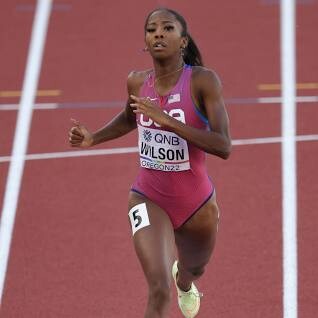
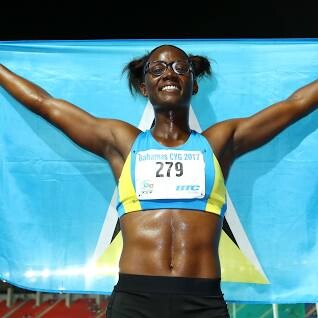
Alfred picked up from where she left off following an indoor season that included PBs of 6.94 for the 60m and 22.01 in the 200m set at the NCAA Indoor Championships for the best ever one-day indoor sprints double. That 6.94 places her joint second on the world indoor 60m all-time list.
After some relay performances to open her outdoor campaign, the 21-year-old improved her previous 200m PB of 22.46 set last May, taking it to 21.91 in her first individual race of the season.
Finishing second in that collegiate race was McKenzie Long in a PB of 22.31, while Alfred’s Texas teammate Rhasidat Adeleke improved her Irish record to 22.34 in third.
In another race, world finalist Melissa Jefferson ran 23.02 (1.8m/s) to win ahead of five-time Olympic gold medallist Elaine Thompson-Herah (23.23). Kiara Grant won the pro 100m race, clocking 10.99 (1.6m/s).
Also getting his outdoor season under way, Lyles ran 20.16 into a headwind (-1.2m/s) to dominate his 200m race. In one of the collegiate races, Alabama’s Tarsis Orogot ran a wind-assisted 19.60 (2.9m/s), while Terrence Jones went quickest in the collegiate 100m races, clocking 9.91 (1.0m/s) to match the Bahamian record.
Like Alfred, Wilson also threatened a world record at the NCAA Indoor Championships when she ran 49.48 to win the 400m. She achieved another fast time on Saturday (15), running a collegiate record of 49.51 to win her 400m race, the day after she claimed a 400m hurdles win in 53.23 when making her individual season debut. Anna Hall finished second in that hurdles race in 54.48 and Masai Russell was third in 55.39. Adeleke ran another Irish record to finish second behind Wilson in the 400m, clocking 49.90.
In the sprint hurdles, two-time world champion Grant Holloway won his 110m hurdles heat in 13.03 (1.1m/s) ahead of Rasheed Broadbell (13.12). Holloway then won the final in 13.05 (0.5m/s). After a wind-assisted 100m hurdles heat win of 12.55 (2.8m/s), 2019 world champion Nia Ali won the pro final in 12.53 (1.4m/s) ahead of world champion and world record-holder Tobi Amusan (12.59), who won her heat in 12.74 (1.1m/s). World indoor 60m hurdles silver medallist Devynne Charlton was third in the final in 12.64.
World indoor champion Jereem Richards got things off to a fast start as he won his first 400m race of the season in a PB of 44.68. Alonzo Russell also ran a PB of 44.73 for the runner-up spot.
Will Claye and Christian Taylor were separated by a single centimetre in the men's triple jump, respectively leaping 16.90m and 16.89m. Thea LaFond recorded 14.13m to win the women's contest.
At the Mt. SAC Relays in Walnut, California, on Saturday (15), Olympic and world silver medallist Rai Benjamin made his 400m hurdles season debut and clocked 47.74 for a dominant victory.
Cravont Charleston won the elite men’s 100m race in a wind-assisted 9.87 (3.0m/s) ahead of Kyree King (9.98) and world 400m champion Michael Norman (10.02).
Juliette Whittaker topped the 1500m in 4:12.49 on Friday and the following day won the 800m in 2:01.79 ahead of her Stanford teammate Roisin Willis in 2:01.97.
Talie Bonds improved her PB to 12.65 (1.2m/s) to win the 100m hurdles.
At the Bryan Clay Invitational in Azusa, California, Nikki Hiltz pipped Michaela Rose in a close 800m race, 1:59.03 to 1:59.08, as both athletes dipped under two minutes for the first time on Friday (14). Claire Seymour (2:00.04), Elise Cranny (2:00.25) and Valery Tobias (2:00.31) also went sub-2:01.
On Saturday (15), Cooper Teare opened his season with a near 1500m PB of 3:34.96 ahead of Fouad Messaoudi (3:35.16).
Australian 15-year-old Gout Gout made a statement on the third day of the Australian Junior Athletics Championships in Brisbane on Saturday (15), clocking 20.87 (-0.1m/s) to win the 200m by almost half a second.
“It means a lot because I’ve been training so much for this. I was really nervous. The gun went, and I was good and I just kept pushing," he told Athletics Australia.
(04/16/2023) ⚡AMP
by World Athletics
Simon Boch wins the Linz marathon
The German Simon Boch won the 21st Linz Donau Marathon, the unofficial winning time: 2:09:25 hours. A course record was set again for the women. Best Austrian was Matthias Maldet.21st Oberbank Linz Donau Marathon is Simon Boch. He is from Germany. With a time of 2:09:25 hours, he remained well below the course record from the previous year by Ethiopian Fikre Bekele (2:06:13).Four Kenyans landed behind him: Evans Kimtai Kiprono (2:09:25) was second, Kemboi Jackson Rutto (2:12:02) third, Luke Kibet Cheruiyot (2:12:15) fourth, Cornelius Chepkok (2:12: 26) Fifth. Best Austrian was Matthias Maldet in 2:31:04 as seventh.
Course record for women
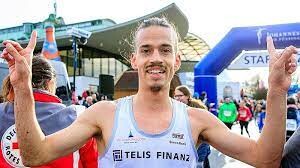
For the third time in a row, the organizers of the Oberbank Linz Donau Marathon were able to celebrate a course record. The Kenyan Teclah Chebet stayed more than three minutes under the previous record in 2:27:18 hours. The German favorite Domenika Mayer from Regensburg (2:28:47) took second place after surviving the corona infection.
(04/16/2023) ⚡AMPLinz Donau Marathon
The Linz Marathon is one since 2002 taking place in April each year marathon in Linz . Besides the classic route over 42.195 km, there is a half marathon , quarter marathon 10.5 km, a relay marathon and competitions for hand cyclists and inline skaters (since 2005).The marathon route starts on the VÖEST bridge the A 7 runs in the...
more...Former Canadian record holder Malindi Elmore will run her first Tartan Ottawa International Marathon
Malindi Elmore will be making her first appearance in the Tartan Ottawa International Marathon leading a star-studded field as part of the Tamarack Ottawa Race Weekend on 27–28 May.
Elmore, 43, debuted in the Athens Olympics in 2004 and returned to the Olympics Games in 2021 in Tokyo. In between, Elmore has won Canadian Championships, competed in triathlon, and had two children.
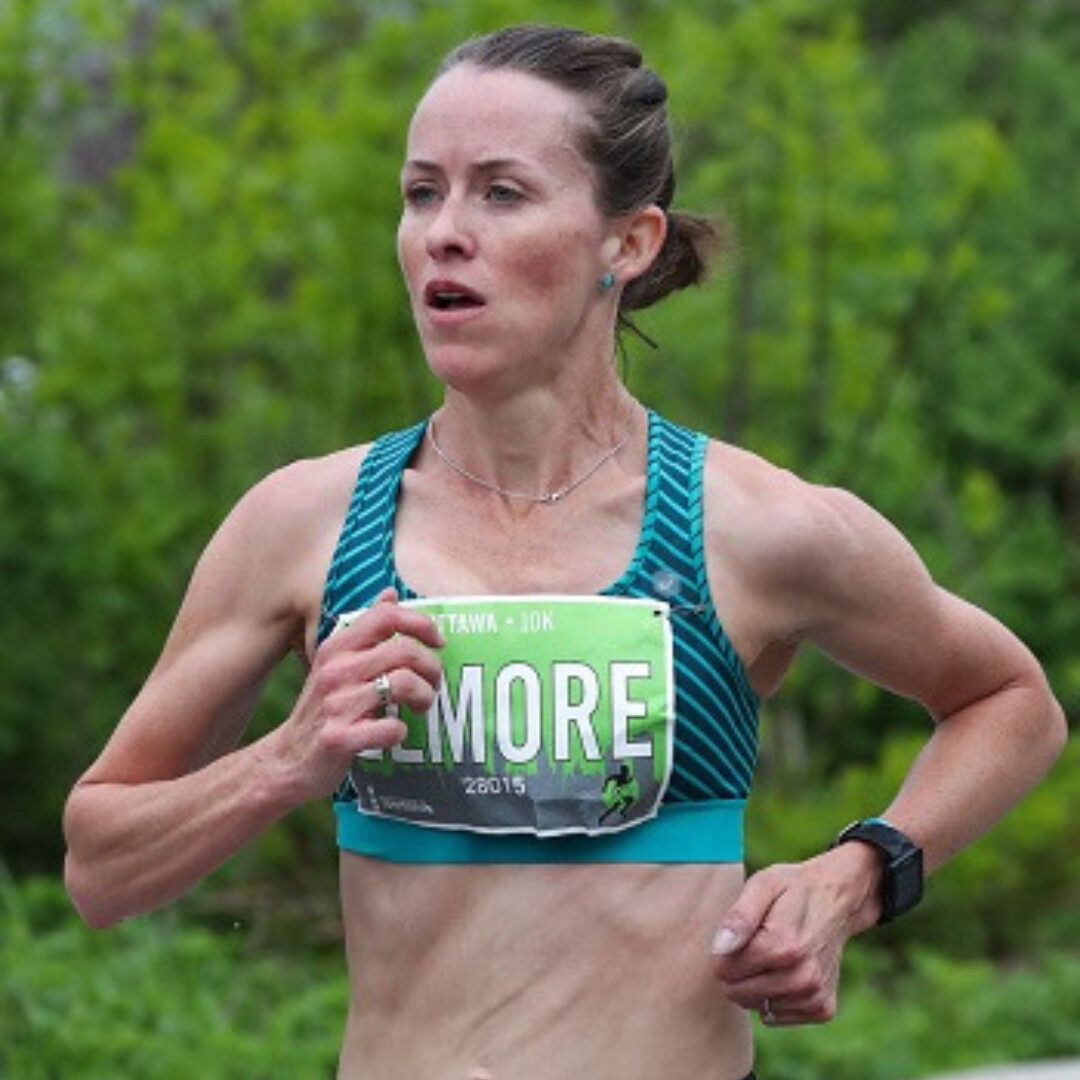
In her 1500m career Elmore won a bronze at the Pan American Games and at the World University Games. She is also 4x Canadian Champion over 1500m.
But Elmore found her stride in the marathon after her debut in Houston in 2019. She proceeded to break the Canadian record in 2020, running her personal best of 2:24:50. In another outstanding run, Elmore was 9th in the 2021 Olympic Games Marathon, the second highest-ever placing for a Canadian woman. She is also the defending Canadian Marathon Champion.

Elmore is running the Tartan Ottawa International Marathon as a stepping stone to a hopeful return to the Olympic Games next year in Paris.
“I can’t wait to see what Canada’s capital has in store for me,” said Elmore. “My goals for the race are to run competitively and finish strong! The marathon is a race that requires a lot of respect so if I can achieve those two goals, I will run fast!”
“We cannot wait to host Malindi in the nation’s capital for Tamarack Ottawa Race Weekend,” said Dylan Wykes, Elite Athlete Coordinator. “Malindi is such a great role model in our sport as a mom, a coach, and world class marathon runner.”
Tamarack Ottawa Race Weekend is Canada’s biggest race weekend and will run on May 27–28, 2023. You can learn more and register by visiting runottawa.ca.
(04/15/2023) ⚡AMPby AIMS
Ottawa Marathon
As one of two IAAF Gold Label marathon events in Canada, the race attracts Canada’s largest marathon field (7,000 participants) as well as a world-class contingent of elite athletes every year. Featuring the beautiful scenery of Canada’s capital, the top-notch organization of an IAAF event, the atmosphere of hundreds of thousands of spectators, and a fast course perfect both...
more...Boston Marathon preview: will Kipchoge break the course record?
The 127th Boston Marathon is bound to be historic, for two main reasons: it’s the 10-year anniversary of the 2013 Boston bombing. And the men’s marathon will host the world’s fastest marathoner, Eliud Kipchoge, for the first time. Kipchoge is obviously the favourite to win, as he furthers his quest for all six Abbott World Marathon Majors. But nothing comes easy, and here’s why Boston might be Kipchoge’s toughest test yet.
The course and weather

The Boston Marathon course looks like it should be fast, but it isn’t. You start out in the distant suburb of Hopkinton, 150 m above sea level, and cruise downhill for the first eight miles before heading back uphill to finish at sea level in downtown Boston. The course runs almost entirely from west to east, meaning the wind will either be with or against you, which adds variability to the results.
Earlier this month, Kipchoge told Nation that he’s ready for any challenges the Boston course throws at him. “The weather can be unpredictable, but I am trying to be an all-weather man,” said the reigning back-to-back Olympic marathon champion. Kipchoge also said he and his training partners designed a hilly long-run route in Kaptagat, Kenya to emulate the Boston hills, involving 40+ kilometres of rolling hills at 2,500 metres above sea level.
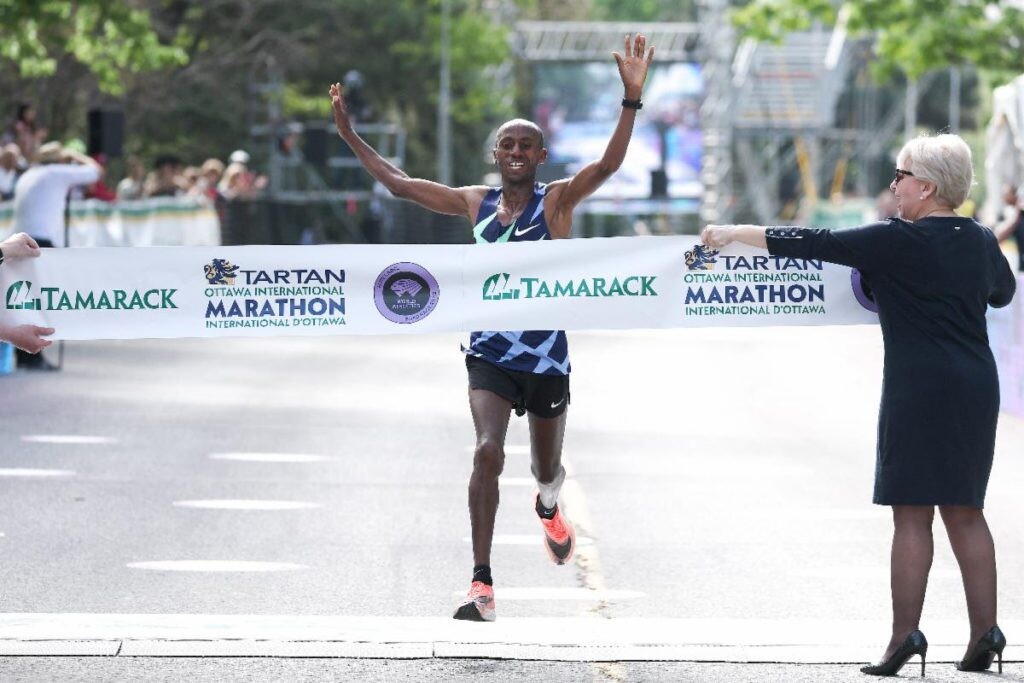
Kenya‘s Geoffrey Mutai holds the course record of 2:03:02 from the 2011 Boston Marathon, when there was a 20 km/h tailwind. Unlike at other marathon majors, pacers are not allowed at Boston, meaning Kipchoge will have to set a 2:02 pace from the get-go if he wants the course record.
Kipchoge’s competition
The 2023 Boston Marathon features of five of the last six marathon majors winners (the only one missing is Amos Kipruto, who will attempt to defend his London Marathon crown on April 23).
Usually, the former Boston champion is the favourite heading into race week, but that isn’t the case when you have the world record holder making his first appearance.
Last year, reigning Boston champion Evans Chebet had a season to remember, becoming the first marathoner to win Boston and NYC in the same year since Mutai did it in 2011. Chebet is fast, and he’s a bit of a tactician, which can work in his favour if Kipchoge mistimes his move. Chebet’s best performance is from the 2020 Valencia Marathon, where he took the win in 2:03:00 (the eighth fastest time in history).
Chebet’s training partner and Kenyan compatriot, Benson Kipruto, is one of the best tactical marathoners in the world. He’s a two-time major marathon champion (Chicago 2022 and Boston 2021) and in both wins he has showcased his ridiculous speed, dropping a 13-high 5K split between kilometres 35 and 40. Kipchoge will need to find a strategy to manage the two-headed dragon of Kipruto and Chebet, who are both familiar with the course and know what it takes to win.
Kipchoge, Kipruto and Chebet will be the main contenders to watch, but there are a few other candidates who could either pull off an upset or get dropped by Kipchoge around kilometre 35, starting with Tanzania’s Gabriel Geay. Geay has always been the bridesmaid but never the bride–he was second in Valencia last December, fourth at Boston in 2022 and seventh at the 2022 World Championships. The 2:03-flat runner ranks inside the top 10 for all-time in the marathon but has yet to win a major–will he get his first win in Boston?
Shura Kitata of Ethiopia was the last man to beat Kipchoge in a marathon major, which happened on a wet day at the 2020 London Marathon. Kitata’s results have been up and down since his 2020 win, but he bounced back last fall, placing second at the 2022 NYC Marathon. Like Kipruto, Kitata is much more of a tactical racer than a speedy one. His personal best of 2:04:49 was set as a 21-year-old at the 2018 London Marathon.
A dark horse who might be a familiar name to many Canadians is the 2022 Ottawa Marathon champion, Adualem Shiferaw of Ethiopia. Shiferaw won Ottawa in a course record 2:06:04 on a warm and windy day in the nation’s capital last year, and has only lost one marathon since 2018 (he was 2nd at the 2022 Riyadh Marathon). This is Shiferaw’s first marathon major, and he has little to lose. If you are looking for a sleeper pick, Shiferaw could certainly catch a few people by surprise.
Prediction
Kipchoge will win this race, but he won’t do it in course record time. The conditions won’t be perfect, and there’s too much uncertainty and variability around the Boston course for him to go out at a 2:01 or 2:02 pace. If I had to guess, Kipchoge will execute a similar race strategy as he did in the Tokyo Olympic marathon, where he sat with the lead group for 25 km and then took matters into his own hands, winning by a minute and a half.
Although he may not have the Boston experience, he is the fastest athlete in the field. What matters to Kipchoge first and foremost is getting the victory, and he’ll execute whatever race strategy it takes to get the job done. Look for him to sit on former champions Chebet and Kipruto early on, and make his move around the 25- to 27-kilometre mark before the Newton Hills, then ride the roar of the crowd home to Boylston Street.
Canadian Running pick: Eliud Kipchoge (Kenya) – 2:05-mid
Stay tuned for our women’s marathon preview.
How to watch
The 2023 Boston Marathon will be broadcasted on TSN 5 beginning at 8:30 a.m. E.T. on Monday, April 17. The men’s open race will begin at 9:37 a.m. E.T. and will likely conclude around noon E.T.
Canadian Running will be your home for the 127th Boston Marathon, featuring live-tweeting for April 15th’s B.A.A 5K and the Boston Marathon. Follow us on Twitter and Instagram for news and updates.
(04/15/2023) ⚡AMPby Marley Dickinson
Boston Marathon
Among the nation’s oldest athletic clubs, the B.A.A. was established in 1887, and, in 1896, more than half of the U.S. Olympic Team at the first modern games was composed of B.A.A. club members. The Olympic Games provided the inspiration for the first Boston Marathon, which culminated the B.A.A. Games on April 19, 1897. John J. McDermott emerged from a...
more...Norway’s Sondre Moen and Visiline Jepkesho of Kenya head the start lists of Vienna Marathon 2023
Fine elite fields have been assembled for the Vienna City Marathon, which will be staged for the 40th time on 23rd April.
Norway’s Sondre Moen and Visiline Jepkesho of Kenya head the start lists of the jubilee edition. The Vienna City Marathon is Austria’s biggest one-day sporting event and the only road race in the country that features a World Athletics Elite Label. Including races at shorter distances organisers have now registered more than 38,000 entries. Over 9,000 of them will run the classic distance.
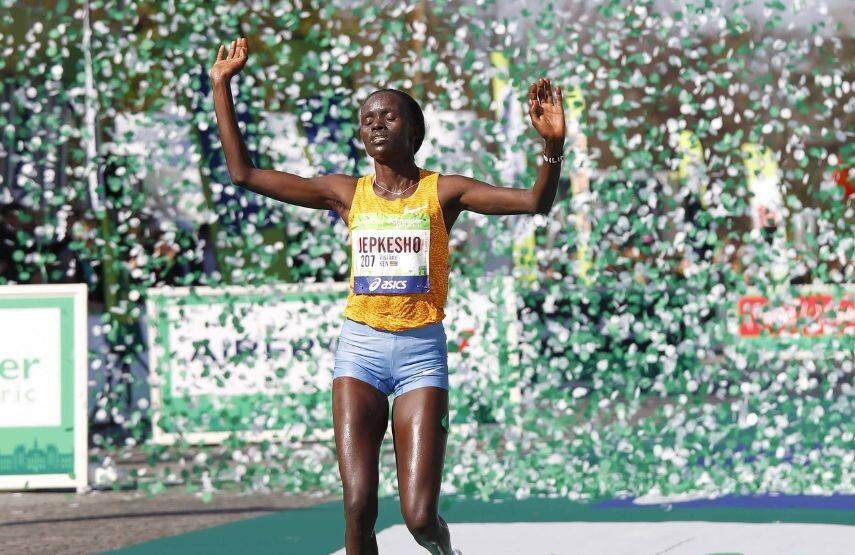
The men’s field includes eleven athletes with personal bests of sub 2:10. While Sondre Moen features the fastest personal best with a time of 2.05:48 the Norwegian former European record holder will concentrate on running a solid sub 2:10 race to come back from a less successful period. Therefore Abdi Fufa and Bethwel Yegon, who have both been added to the field in recent days, as well as Samwel Mailu and Titus Kimutai are more likely regarded as favorites.
Ethiopia’s Fufa has a PB of 2:05:57 from 2021 and knows the Vienna City Marathon well. He placed tenth here a year ago with 2:10:32. Bethwel Yegon is the fastest Kenyan on the start list and is said to be in fine form. He ran 2:06:14 in 2021 when he surprised with a second place in Berlin. Samwel Mailu looks well placed for a personal best. The Kenyan ran 2:07:19 in Frankfurt for the runner-up position last October. It was an unexpected marathon debut by Mailu since he was originally entered as a pacemaker. Fellow-Kenyan Titus Kimutai ran his marathon debut last autumn as well. He clocked 2:08:31 and was seventh in Linz, Austria. Germany’s Sebastian Hendel is among those athletes looking to break 2:10 for the first time. Andreas Vojta of Austria might also target such a result.
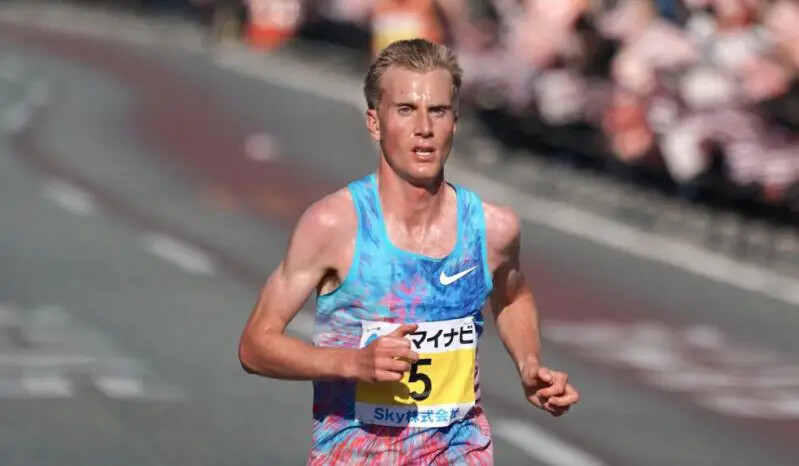
Kenya’s Charles Ndiema and Ser-Od Bat-Ochir of Mongolia as well as Ethiopia’s women only 5k world record holder Senbere Teferi had to withdraw from the race recently. However the women’s elite field of the Vienna City Marathon looks strong. Ten athletes have personal bests of sub 2:30 and four of them have already run faster than 2:23:30.
The former Paris and Rotterdam Marathon champion Visiline Jepkesho is the fastest woman in the field with a PB of 2:21:37. It looks likely that a Kenyan women will win the Vienna City Marathon for a sixth time in a row since the next couple of athletes on the entry list are also from Kenya. Magdalyne Masai (PB: 2:22:16), Rebecca Tanui (2:23:09) and Agnes Keino (2:23:26) should be among the contenders in Vienna. Fellow-Kenyan Caroline Jepchirchir hopes to improve her PB of 2:26:11 and could be among the top finishers. Poland’s Angelika Mach and Branna MacDougall of Canada are the fastest non-African runners on the list with PBs of 2:27:48 and 2:28:36 respectively. Julia Mayer of Austria is expected to perform well and might achieve a time of around 2:30:00.
(04/15/2023) ⚡AMPby AIMS
Vienna City Marathon
More than 41,000 runners from over 110 nations take part in the Vienna City Marathon, cheered on by hundreds of thousands of spectators. From the start at UN City to the magnificent finish on the Heldenplatz, the excitement will never miss a beat. In recent years the Vienna City Marathon has succeeded in creating a unique position as a marathon...
more...New unbelievable Netflix documentary unpacks 2013 Boston Marathon bombing
This year marks the 10th anniversary of the 2013 Boston Marathon bombing, which shook the world and the running community, killing three and injuring more than 200 people. On Wednesday, April 12, Netflix will release a three-part documentary series, American Manhunt: The Boston Marathon Bombing, which looks back on the attack and its aftermath, but also on the past 10 years and the events that have transpired since the bombing.
The documentary looks at the four days after the bombing and the 101-hour search for 19-year-old Dzhokhar Tsarnaev and his 26-year-old brother Tamerlan. Tamerlan Tsarnaev died on April 19 (four days after the marathon), following a confrontation with Boston police, and after his brother accidentally hit him with a stolen SUV while trying to escape. Dzhokhar Tsarnaev was convicted of the bombing and sentenced to death in 2015. He remains on death row.
American Manhunt also features never-seen interviews with members of law enforcement, such as then-Boston Police Department superintendent William Evans and then-Boston Police commissioner Ed Davis; survivors including Karen McWatters, whose friend Krystle Campbell died in the attack and who lost her leg as a result of the bombing; and Youssef Eddafali, who had been a friend of Dzokhar’s before the bombing, and more.
“It took a very long time for us to be able to contextualize and understand what happened in such an unbelievable manhunt, but also emotionally, in terms of what happened to the victims and to the entire city,” said director Floyd Russ in an interview to The Independent. “There are so many different types of trauma in the story.”
The city of Boston will observe the 10th anniversary of the attacks on Saturday, April 14, with One Boston Day: a day for volunteer events and acts of kindness. There will be a shoe drive, a donation drive for food, baby supplies, and clothing, and a blood drive, plus many other initiatives to honour the city’s “spirit of care for one another in response to the tragic events from 2013.”
The documentary will be released on Netflix U.S. and Canada on April 12.
(04/15/2023) ⚡AMPby Running Magazine
Unlock the Benefits of Kinesiology Tape
How to use this stretchy, therapeutic tape to effectively reduce pain and support muscles, tendons, and ligaments (almost) anywhere on your bodyWhatever your sport, avoiding or mitigating injuries is as important as logging miles or sessions. But if you find yourself toeing the line between pushing it too far or sitting on the sidelines, one preventative measure can help support your body so you can keep training: kinesiology therapeutic tape. Utilizing this elastic tape to reduce injuries and boost performance isn’t a revolutionary idea in exercise science—especially when integrated with other body maintenance and recovery best practices. Using the right tape effectively, however? Now that’s another story.
And it’s not just elite athletes who can benefit, either. You don’t need to resemble the colorfully taped Olympic beach volleyball champs who come to mind. When applied correctly, kinesiology tape can ease pain, mitigate injuries, and reduce post-workout muscle soreness in mortal athletes engaged in any type of outdoor exertion or active venture. Here’s how.

Not surprisingly, not all kinesiology tapes are created equally. When you compare options, look for one that offers non-restrictive movement so you can continue to train comfortably. High-quality adhesives help tape to last longer, offering more support to the target area before, during, and after a workout. KT Tape Pro stands up to your toughest workouts. Made from synthetic fibers featuring an elastic core, this performance tape provides more support than cotton kinesiology tape without restricting movement. The adhesive also lasts four to seven days through sweat, swims, and showers—meaning it’s an easy addition to a daily, or even weekly, routine. Plus, rounded corners on each strip reduce snags and peeling. Sure, your old-school gym trainer’s tape can provide support in a pinch. And modernizing to a kinesiology tape can address a number of common athletic injuries. But creating the perfect balance of support and flexibility is an art. One of the most common errors? Applying the tape right before activity. It needs an hour to adhere; proper advance application time helps it last for days (vs. hours) of continuous use. Strips should also be sized long enough to cover the affected area without stretching 1.5 inches at either end. KT Tape Pro comes in pre-cut strips that take the guesswork out of taping. But before you even take the backing off the tape, watch a video to learn the proper taping technique for the target area (or areas) you’re experiencing pain. KT Tape has a library of 35+ video tutorials to help you utilize the tape like a pro. Seriously, you’ll feel like you just walked out of your PT’s office.
Once you have a game plan, it’s time to prep your skin before applying the tape. Remove any lotions, body oils, or sunscreen. You may want to trim excess body hair. Then, wipe down your skin with rubbing alcohol and let the area dry before applying the tape directly to your skin. For best results, apply KT Tape at least an hour before training. Removal is painless and simple even with body hair, where first applying some baby or mineral oil to the tape, or peeling off in the shower, can also help.Kinesiology tape isn’t just helpful for supporting muscle groups and injuries during training. If soreness affects your ability to stick to a movement routine, KT Tape can help your body recover by supporting sore muscles and joints before, during, and after your workout. Studies have shown kinesiology tape helps to aid recovery and reduce soreness by up to 50 percent when worn during and at least 48 hours after exercise. Integrate it into your routine as general preventative (eg. tape before, foam-roll after) and as a key body-maintenance tool to keep you out there performing with less pain and risk of injury.
KT Tape moves with you so you can crush every moment and unleash your potential. The product provides long-lasting support and pain relief for muscles, tendons, and ligaments for anyone who loves to move, wherever your adventures take you.
(04/15/2023) ⚡AMPby Outside
Hundreds of dogs to run at Boston Marathon to honour late pups
On April 16, hundreds of furry friends will take to the 127th Boston Marathon course to honour Spencer and Penny, the official Boston Marathon dogs who died of cancer in February.
More than 100 golden retrievers and their owners are expected to attend and walk to the finish line in a special one-mile event organized by a regional group called MA Golden Meetups. The doggo parade will be the day before the world’s most prestigious marathon on Patriots Day, April 17.

In 2018, Spencer went viral after he was seen in a video holding “Boston Strong” flags in his mouth, cheering on the marathoners racing past him in the rain. Since 2014, Spencer has watched the marathon near Ashland State Park (around the five-mile mark on the Boston course), and Penny, who was three years younger, was often seen by his side.
This year’s race will be the first marathon Spencer and Penny will not attend since 2013. The two golden retrievers will also be commemorated on a billboard in Ashland, Mass., with the slogan “Forever Boston Strong.”
Boston Strong was a slogan created to empower the community after the 2013 Boston Marathon bombing. This year marks 10 years since the catastrophic event.
“We miss you and are proud to call you a friend and forever the ‘Official Dog’ of the Boston Marathon,” the Boston Athletic Association (B.A.A.) said in a tweet.
The dog walk will start at 10 a.m. outside the Boston Common and end at the Boston Marathon finish line on Boylston St. “In memory of Spencer and Penny, the Boston Marathon Goldens, and so many of our beloved furry members who have battled canine cancer,” the website states.
(04/15/2023) ⚡AMPStrava adds Spotify integration in new update
After years of having to switch back and forth between apps, Strava has finally introduced music integration with Spotify. The world’s most popular fitness tracking app for runners will release a new update on April 20, launching Spotify integration to help all users easily access music, podcasts and audiobooks from the Strava app.Users can now play, pause, resume, skip and browse songs from the record screen on the fitness tracker app.
There is no longer a need for Spotify users to switch between the two apps while running to put on their favourite song or podcast. This new integration easily allows users to connect to their favourite tunes and sounds with a tap of a button.

This new integration works for premium and free Strava users.
“We are excited to partner with a global leader like Spotify to seamlessly integrate music and movement on Strava,” said Mateo Ortega, Strava’s VP of connected partnerships. “This new feature further solidifies Strava’s position at the center of connected fitness and continues to demonstrate the power of the global community of active people on the app.”
"One of our biggest goals at Spotify is to be everywhere our listeners are–whether that’s on a run, in the gym, or any place in between,” said Ian Geller, VP of development at Spotify. “The integration with Strava is another way we are moving with our listeners and helping them connect to the music and audio they love.”
To celebrate their new integration, Strava has taken over the popular Spotify “Workout” playlist. Therefore users can listen to the top curated workout songs to help them get moving on April 20. You can check out the Spotify playlist here.
(04/15/2023) ⚡AMP
by Running Magazine
Evans Chebet will be facing the fastest man in the world to defend his Boston Marathon title
Boston Marathon champion Evans Chebet relishing clash with the real ‘G.O.A.T’ .
Evans Chebet will be facing the fastest man in the world over the distance when he steps on the road on Monday to defend his Boston Marathon title.
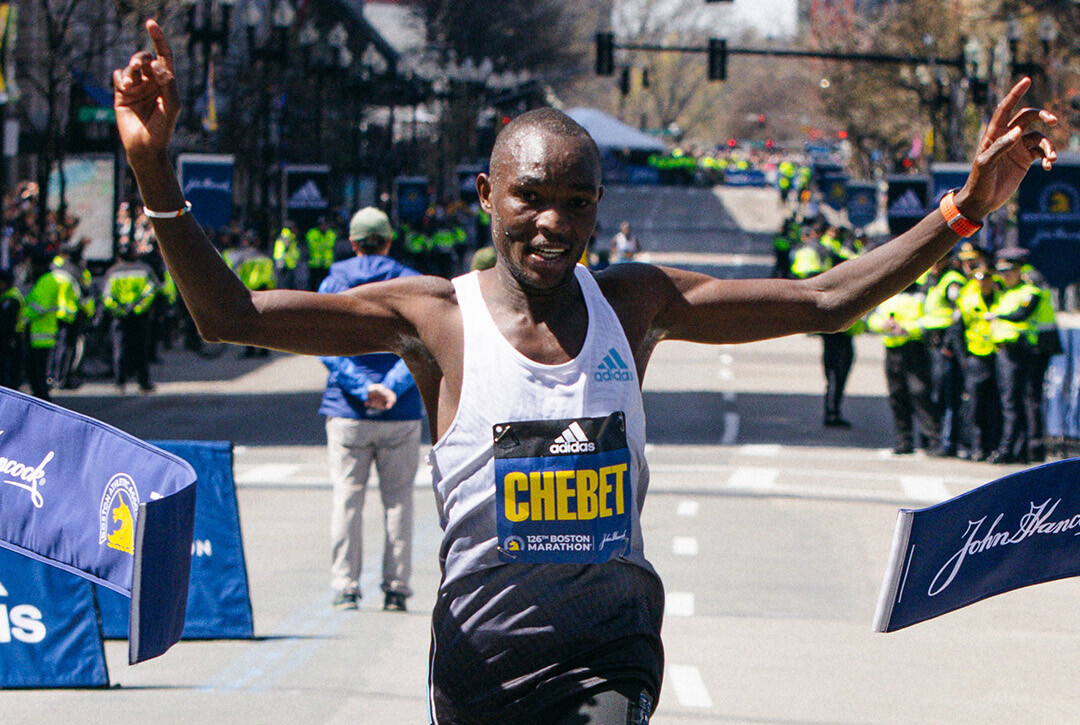
Chebet cannot wait to clash with marathon record holder Eliud Kipchoge whom he will be racing against for the first time in his career.
The Kapsabet-based Chebet says he is highly motived to compete against Kipchoge considered the Greatest of All Time (G.O.A.T) in marathon racing.
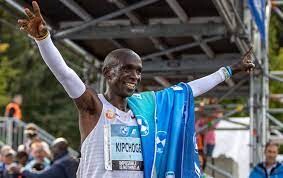
“I have never competed against the fastest man over the distance. We are finally meeting in Boston and I believe the race will be faster and that will help me improve on my personal best. My target is to be on the podium. Expect an exciting race on Monday,” said Chebet who trains under 2Running Athletics Club in Kapsabet, Nandi County.
Chebet, will also be competing against his compatriot and training mate Benson Kipruto.
The reigning Boston Marathon champion said that his preparations for the race have gone on well, he is injury free and wants to show what he has got on the road on Monday.
“I love the Boston Marathon course and given that we shall be competing with other Kenyans, it will be a tough affair but a race normally starts after 35km and that is where you can know if you will finish as a winner,” said Chebet.
In last year’s race, Chebet pulled away from a loaded field in the last few kilometres to surge to victory in 2:06:51. Compatriot Lawrence Cherono finished second in 2:07:21 while Benson Kipruto was third in 2:07:27.
Kipruto, Chebet's training partner, won the 2021 Boston Marathon champion.
He will be coming up against Kipchoge for the second time on Monday after the 2021 London Marathon where he emerged seventh while Kipchoge settled for eighth position.
“In 2021, I competed against Kipchoge though we both finished outside the podium. I believe that we'll have a good race this year. I will be eyeing a podium position despite the stiff competition. It's a rich field but I will do my best and apply what I have been working on in training,” said Kipruto, the 2022 Chicago Marathon champion.
Other Kenyan athletes who will be competing in the race include John Korir who was third in last year’s Chicago Marathon, Nobert Kigen, Mark Korir, who was second in 2022 Berlin Marathon, Michael Githae, and the 2021 New York Marathon champion Albert Korir.
(04/14/2023) ⚡AMPby Bernard Rotich
Boston Marathon
Among the nation’s oldest athletic clubs, the B.A.A. was established in 1887, and, in 1896, more than half of the U.S. Olympic Team at the first modern games was composed of B.A.A. club members. The Olympic Games provided the inspiration for the first Boston Marathon, which culminated the B.A.A. Games on April 19, 1897. John J. McDermott emerged from a...
more...Australian YouTuber Beau Miles runs marathon in a hotel
Australian YouTuber Beau Miles was looking for a change of scenery on his morning run in Seattle, so he decided to run a marathon inside the Hyatt Hotel, where he was staying.
Miles’s goal was to run every inch of the hotel, including hallways, stairwells, conference rooms, lobby, pool deck and bar, and anywhere else that was remotely runnable.

“When I asked for permission from the hotel manager, I was shocked when she said yes,” said Miles. “I even asked: Are you sure about that?, and she replied, “Yes, that’ll be fine.”
In the video, Miles (an ideal last name for a runner), jogs around the hotel and is seen even making pit stops at the continental breakfast, referring to it as his “unsanctioned aid station.”
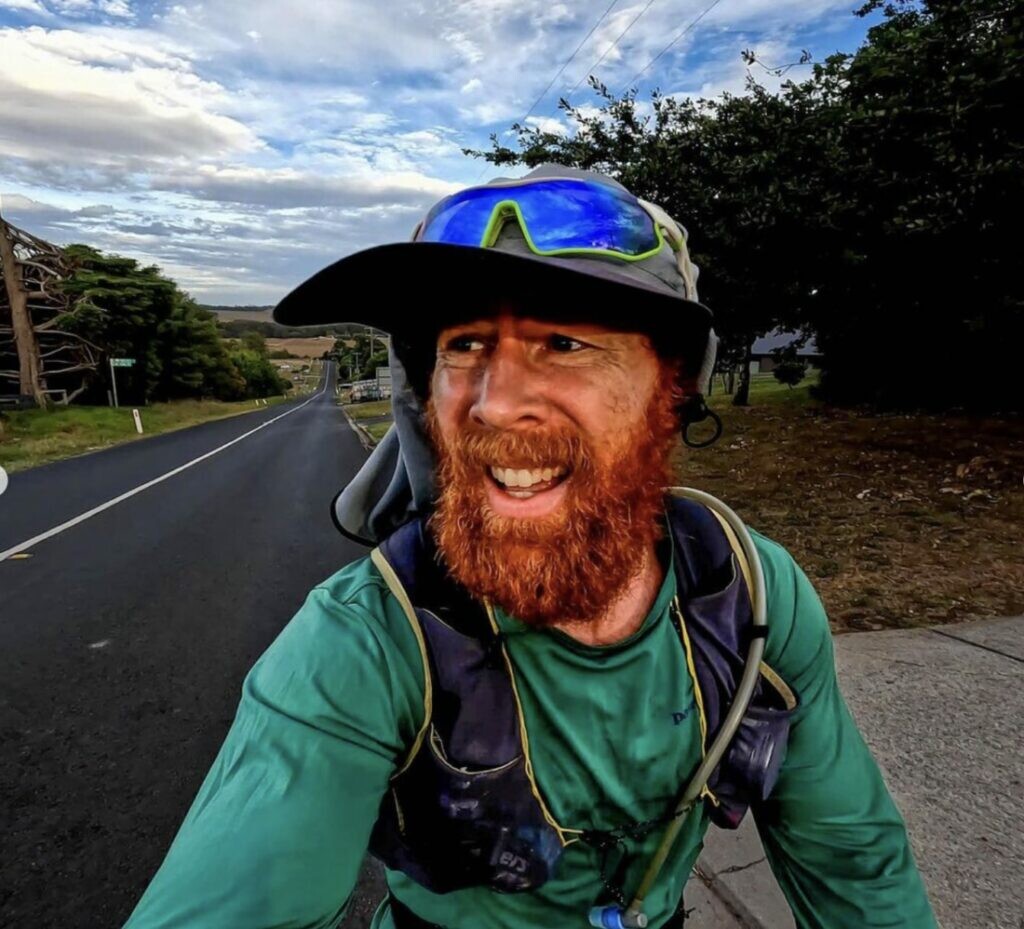
Running around in the same building may seem a little tedious, but according to Miles’ calculations, each lap (every floor and room) was around 10 kilometres. “The novelty of running a marathon in a hotel did not wear off,” said Miles. “I had a bloody good time, and I got to run in a place I normally wouldn’t get the chance.”
Miles is an Australian outdoorsman and YouTuber with over 500,000 subscribers, who does quirky outdoor challenges around two activities that usually don’t go together, like running a marathon in a hotel. He’s also done other outlandish running challenges on YouTube, such as running a mile an hour for 24 hours, and a 90-kilometre work commute.
(04/14/2023) ⚡AMPby Running Magazine
Running 900 km to the Boston Marathon2
On Tuesday night in Toronto’s Parkdale neighborhood, it was business as usual for community builder Quinton Jacobs. Jacobs and his team of 13 runners departed on their four-day, 904.5-kilometer journey from Toronto to the historic Boston Marathon finish line on Boylston St.
The team left Toronto on April 11, at 8 p.m. and plan to arrive in Boston on Saturday–two days before the start of the 127th Boston Marathon.
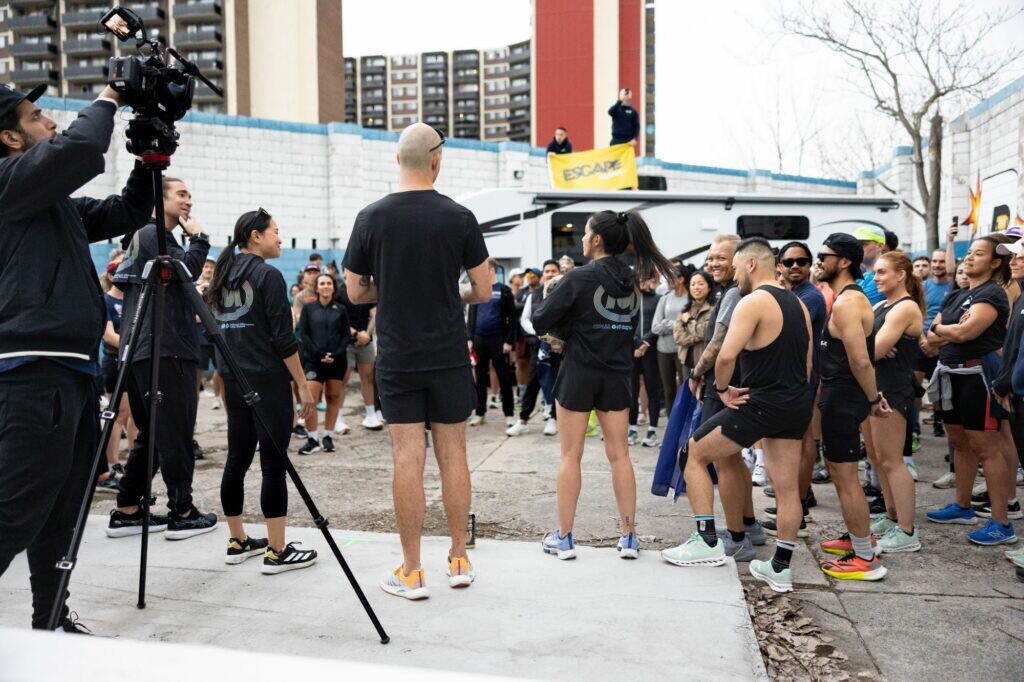
Jacobs’s Escape project started out as a ridiculous idea with his friend Anoke Dunston on a 2019 trip to New York. “We saw the first Escape to NYC as a challenge,” he says. But Jacobs ended up tearing his Achilles playing basketball before the journey started, so he did not get to run in New York City.
After Escape to NYC, Jacobs and Dunston knew that the project had the potential to turn into something extraordinary. In 2021, the two men ran to Chicago for the Chicago Marathon with a team of 12 runners from different backgrounds. “We decided that Chicago was our canvas, and we wanted to create something entirely new,” says Jacobs.

Their past two destination ultras to New York and Chicago have been done in the fall, and Boston is their final major, facing their hardest Escape route to date, encountering the Appalachian Mountains of upstate New York and western Massachusetts.
“Escape is about celebrating the diversity of our running community,” says Dunston. “Our goal is to bring people together, no matter their background.”
The team aspect is special for Jacobs, who met his teammates through volunteering in the running community. “We have a team of people from Toronto, Montreal, New Orleans and Chicago,” says Jacobs. “People are all tapped into our ground for all different reasons–it’s special.”
Jacobs is a familiar face to many in the Toronto running scene, as he has been giving back to the city as a volunteer for seven years. He was named community builder of the year by Canadian Running in 2021.
This year Jacobs, Dunston and Hamilton’s Andre Morgan launched their own not-for-profit charity, Ubuntu, which gives back to underprivileged communities in Toronto. Ubuntu is a Zulu word meaning that we are all connected and that one’s sense of self is shaped by relationships with others. “I love to bring people together, where they can enjoy each other’s company.”
Toronto filmmaker and videographer Jason Dam of Tenfold Productions will accompany Jacobs, Dunston and the 11 other runners, capturing all the emotions and moments from their Boston journey into a documentary.
“Running isn’t the hard part,” says Dunston. “The hardest part is battling your body on sleep deprivation and trying to be the best version of yourself for the team.”
“There’s a beauty and a struggle to all our Escape challenges,” Dunston says. “But I think the triumph to battle through means everything.”
You can follow their journey from Toronto to Boston via their Instagram page, @escape_to___. The Escape to Boston team is projected to arrive in Boston on the morning of April 15, and is hosting a panel discussion at the Boston Marathon expo on Saturday at 4 p.m. on how ultra running is changing.
(04/14/2023) ⚡AMPby Marley Dickinson
Boston Marathon
Among the nation’s oldest athletic clubs, the B.A.A. was established in 1887, and, in 1896, more than half of the U.S. Olympic Team at the first modern games was composed of B.A.A. club members. The Olympic Games provided the inspiration for the first Boston Marathon, which culminated the B.A.A. Games on April 19, 1897. John J. McDermott emerged from a...
more...No Time to Run? Five Creative Ways to Find Time
Our lives are busier than ever.
We are all frantically juggling family life and long working hours; some statistics showing the average working week in the US to be close to 36 hours, with some professions working 40 or more.
That’s before we even include cooking, housework, gardening and DIY, social engagements, study and additional commitments.
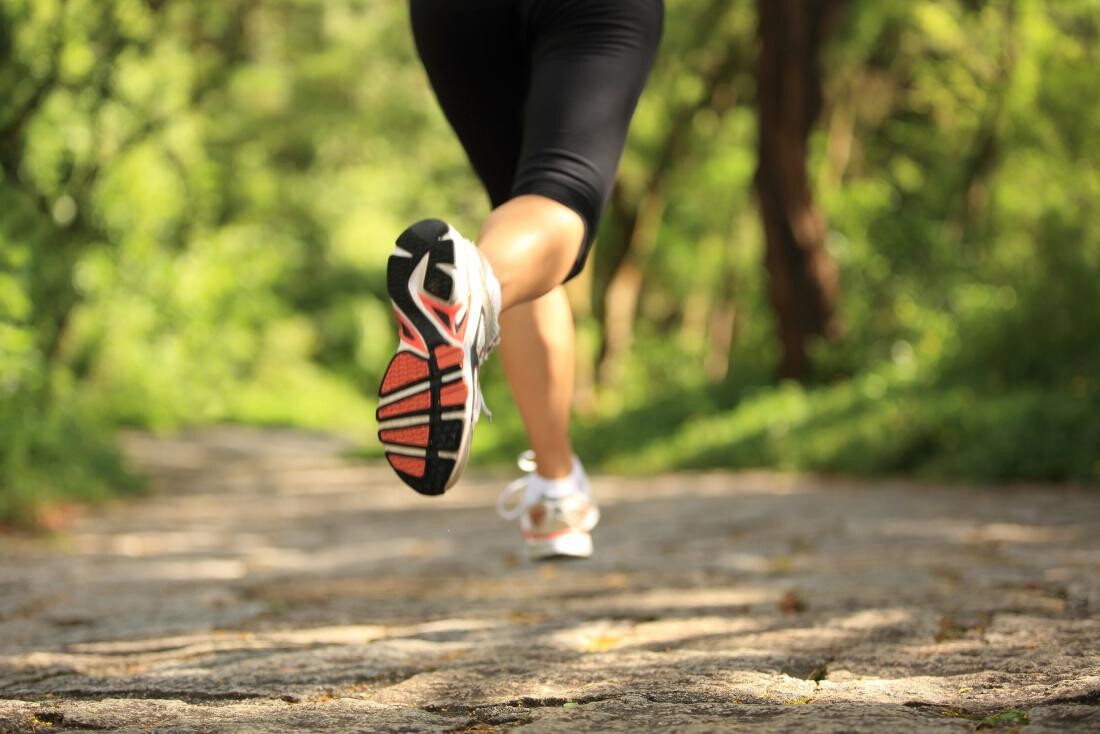
With so many demands placed on us, it’s no wonder that training slips down the list of priorities.
But lets look at things a little more closely.
Are we really that busy? Or are we just poor at time management or just making excuses?

Today we are going to dive into where our time goes, and how we can make sure running remains enough of a priority to consistently keep up with training. We will share things to think about when it comes to being creative with your training, and then 5 helpful ways to fit training in when life gets hectic.
Why Is There No Time For Running?
This chart is from The Bureau of Labor Statistics 2014 showing average leisure time of Americans (over the age of 15). A typical American has 5 hours of leisure time a day.
Take a look at the blue section of the chart. Imagine how much time we’d have for running if we didn’t spend nearly 3 hours of it watching TV? So if you’re spending a bit too much time in the blue segment of this chart, then the answer to the ‘How do I find time to run?’ question is quite easy.
Turn off the TV! And work on spending a bit more time in the purple section.
But lets say you don’t spend 3 hours a day watching TV.
Lets say you work long hours but on top of that, you might have children to care for, dogs to walk, housework, cooking, washing, ironing and admin to take care of. Finding time to run can be really tough.
Make running a priority using creative runner friendly hacks
The busier we get, the more creative we have to be about how we spend our time.
It’s easy to waste many hours on the internet, watching TV, on your mobile phone or just frittering time away. You have to get tough with yourself and become incredibly efficient – don’t get distracted by things are less important.
In our frantic, busy lives, if you really want to find time to run, you have to find a way to make it work and get organized.
According to Tony Phillips, aka ‘A Mile A Day’ from the UK, the main thing that stops us finding time to exercise is not giving it a high enough priority in our lives.
‘When we have enough time, we usually manage to fit exercise in’ he explains ‘but when we get busy, exercise is the thing that gets pushed aside, because it’s not deemed as important. But running is one of the best ways to help us deal with stress and overwhelm. Yet the time when we need it most, is the time we tend to short-change ourselves’.
We all know intrinsically that exercise is one of the most important things we can do for our health and we need to make it a top priority, but it’s easier said than done.
‘People who make exercise high in their list of priorities are generally the ones who manage to fit it in’ explains Tony, ‘They understand the connection between physical fitness, health and mental wellbeing’.
That is certainly true for me.
I’ve learned over the years that running is a vital part of my life. It’s like medication, and without it I feel physically sick, grumpy and can’t function well.
That doesn’t mean I’m always joyful about going for a run, it just means that I need it in my life and on the days I run I ALWAYS feel better.
So I’ve learned to prioritize. It might mean I go to bed early, or it might mean I miss out on a social event or a TV show, so I can get up early the next day to run.
Rather than going out for dinner too often with my husband, we choose to have a ‘date run’ instead. We get to spend time together and catch up, but we’re doing it at the same time as running, rather than over a bottle of Rioja. Same goes for catching up with girlfriends for a coffee. Instead, we meet for a run or at the very least a dog walk.
It’s not an obsession; it’s just a choice. And in our busy lives, we can’t have it all. We have to make choices.
Schedule your run into your day for a guaranteed win
According to Tony, there are two other behaviors that set successful runners apart from the ‘excuse makers’. ‘The other thing they do is schedule it into the day’ says Tony ‘they know it’s high priority, and they don’t immediately move it when something else comes up.
They also recognize that a short run is better than none at all. Even just one mile a day is easier to fit into gaps in your schedule, and keeps you in the routine of regular exercise’.
Little and often is the key.
It’s better to be consistent, but do regular short runs, rather than overwhelm yourself with big mileage goals.
On that note, I find standard training plans for busy people often don’t work. You need to devise your own flexible plan to fit in around your own lifestyle or work with a coach who understands you and can tailor your training to your life conflicts. This is where Runners Connect individualized training comes in!
Learn HOW to train, what you need to do to meet your goals and work with your schedule to make it happen. A strict training plan (which isn’t personalized to you) can add more stress and the sense of failure when you don’t manage to follow it.
Make it a challenge to find creative ways to get your run in
Developing a ‘growth’ mindset is a vital tool to helping you become more efficient at prioritizing your running.
The ‘growth’ mindset is a concept developed by Carol Dwerk, a Professor of Psychology at Standford University.
Now:
It’s much more than having a ‘positive attitude’.
It teaches us that we can change the way we think; finding solutions to problems rather than seeing barriers. Becoming more resilient and resourceful.
Someone in the fixed mindset (which is bad) might say ‘I have a long commute to work I don’t have time to train’.
Whereas someone in the growth mindset would think ‘I have a long commute, could I spend some of that running, change my stop on the train or run part of the way home? How can I make that happen? What do I need to do to make it work?’
It’s about looking for creative solutions and finding ways around barriers.
Don’t ‘go hard’ all the time
There is no scientific evidence for this (you heard it here first), but it’s something I’ve noticed over the last 20 years of my coaching work.
Running hard every single time you go out could be making it difficult for you to stay on track with your training.
Runners Connect often posts about the importance of easy running, how 80% of your runs should be easy, even if you are only running a few times per week.
”If your brain always associates running with pain, eventually it’ll persuade you to stop.”
If on the other hand, your brain associates running with pleasure and enjoyment (perhaps a slower pace and gradual increase of miles) then it’s far more likely you’ll continue and WANT to go running, rather than dread it. Try it and see what happens.
5 Ways To Fit Your Training Into A Busy Schedule
‘Get your training done as early in the day as you can’ advises Tony. ‘Go to bed early, get up early and get it done. It sets you up for the day and makes your more productive. There will ALWAYS be something else to do, so get your run done first’.
‘Make it a habit’ continues Tony ‘Habits are easy to form when you do them every day. Even if you don’t run every day, try to make it the same TIME each day you run. It helps to have a trigger. For example, you run immediately after getting up, or always at lunchtime at work. The idea is that you embed it as something you do automatically’.
Don’t underestimate the power of a training partner. Training with someone else at least once a week is a great way to make sure you get out there and run. Book in with a friend or group session. The commitment of meeting someone else will mean you’ll be less likely to let them down and you’re more likely to train. If you do not have anyone else in your area to run with, get many of the same benefits by joining a running community like Coach Jamie Dodge talked about in the podcast Do I Need a Running Coach?
‘Make sure your training schedule works for everyone else in the household’ advises Tony. ‘If you’re finding it tough to get out, and the people around you are complaining or encouraging you stay at home, it makes it doubly difficult’. Perhaps get them to join you? Or at least make sure they know your plans and how important it is to you. Don’t allow anyone else to derail you or your enthusiasm.
And finally, leave some gaps in your schedule. Life has a habit of disrupting plans and things always take longer than you think. ‘All time management systems work best when you build some spaces in for contingency’ says Tony. ‘It reduces stress and gives you another window to run when things go off schedule’
And if you’re still struggling, here’s a final piece of advice from Life Coach and time management guru Tony Philips:
“You have 168 hours each and every week. If you work a 40-hour week and sleep 8 hours every night, that leaves 72 hours or just over 10 hours per day.
Of the remaining time how much of it do you spend doing things that benefit you less than training, such as watching television, wasting time on your computer, playing video games or on your mobile phone?
(04/13/2023) ⚡AMPby Sarah Russell
Indefatigable Edna Kiplagat to tackle Boston course again, at 43
It is commonly said that age is nothing but a number.
At 43 years old, two-time world marathon champion Edna Kiplagat will be out to prove that when she lines up among the elite athletes for the 127th Boston Marathon race on April 17 in the USA.

She will be heading to Boston for the sixth time where she is optimistic of good results after training for the last four months.
Nation Sport caught up with her at Kipchoge Keino Stadium in Eldoret, Uasin Gishu County while she was doing her speed session in readiness for the race.
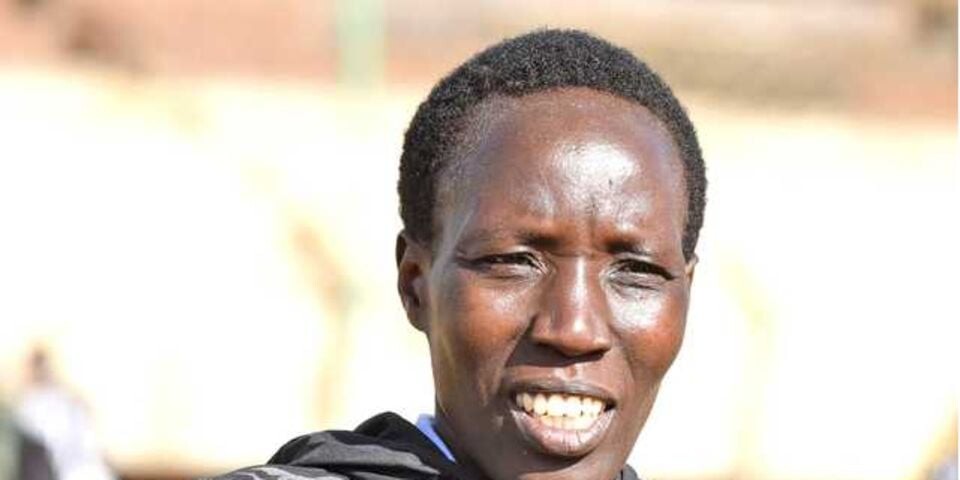
Maiden win
Kiplagat won the title at her first attempt in Boston in 2017. She returned the following year but finished ninth, in 2019 she was second. The 2020 edition was postponed due to the Covid-19 pandemic.
She went back in 2021, finishing second behind Diana Kipyokei, but was later declared the winner after Kipyokei was banned for using a banned substance.
Kiplagat was fourth last year.
Kiplagat who lives and trains in Colorado, USA said she shifted her training to Kenya which has favourable weather conditions.
“I started training in December last year when I learned that I will be racing in Boston. But in January and February, it was so cold in the US, I decided to come to Kenya because the weather is favourable,” said Kiplagat.
She will be competing against Kericho-based Sheila Chepkirui, former New York Marathon champion Joyciline Jepkosgei, 2021 Amsterdam Marathon Angela Tanui and Fancy Chemutai.
Also in the elite field are Maurine Chepkemoi, Mary Ngugi, Viola Cheptoo, Vibian Chepkirui and Hellen Obiri.
(04/13/2023) ⚡AMPby Bernard Rotich
Boston Marathon
Among the nation’s oldest athletic clubs, the B.A.A. was established in 1887, and, in 1896, more than half of the U.S. Olympic Team at the first modern games was composed of B.A.A. club members. The Olympic Games provided the inspiration for the first Boston Marathon, which culminated the B.A.A. Games on April 19, 1897. John J. McDermott emerged from a...
more...Runners chase popular Strava segment in Denver airport
Here's an idea of how to kill time waiting for your next flight.
Strava segments are an athlete’s best friend, and there is nothing more infuriating when you get an email about someone who took one of your crowns or local legends, especially if it’s in a place you can’t get to. This 150-meter Strava segment in Terminal B of the Denver International Airport has gained popularity online after a few runners posted TikTok videos of them sprinting through the airport, trying to beat the record.
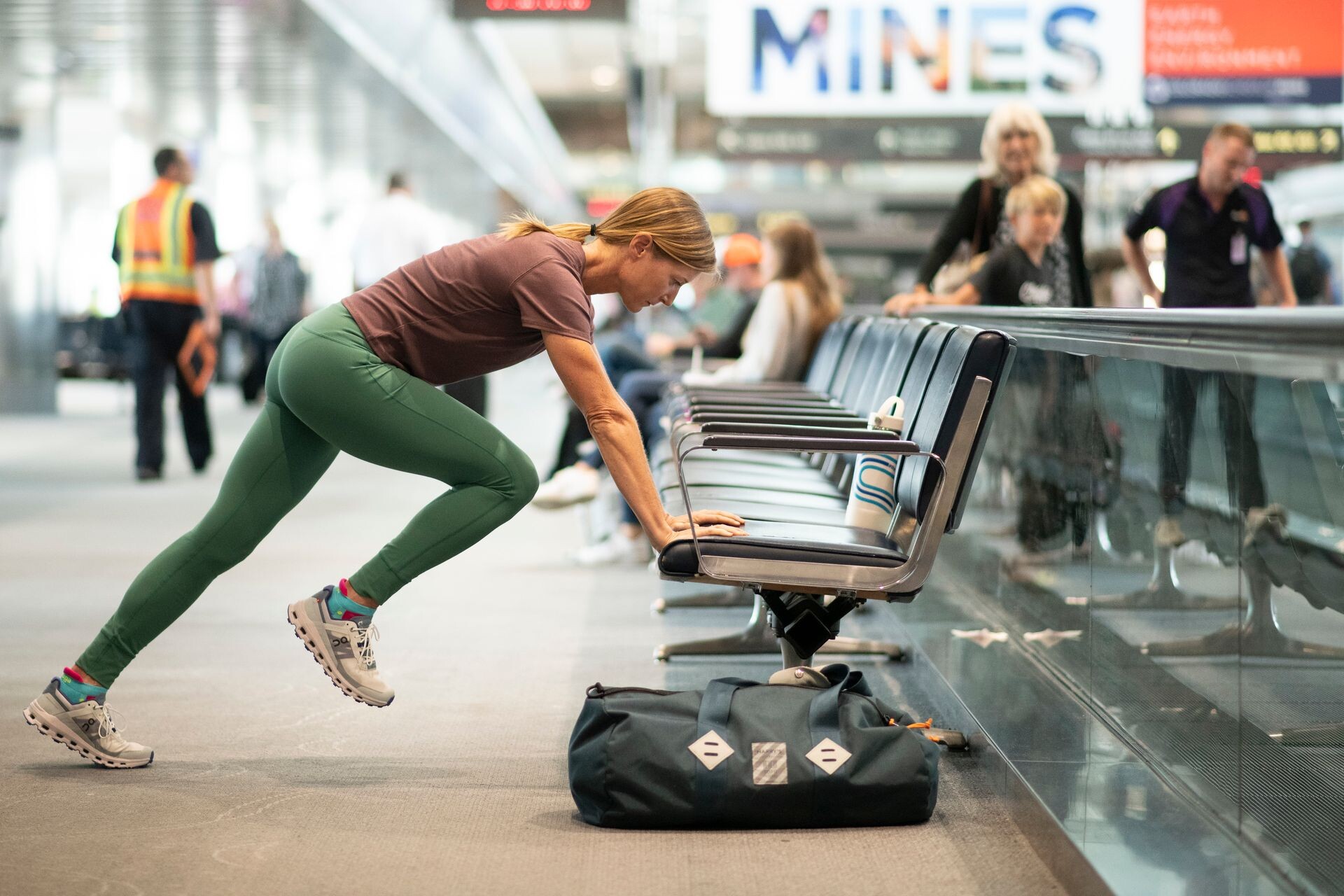
By the looks of it, the segment named “gate change gnar” is a 150-meter sprint in Terminal B at Denver International Airport. The record time is 19 seconds and is held by Jared Murphy of Provo, Utah, and Elsa Westenfelder of Missoula, Mon., who has the women’s CR of 26 seconds.
Segments are one of Strava’s most popular features, as it gives everyday runners a glimpse of how their times stack up against their friends and other runners. Segments are portions of popular running and cycling routes created by Strava members where athletes can compare times and see where they stack up on a leaderboard.
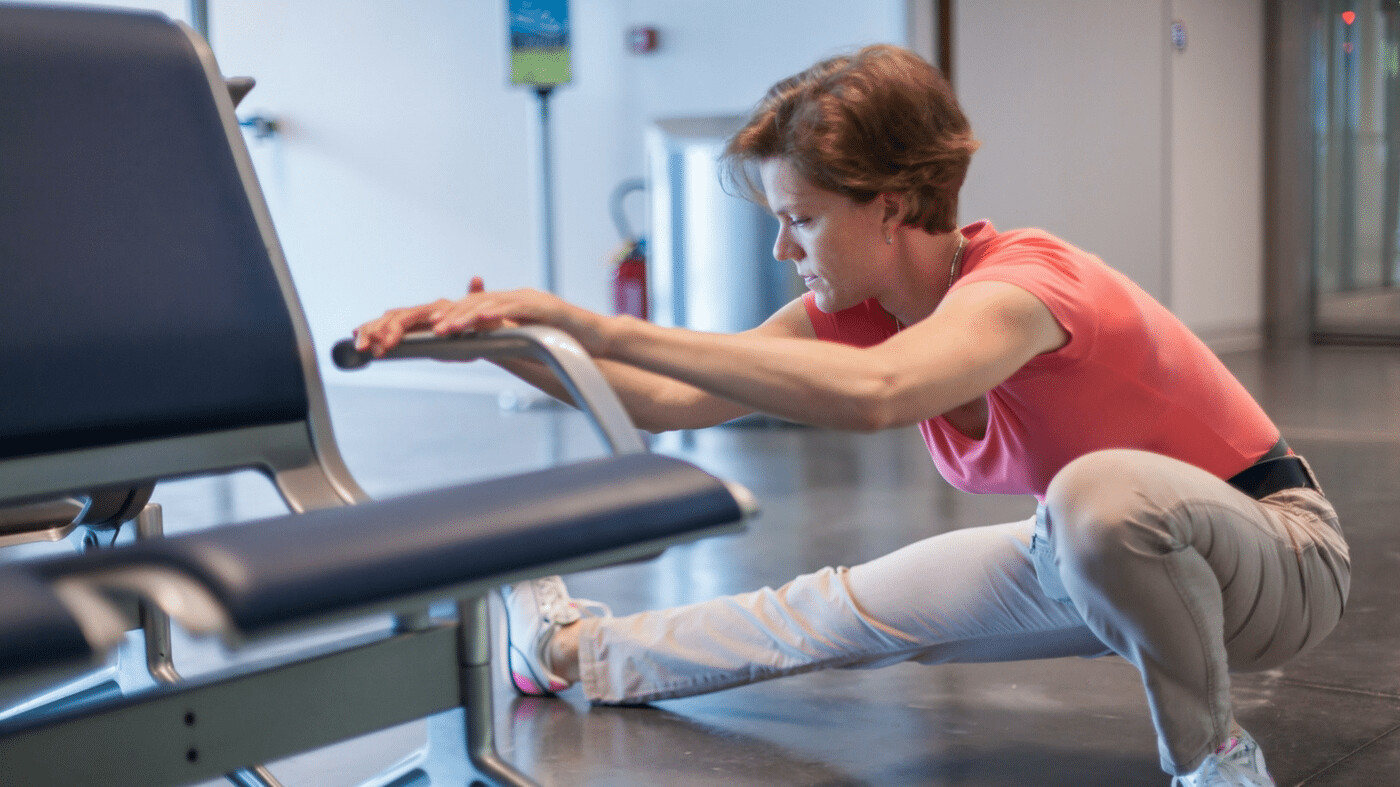
Most people will kill time waiting for their flight at a restaurant, bar or shop–you truly know you’re a runner (or addicted to Strava) when you’re thinking about how you can become the local legend in ‘Terminal A Sprint’ in the two hour time window before your flight to Miami.
In a few videos, the runners received a few strange looks from security and airport patrons, which I don’t blame them for. An airport can be a great place for segment chasing because if you do get stopped by security, you could say you were trying to catch your flight.
(04/13/2023) ⚡AMPby Running Magazine
Hamburg might be in for another Ethiopian marathon stunner
Another Ethiopian world-class runner could produce the headlines of the women’s race at the Haspa Marathon Hamburg on 23rd April. A year ago Yalemzerf Yehualaw smashed the course record with a sensational time of 2:17:23 which was also an unofficial world debut record. This time youngster Tiruye Mesfin heads the women’s start list with a world-class personal best of 2:18:47.
With this time the 20 year-old is the fastest woman marathon runner ever entered into the race. Among a group of athletes with personal bests between 2:22 and 2:25 is Italy’s Giovanna Epis, who might want to attack the Italian record on the fast Hamburg course.
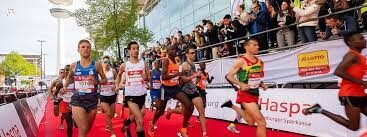
“After last year’s sensational race by Yalemzerf Yehualaw we are now looking forward to welcoming another super fast Ethiopian woman to Hamburg. It seems Tiruye Mesfin could produce something special here as well,“ said chief organiser Frank Thaleiser.
At the age of just 20 Tiruye Mesfin ran one of the fastest marathon debuts ever in Valencia in early December last year. In an extraordinary strong field she was sixth with 2:18:47. With such a time she would have won most of all other international marathons. Additionally Tiruye Mesfin, who started competing internationally in autumn 2021, showed very promising form little over three weeks ago, when she was fourth in the Lisbon Half Marathon with a personal best of 66:31.

Tiruye Mesfin’s strongest rival in Hamburg could well be a fellow-Ethiopian: Sintayehu Tilahun is still a newcomer to the international road running circuit as well. The Haspa Marathon Hamburg will be the third race over the classic distance for the 23 year-old. After a 2:45:06 debut win in a small Italian race near Udine in 2021 she ran the Milano Marathon a year ago, finishing second with a huge PB of 2:22:19.
It was in Valencia in December, when Giovanna Epis came agonizingly close to breaking the Italian marathon record. The 34 year-old improved to 2:23:54, missing the record of Valeria Straneo by just ten seconds. The Haspa Marathon Hamburg could be the race for Giovanna Epis to give it another try.
Stella Chesang will run her marathon debut in Hamburg on 23rd April. The multiple national record holder from Uganda has a half marathon PB of 68:11. The Commonwealth Games 10,000 m champion from 2018 has shown strong form recently, when she took tenth place at the World Cross Country Championships in Bathurst, Australia, in February. The Ugandan marathon record of 2:23:13 could be within reach for Stella Chesang.
(04/13/2023) ⚡AMPby Christopher Kelsall
Haspa Marathon Hamburg
The HASPA MARATHON HAMBURG is Germany’s biggest spring marathon and since 1986 the first one to paint the blue line on the roads. Hamburcourse record is fast (2:05:30), the metropolitan city (1.8 million residents) lets the euphoric atmosphere spill over and carry you to the finish. Make this experience first hand and follow the Blue Line....
more...Elite Fields Released For USATF 1 Mile Road Championships At The Grand Blue Mile
Elite Fields Released For USATF 1 Mile Road Championships At The Grand Blue Mile.
On November 30, 2022, World Athletics, the international governing body of the sports of track and field and road running, announced that an official world record for the road mile would be introduced beginning on January 1, 2023.
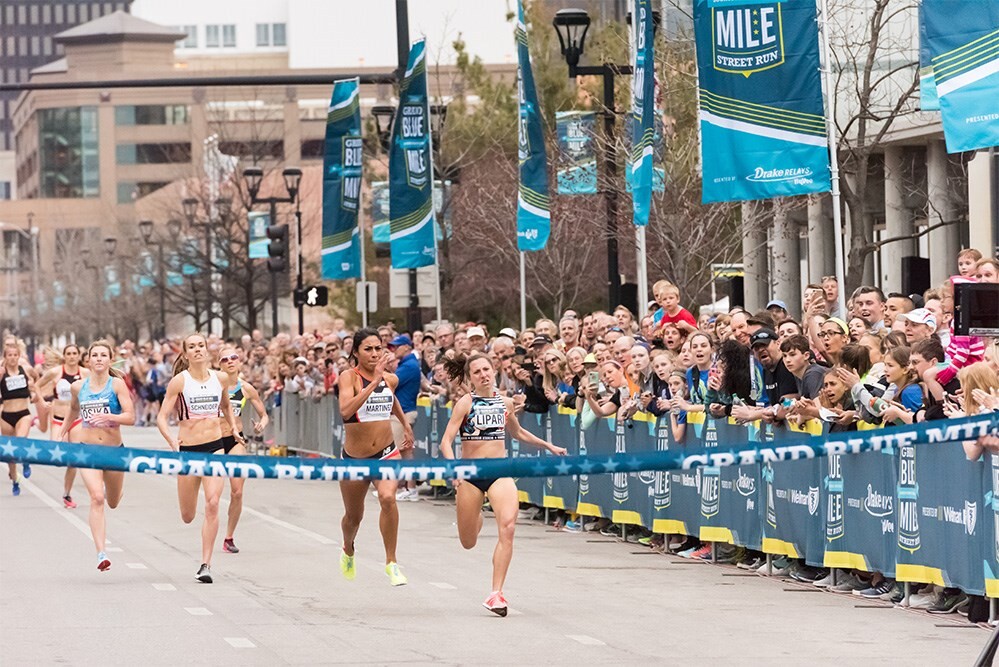
The flat and fast Grand Blue Mile course meets all requirements for World Record ratification, quickly distinguishing the 2023 USATF 1 Mile Road Championships as a destination for American athletes aspiring to make history. For immediate ratification, a World Record will require a performance of at least 3:50.00 for the men and 4:19.00 for the women. If the listed standards are not met by September 1, the fastest recorded, record-eligible performances will be recognized as the World Records.
After thousands of recreational and competitive runners have navigated the 1 mile course through downtown Des Moines, more than 40 elite runners will compete for the title of USA Road 1 Mile Champion. Those runners include four former 1 Mile Road Champions in Sam Prakel (2020), Katie Follett (2017), Nikki Hiltz (2019) and the defending men’s champion Vincent Ciattei.

Ciattei won last year’s race in 4:03 but owns a personal best of 3:51 and was an NCAA runner-up in the mile and 1,500m as a collegian at Virginia Tech.
Prakel claimed the title in 2020 in a COVID pandemic-altered race that finished in Drake Stadium. He aims to add a third national title to his resume this year, as he recently claimed USATF indoor titles in the 3,000m and 1,500m. The men’s field also includes faces familiar to the Grand Blue Mile in Shane Streich, who finished third last year, and Abe Alvarado, who was fourth in 2021.
Nikki Hiltz, a champion in the event in 2019, returns to Des Moines fresh from the USATF Indoor Championship in the 1,500m they captured in March. The 2019 Pan-American Games gold medalist was also a 2019 World Championships qualifier.
Sinclaire Johnson joins the field to make her Grand Blue Mile debut after winning the USATF Outdoor 1,500m title in 2022 to earn her a spot at the 2022 World Championships, where she finished sixth.
The women’s lineup also includes a pair of Iowa talents returning to Des Moines in Alex Teubel and Abby Kohut-Jackson. Teubel, an assistant coach at UNI, finished third in last year’s race, and the Lisbon, Iowa, native was an Olympic Trials finalist in the 3,000-meter steeplechase. Kohut-Jackson is a product of Ballard, Iowa, who advanced to the USATF Outdoor Championships finals in the steeplechase and was Big Ten champion in the event at the University of Minnesota.
The fastest road mile ever run on Iowa soil was at the inaugural Grand Blue Mile in 2010, when Boaz Lalang won in 3:54.3. A special incentive has been created for the winner, who eclipses that time or 4:29.3 in the women’s championship race. A performance that is successfully ratified as a new World Record will earn an additional $5,000 bonus.
The full fields are listed below.
Men’s USATF 1 Mile Road Championship
Colin Abert
Abe Alvarado
Michael Brannigan
Jacob Brueckman
Luca Chatham
Vincent Ciattei
Casey Comber
Graham Crawford
Owen Hoeft
Austin Dalquist
Jonathan Davis
Kasey Knevelbaard
Nate Mylenek
Craig Nowak
Sam Prakel
Nick Randazzo
David Ribich
Nate Sloan
Shane Streich
Women’s USATF 1 Mile Road Championship
Stephanie Brokaw
Katie Camarena
Alli Cash
Anna Connor
Micaela DeGenero
Katie Follett
Eleanor Fulton
Jessa Hanson
Nikki Hiltz
Marisa Howard
Sinclaire Johnson
Abby Kohut-Jackson
Melissa Menghini
Shannon Osika
Angel Piccirillo
Colleen Quigley
Jenn Randall
Emily Richards
Helen Schlachtenhaufen
Alex Teubel
Emi Trost
Addy Wiley.
(04/12/2023) ⚡AMPby Letsrun
Grand Blue Mile
The Grand Blue Mile was created by Wellmark Blue Cross and Blue Shield and the Drake Relays to encourage healthy habits and empower positive change. Held annually since 2010, the Grand Blue Mile has hosted more than 30,000 participants from 26 states, six countries, and four continents. The annual event brings friends and families together to celebrate wellness through a...
more...Former Red Sox Pitcher Ryan Dempster will Make His Marathon Debut in Boston
This year’s Boston Marathon is set to have plenty of Boston sports royalty on hand—from Big Papi serving as the race’s grand marshal to Bruins legend Zdeno Chara lacing up himself. Now, former Red Sox pitcher Ryan Dempster, who pitched for the Sox on the day of 2013’s tragic Boston Marathon bombing, is set to make it his first marathon. While he only pitched for one season in Boston, his last as a pro, it was a memorable one for Bostonians as he helped lead them to a World Series title.
The two-time MLB All-Star, now 45, says he has always wanted to run a marathon. He was a distance runner in high school and frequently ran during his playing days to increase his endurance, but until now, he hadn't found the right time to debut at 26.2.

Realizing the date's significance and his connection to it, he knew the 2023 Boston Marathon was the perfect opportunity to finally make his marathon dream a reality. This year marks the bombing’s 10th anniversary, and the Boston Marathon has symbolized the city's perseverance and unity.
“It seemed fitting to do it 10 years after I played for the Red Sox,” Dempster told the Boston Globe. “It was perfect.”

On April 15, 2013, Dempster limited the Tampa Bay Rays to one run across seven innings. Just 41 minutes later, two bombs detonated near the race’s finish line. Three people lost their lives, and dozens more were injured.
The Red Sox's surprising success during the season made Fenway Park a symbol of hope for the wounded city, honoring victims and first responders before games. This tradition continued through the Red Sox's World Series victory that October.
Dempster, like Chara, is running to support a charity. He’ll be raising funds for the Lingzi Foundation, which honors the memory of Lingzi Lu, one of the first victims of the bombing. “I wanted to run for charity, and somebody suggested the Lingzi Foundation,” Dempster told the Globe. “I did some research, and it was a great fit.”
Dempster says that the way baseball allowed him to have a small part in the city's recovery changed his perspective on the sport.
“I only played one season in Boston, but it feels like 10 with everything that happened that season,” Dempster said. “I’ll never forget that day.”
(04/12/2023) ⚡AMPby Laura Ratliff
Paris Olympics introduces new mixed relay race-walking marathon
On April 8, World Athletics and the International Olympic Committee (IOC) announced a new Olympic event in athletics that will debut at the 2024 Olympic Games in Paris.
The new event is the race walk marathon mixed relay, which will feature 25 teams, each comprising one male and one female athlete, who will complete the marathon distance (42.195 km) in four alternating legs of 10.54 km.
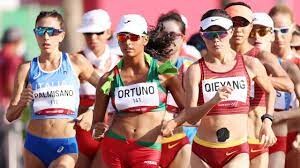
The event, scheduled to take place at 7.30 a.m. on Aug. 7, 2024, will be held on the same course as the individual race walking events at the foot of the world’s iconic Eiffel Tower.
The relay event will replace the men’s 50 km race walk, which was dropped following its last appearance at the 2020 Olympics in Tokyo. The 50 km race walk had appeared on every Olympic program since the event made its debut at the 1932 Olympics in Los Angeles (apart from Montreal 1976).

World Athletics had proposed the inclusion of the women’s 50 km event, but the IOC rejected the idea, which led to a consultation between the IOC and World Athletics on this new mixed-gender relay event.
Canadian Olympian and the reigning Olympic 50 km bronze medallist, Evan Dunfee, was unhappy to hear the news regarding the new event, especially after the 50 km race was cut for a more gender-balanced competition.
“In 2017, we were told there was no way to have a women’s 50 km walk in Tokyo because it was ‘impossible’ to change the program three years out. Now, less than 500 days away from the start of the 2024 Olympics, we’ve had our event completely changed,” Dunfee said on Twitter. “There is no endurance event for the race walk, which is what the event needs to be to make any sense.”
The current Olympic race walk program for the Paris Games has two individual 20 km race walk events and the mixed marathon relay.
When asked about the future of the sport, Dunfee shared, “Sadly, I suspect by Brisbane 2032, race walking will cease to exist.”
(04/12/2023) ⚡AMPby Marley Dickinson
Paris 2024 Olympic Games
For this historic event, the City of Light is thinking big! Visitors will be able to watch events at top sporting venues in Paris and the Paris region, as well as at emblematic monuments in the capital visited by several millions of tourists each year. The promise of exceptional moments to experience in an exceptional setting! A great way to...
more...Level up the competition with this fun track workout
If you are tired of doing speed workouts on the roads, running on a track can be a great way to switch things up and improve your turnover. The surface is also easier on your muscles and joints than pounding the pavement or concrete sidewalks, and is a great starting point for runners who are returning to running after an injury. The track is also great for measuring distance, which is essential in this fun 200/200 fartlek workout.
The workout

10 to 20 laps (on a 400m track) of 200m @ 5K pace, 200m jog rest
This workout is curated for a runner who is training for a 5K or 10K, helping them get familiar with their race pace on shorter rest. If you are training for a half or full marathon, you can still do this workout, but you might want to add 5 to 15 more reps. Also, keep a tally so you don’t lose count of how many reps you completed.
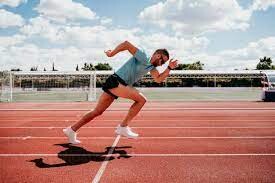
The purpose of this workout is to get your legs moving and train your aerobic endurance–so you have that extra gear when you need it in your next race.
If you are training to break 25 minutes for 5K, run each 200m rep around one minute and give yourself 1:45 to two minutes for the 200m jog. A speed workout like this can be as hard as you want to make it. If the pace feels too easy, increase your jog rest pace.
(04/12/2023) ⚡AMPby Running Magazine
Running a marathon: Tips for a race day success
After the hard work of training, you'll probably be anxious and excited for the big event – the actual marathon. Here are some tips for the day of the race that will help you to be prepared and ready for any unforeseen glitches.
Stay Hydrated
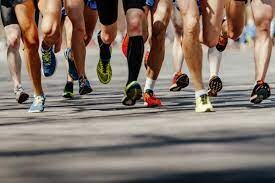
Hydration should not begin the morning of the race. Instead, you should make a conscious effort to stay well hydrated at least 48 hours before the start of your marathon. The American College of Sports Medicine recommends drinking 5 to 12 ounces of fluids every 15 to 20 minutes during a marathon, although this is often difficult to accomplish and can result in over hydration if your sweat loss is low. Therefore, it is recommended that you learn how much your body needs to consume to stay well hydrated during your training period, especially on the long runs. Checking your weight before and after a long run to make sure that you haven't lost more than 2 percent of your body weight, and checking that your urine is not too concentrated (dark yellow) are simple ways to assess your hydration needs.
To hydrate before a marathon, try drinking two 8-ounce glasses of water or sports drink exactly two hours before the run starts so that by the time the race begins, the fluids will have been absorbed into your system. If you think you may take longer than five hours to run the marathon, keep in mind that your sweat losses will be less, and so you will not have to drink as much fluid before the race.
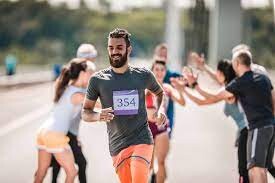
Eat Right
Eat at least 300 calories an hour before the race starts. Test out your food choices during your training, so that you know which foods help fuel your body for a long run. And if you feel your body needs more food, eat your final snack no more than 30 minutes before the start of the race.
Wear the Proper Gear
Be sure to check the weather forecast and dress appropriately. However, it is important that you do not overdress, which can increase your risk for dehydration. Also, don't wear new shoes, socks, clothing or accessories for the race. Everything you wear should be well broken in and have gone through a test run.
Check the Course
It is highly recommended that you review the marathon course before race day. If you live close to where the marathon will take place or have time when you arrive in town, it is helpful to drive the entire course, noting any landmarks or difficult patches. If you are not able to review the course yourself, see if you can order a video of the course or talk to people who have completed the marathon in the past.
Warm Up
Before the marathon, make sure to go through a thorough warm-up that can include about 15 minutes of light jogging, followed by another 15 minutes of stretching. Some people like to incorporate a few strides at race pace to prepare their body for the race. It is important to follow the strides with constant, light movement, such as easy jogging, until the race begins – even if you are in a crowded start line – so that your muscles stay loose and do not tighten. At the same time, it is essential that you do not overexert yourself during your warm-up.
Give Yourself Plenty of Time
You're likely to feel a bit nervous and anxious before the race, and the last thing you want is to be rushed. Wake up early enough to give yourself ample time to take care of everything you must do – dress, eat, shower, use the restroom, drink, etc. And, if you haven't already done so, coordinate a time and place to meet after the race with your family and friends. Also, depart for the marathon with enough time to be able to check your bag and warm up before the race begins.
Pace Yourself
Most people experience an adrenaline rush while waiting for the race to begin, which may cause you to barrel out of the start line at an accelerated pace without even noticing it. It is important to pace yourself and pull back until you hit the 10-mile mark. You don't want to wear yourself out early on in the race.
(04/11/2023) ⚡AMPby UCSF Health
Kenyan Celestine Chepchirchir eyes Boston Marathon title
The 127th edition of Boston Marathon which will be run on Monday has attracted 18 Kenyan athletes, among them big names who will contest for honors in the world’s oldest marathon race.
Winners in both categories will go home US$150,000 (Sh19,662,647.40) richer, and the top 10 finishers will also be awarded in the open division.
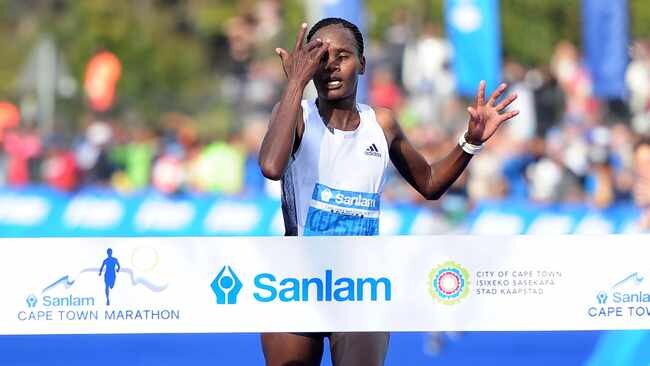
There will be a new champion in the women’s category since last year’s winner Peres Jepchirchir will not compete. Jepchirchir has opted to compete in the London Marathon.
Cellestine Chepchirchir is among the Kenyan women in contention for the title. For the last three months, she has been preparing for the race in Kapsabet, Nandi County.
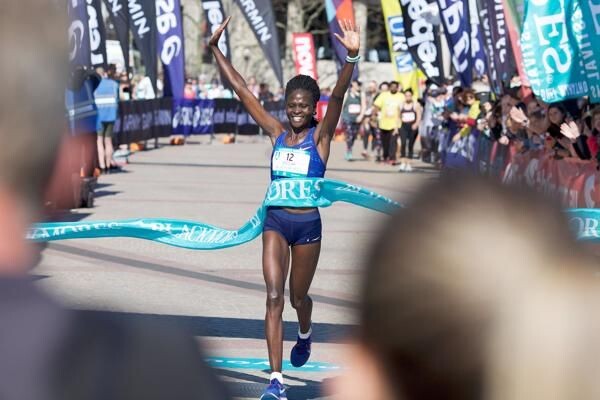
She will come up against Kericho-based Sheila Chepkirui, former New York Marathon champion Joyciline Jepkosgei, the 2017 London Marathon champion Edna Kiplagat, 2021 Amsterdam Marathon Angela Tanui and Fancy Chemutai.
Other Kenyans in the women’s filed include Maurine Chepkemoi, Mary Ngugi, Viola Cheptoo, Vibian Chepkirui and Hellen Obiri.
The men’s category will have world marathon record holder Eliud Kipchoge, defending champion Evans Chebet, the 2021 Boston Marathon champion Benson Kipruto, John Korir, Mark Korir, 2021 New York Marathon champion Albert Korir, Nobert Kigen, and Michael Githae.
In an interview with Nation Sport last week, Chepchirchir who has been training in Kapsabet, Nandi County, and has so far competed in 12 marathon races worldwide said she was delighted to be making her maiden appearance in a World Marathon Majors event this year.
Chepchirchir said that being named among elite athletes for Boston Marathon comes with a big responsibility because there will be a lot of expectations on her.
“I’m privileged to compete with some of the star athletes I have been watching on TV in major races. When I was named among the competitors, I immediately knew I was going to have to work extra hard, and to run a good race. It’s my first major marathon race and my training has gone well. I believe I will run a good race,” said Chepchirchir.
The soft-spoken athlete, who is coached by her husband Nahaman Serem, has competed in 12 marathon races. She finished fourth last year in Seoul Marathon, which gave her a reason to continue running.
Last year, she had been named among the elite athletes for Chicago Marathon but she delayed in processing her travel documents and missed the race.
“I would have competed in my first major marathon last year at the Chicago Marathon but my travel visa delayed. I was also prepared for the race. Unfortunately it didn’t happen but I thank God because I have another race to run this year. My aim will just to run a good race,” added Chepchirchir, who has a personal best time of 2 hours, 20 minutes and 10 seconds.
Other competitors in the women’s category include world champion Gotytom Gebreslase from Ethiopia, 2016 Boston Marathon champion Atsede Baysa, 2020 Tokyo Marathon champion Lonah Salpeter from Israel, 2018 Boston Marathon champion Desiree Linden from USA, among others.
(04/11/2023) ⚡AMPby Bernard Rotich
Boston Marathon
Among the nation’s oldest athletic clubs, the B.A.A. was established in 1887, and, in 1896, more than half of the U.S. Olympic Team at the first modern games was composed of B.A.A. club members. The Olympic Games provided the inspiration for the first Boston Marathon, which culminated the B.A.A. Games on April 19, 1897. John J. McDermott emerged from a...
more...Now nonbinary runners can compete at Boston Marathon
For nonbinary runners, this year’s Boston Marathon isn’t just a running event. It’s a major milestone in the race for inclusion.
The 2023 race will include a nonbinary division for the first time in the marathon’s storied 127-year history. While other major marathons, including New York City and Chicago, also have nonbinary divisions, Boston remains one of the most prestigious events on the marathon calendar.

It’s considered a bucket-list marathon because the race requires most runners, including those in the new nonbinary division, to earn their way onto the course by meeting strict qualifying time standards.
“Hopefully this has ripples across the country and across the world — in the running world to begin and then hopefully beyond the running world,” said Cal Calamia, a 26-year-old inclusivity activist from San Francisco who will be one of 27 runners competing in the nonbinary division at Boston on April 17.

The London Marathon will also debut a nonbinary division at its race this year on April 23.
Setting nonbinary qualifying times
Calamia, who identifies as nonbinary transmasculine, had qualified to run the 2021 Boston Marathon in the women’s division but then tore their ACL playing soccer. The first thought that went through Calamia’s head was anguish at not being able to run Boston. But the delay offered a silver lining.
“I like to look back on it and just think I’m actually really grateful that things happened the way they did,” Calamia said. “Because I was gonna go in there as a nonbinary person in the female category, and it didn’t feel right.”
Now, Calamia says they don’t have to choose between running Boston and their gender identity. “I don’t have to deal with essentially choosing between two things that aren’t really true and trying to pretend that one of them fits when it doesn’t,” they said.
Calamia has run the Chicago Marathon, California International Marathon and San Francisco Marathon. Their personal best is 2:58:50 from last year’s Chicago Marathon. But to Calamia, Boston is special.
“When I started thinking about running marathons, I was thinking about Boston,” they said.
A big reason for the race’s mythical status is its strict qualifying standards. Qualifying times are now broken down by age groups, and qualifying for Boston — or “BQ” in running vernacular — has become a badge of honor for amateur runners around the world.
One of the challenges of adding a nonbinary division was figuring out the qualifying standards. Race organizers decided that the nonbinary time standards for this year would match those for the women’s division, said Jack Fleming, the chief executive and president of the Boston Athletic Association, which hosts the Boston Marathon.
This year, runners in the women’s and nonbinary divisions ages 18 to 34 needed to run a marathon at 3:30 or faster to qualify. The men in that age range were required to run three hours or faster.
“We landed on having the nonbinary qualifications match the female qualifications, because it was the most inclusive,” said Susie Cleary, the BAA director of athlete services.
The BAA said on its website that the organization does not yet have enough data to establish nonbinary qualifying times and that this first year will be used as an “opportunity to learn and grow together.”
Jake Fedorowski, a 27-year-old from Seattle who wrote a guide for nonbinary inclusion in running, called the decision a “good move.” “You’re doing this to start to collect data so that over time you can start to really tailor what those times need to be,” they said.
Awards but no prize money
Along with Calamia, Fedorowski will run in the nonbinary division. Both will be among the 30,000 runners competing at Boston this year. Of the 27 runners in the nonbinary division, 25 qualified through time standards, Cleary said. Two nonbinary runners applied through the marathon’s charity program, which waives time restrictions in exchange for raising at least $5,000 for a designated charity.
But unlike participants in other divisions, nonbinary runners will not receive prize money. The top three runners in the nonbinary division will be awarded trophies, similar to runners who place top three in their age groups. The winner in the nonbinary division at the NYC Marathon last year took home $5,000, while the Chicago Marathon did not give prize money for the nonbinary division.
The BAA didn’t explain why the nonbinary division won’t include prize money this year. “We will continue to listen to our participants, review our events and continue to strive for the best experience possible for all our athletes,” Fleming, the BAA chief executive, said in a statement.
The first-place finishers in the open division will receive $150,000, winners of the wheelchair division get $25,000, masters division winners get $5,000 and winners of the para divisions, for athletes with disabilities, get $1,500, according to the marathon website.
(04/11/2023) ⚡AMPBoston Marathon
Among the nation’s oldest athletic clubs, the B.A.A. was established in 1887, and, in 1896, more than half of the U.S. Olympic Team at the first modern games was composed of B.A.A. club members. The Olympic Games provided the inspiration for the first Boston Marathon, which culminated the B.A.A. Games on April 19, 1897. John J. McDermott emerged from a...
more...Sha’Carri Richardson runs fastest 100m time of the year in Florida
The American track and field star returns to the track with impressive performance.
Over the weekend, prolific U.S. sprinter Sha’Carri Richardson opened her 2023 season in sensational fashion at the Miramar Invitational in Miramar, Fla. Richardson ran to the fastest women’s 100m time in the world this year, clocking a wind-aided mark of 10.57 seconds (+4.1 m/s).
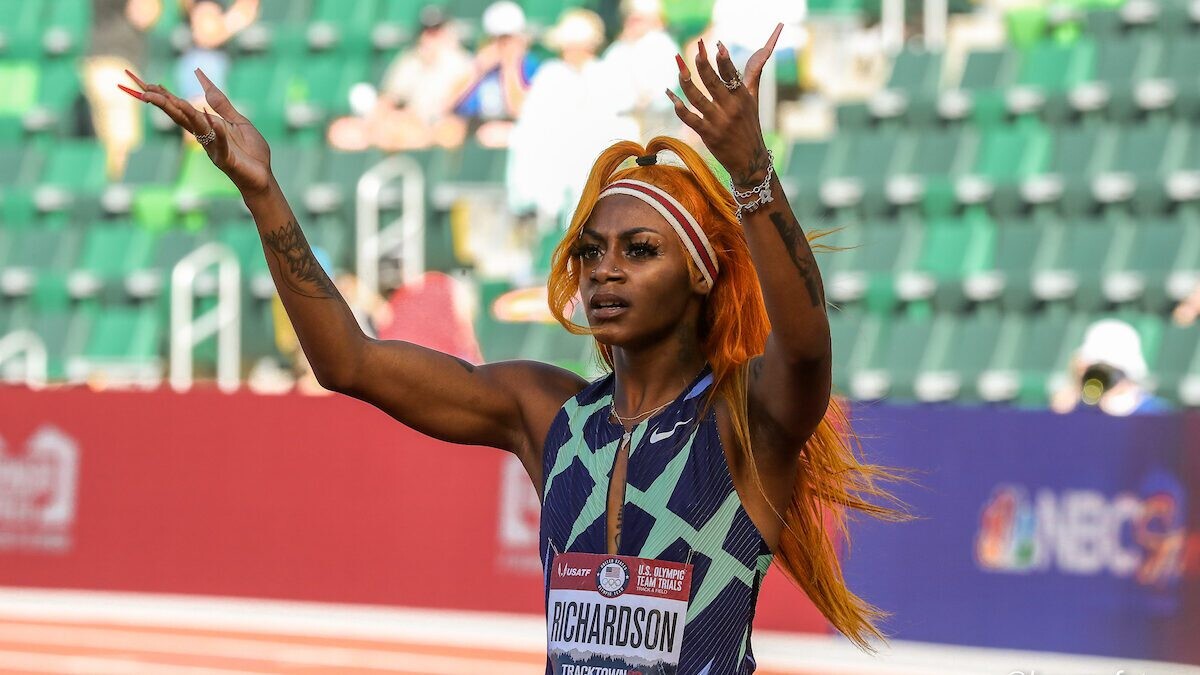
Her time, without factoring in the wind component, marked the third-fastest 100m ever, behind two-time Olympic champion Elaine Thompson-Herah’s 10.54 and world-record holder Florence Griffith-Joyner’s 10.49.
Richardson’s time was aided by twice the legal limit of +2.0 m/s, which is equivalent to around 7.2 kilometres per hour, or a light breeze. A wind gauge, or anemometer, is used to measure the wind speed during the race, and if the wind is higher than +2.0, the result becomes ineligible for records or seeding times.

The last two years have been rocky for the 23-year-old sprinter, who was booted off an American Airlines flight in January. Last summer, she bowed out of the women’s 100m and 200m at the USATF Track and Field Championships in the prelims, missing out on a Team USA spot for the 2022 World Athletics Championships.
In 2021, Richardson made headlines for winning the women’s 100m at the U.S Olympic Trials with a time of 10.86, but was later suspended for one month by the United States Anti-Doping Agency (USADA) after testing positive for marijuana. The suspension ruled her out of competing at the Tokyo Olympics.
With Richardson running fast this early in the season, it will be interesting to see her race the Jamaican trio of Thompson-Herah, Shelly-Ann Fraser-Pryce and Shericka Jackson when the 2023 Diamond League season starts in May.
(04/11/2023) ⚡AMPby Running Magazine
Six Best Marathon Runners of all time
The marathon is one of the toughest running events. This event is set at 26.2 miles or 42.195 kilometers, as presented by the International Association of Athletic Federations (IAAF) in 1921.
It's a significantly long-distance race that most people could not complete. It takes lots of training. One of the most famous marathon is Boston coming up Monday April 17. And one of our top six will be running, Eliud Kipchoge. So here are our six marathoners as the best of all time. What are your top six?
Eliud Kipchoge
Eliud Kipchoge easily tops this list as being the GOAT (greatest of all time!) in marathon history. He's a Kenyan runner that participated in marathons and used to specialize in the 5000-meter distance. Kipchoge has already made history and set a world record last September 2018 in Berlin after he completed the distance set for the Olympic men's race with 2:01:39.
No one else was able to defeat the record for several years until Eliud Kipchoge himself broke his own record at his fifth Berlin marathon last year, September 2022 with 2:1:9. It's a 30-second gap from his initial world record, which is a significant improvement already as a runner.
Not only that but he's also been a three-time London and Berlin champion since 2015! At 38 years old, he's already achieved so much, and he's not stopping just yet. Kipchoge also informed everyone that he'll be aiming for the Paris 2024 games, so you should also wait for that and check the updates on FanDuel Sports online.
Haile Gebrselassie
Next on the list is truly one of the marathon legends who dominated the industry when he was still active. Haile Gebreselassie is an Ethiopian long-distance runner who retired last 2015 after over 20 years of long-distance running. He's been active from the late 90s to the early 2000s, and a few of his astonishing achievements include consecutively winning the Berlin Marathon four times and the Dubai Marathon three times.
He also has four World Championship titles (1993 Stuttgart, 1995 Gothenburg, 1997 Athens, and 1999 Seville) and two Olympic golds (1996 Atlanta and 2000 Sydney) in a 10,000-meter distance run. Although he's no longer in the running scene, his legendary achievements will live long.
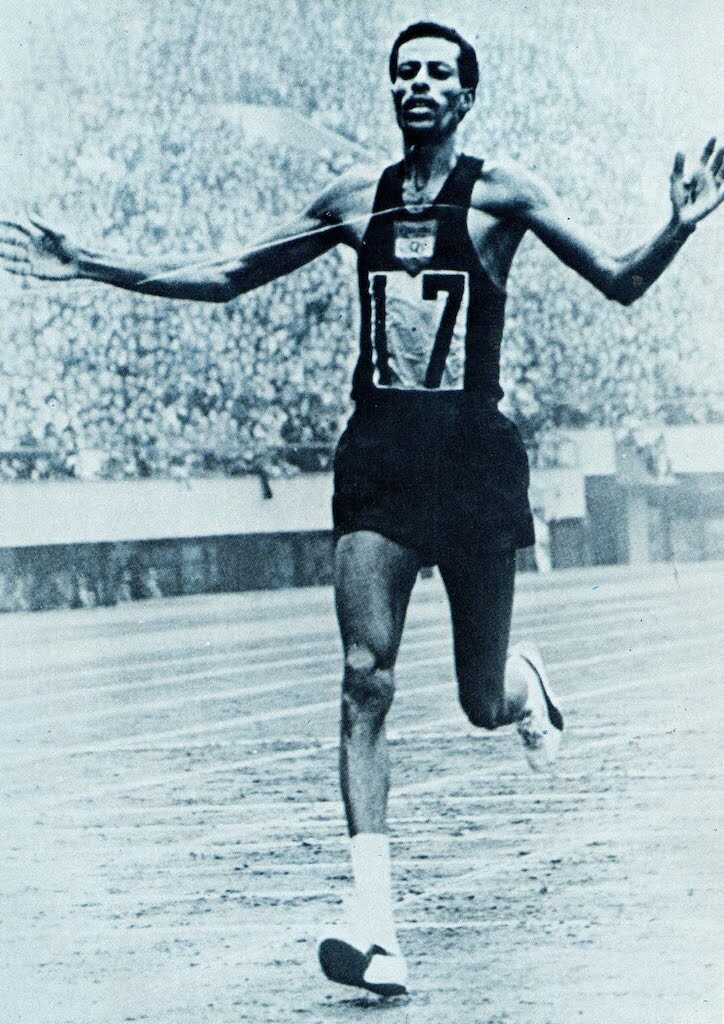
Abebe Bikila
If you're a huge fan of marathon events, you should already know about Abebe Bikila by now. He's a pioneer marathon runner that made significant feats in the history of the marathon. To start, he's the only athlete who ran barefoot during the Rome 1960 Olympics. He faced the cobblestones head-on, won a gold, and even set a world record. Bikila became the first Black African that ever topped at the Games in a 42.195km race.
Furthermore, his amazing barefoot run made it to the Guinness World Record as the fastest marathon run in bare feet at the 1960 Olympic Games with 2:15:16.2. Additionally, Abebe Bikila was also the first runner to win two Olympic marathon events after he grabbed another gold at Tokyo 1964
Mo Farah
Mo Farah is a British marathon runner who's only the second athlete to win 10,000-meter and 5,000-meter titles at successive Olympic Games. Throughout his athletic career, he accumulated 19 gold with nine silvers and two bronzes.
Moreover, he initially planned to retire but then changed his mind and participated in the Tokyo Olympics in 2020 and was even tipped by the excellent Eliud Kipchoge. He's still active to this day, but Farah shared with everyone that 2023 will be his final year after confirming that he will be participating in the London Marathon this April and giving it "one more shot."
Catherine Ndereba
Catherine, the Great Ndereba, is the first woman on this list, and she deserved it. She's one of the marathon runners that other athletes should recognize. The Olympics even regarded her achievement as one of the great.
In 2005, she was even awarded by the former Kenya president Mwai Kibaki with the Order of the Golden Aware due to her excellent accomplishments. Not only that, but she was also awarded 2004 and 2005 Kenyan Sportswoman of the Year.
Although she couldn't bring home gold from participating in the Olympic Games, she got to win silver awards for the 2004 Athen Games and 2008 Beijing Games. Additionally, she also has eight gold wins in World Championships and World Marathon Majors combined.

Paula Radcliffe
Paula Radcliffe is also one of the marathon runners that overcame her health issues as a child and became a successful athlete as an adult. Growing up, she struggled with anemia and asthma, but these were just a few bumps in the road as she continued to work hard and brought home several gold awards.
This British long-distance runner was the women's world record holder for over 16 years (2003 to 2019) for being the fastest female marathon runner with 2:15:25 until Brigid Kosgei broke it in 2020. Aside from that, she's also able to win New York City and London marathons three times and won 15 gold awards in total.
Final Thoughts
Marathon is an exciting sport, and no regular person can participate. It takes great understanding that a marathon is more than just running. Being as powerful as the runners mentioned above takes months of training and endurance. Although there are still other remarkable marathon runners, these six, in particular, made significant achievements in this field.
(04/11/2023) ⚡AMPTwo elite runners suspended after marathon bib-swap breaks record
When runners sign up for marathon months in advance and a last-minute injury prevents them from making it to the start, it isn’t uncommon that they swap or sell their race bib–but it’s still against the rules at most marathons. Ivan Zarco of Honduras did just that before the start of the 2021 Dresden Marathon, but the person he gave it to, Camilo Santiago of Spain, ended up breaking Honduras’s national record of 2:17:36. Now, both men have been suspended for six months by the Athletics Integrity Unit (AIU) for bib-swapping.
According to the report, Zarco determined he was unable to run because of plantar fasciitis only days before the race. He suggested to Santiago (his training partner) that he should take part using Zarco’s bib, which had his identification on it. The Spaniard went on to run 2:17:36, breaking the previous Honduras national record by 13 seconds.

The incident went public after the Spanish website Soy Corredor wrote an article about the bib swap in March 2021, which prompted Santiago, who has a personal best of 2:09:56, to tweet an apology, pointing out that he meant no harm. Zarco later contacted World Athletics to request that the marathon result be attributed to Santiago.
“The fact that Zarco and Santiago exchanged bib numbers and were caught demonstrates that their conduct was unreasonable and brought the sport into dishonour,” the AIU said in a statement.
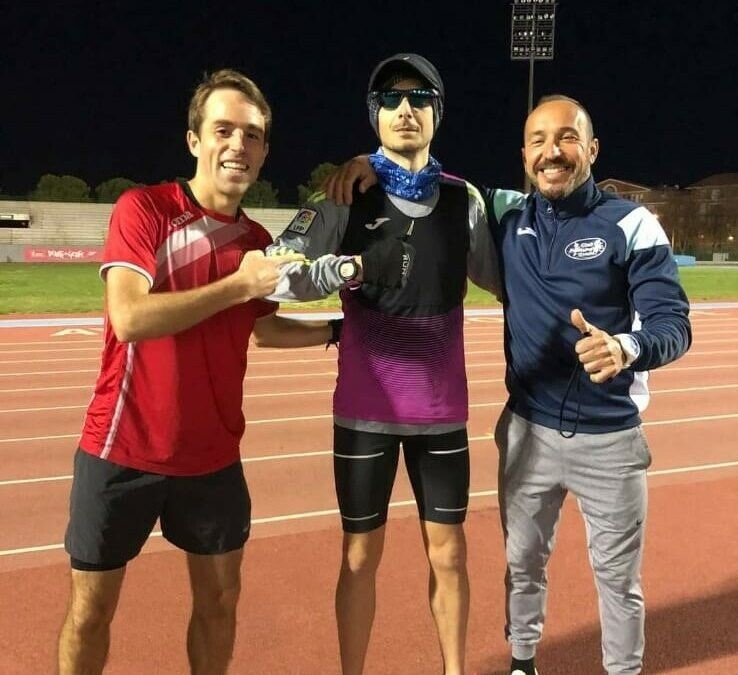
According to the AIU, both runners then testified that Santiago had his bib number in his bag, but it had disappeared just before the race, explaining to the organizers that Santiago would run with Zarco’s bib. However, that theory was debunked by race officials, who said there were lost bib facilities at the start for elite runners.
The result of 2:17.36 will not count, and both have been given a six-month sanction from the AIU for their actions.
(04/11/2023) ⚡AMPby Marley Dickinson
The Boston Marathon has never been easy, that’s why Des Linden keeps coming back
The conditions were wretched when Des Linden first toed the starting line in Hopkinton in 2007. An amped-up nor’easter brought rain, a 30-mile-per-hour headwind, and soggy, chilly misery for the runners.
“I was one probably of the few people who felt, that was one of the best things I’ve ever done,” Linden recalled years later. “I’m going to do this forever. I loved it.”
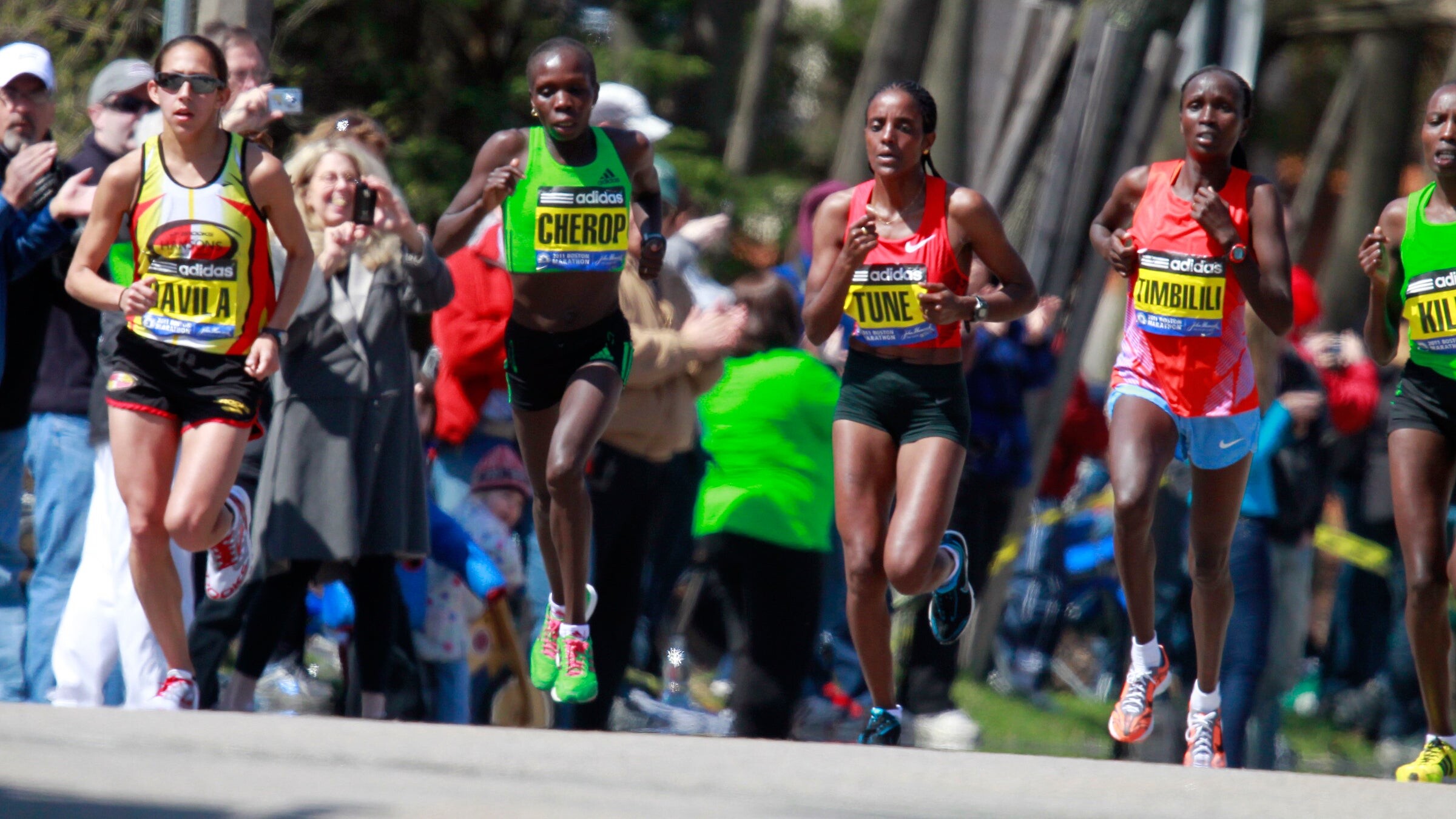
On Patriots Day Linden will lace up for her 10th Boston Marathon. During the 16 years since her first appearance here, which also was her 26-mile debut, Linden has won the laurel wreath (”storybook stuff”), lost by two seconds on a sprint down Boylston Street, finished fourth twice, and 17th in a “total suffer-fest.”
Every trip here is a homecoming, said the California native and Michigan resident who has a dog named Boston. What brings Linden back is the race’s incomparable history, the feeling of family that she gets from the Boston Athletic Association, the exuberant crowds along the course, “the greatest finish line in our sport,” and the unchanging challenge from the lumpy layout and mercurial weather.
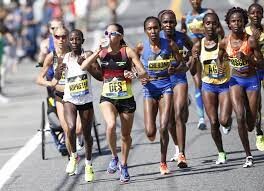
“We’re in this era where we want the marathon to be easier than ever before,” said Linden. “We want it faster, we want it flatter, we want wind blockers, we want shoes that bounce you forward, we want better gels. You name it, we’re trying to dumb this thing down. Boston is already not going to manage well with a lot of those things, then you throw in the weather conditions. I’ll take the tough one every time.”
Boston never has been easy. For decades there were no mile markers or water on the course. There was no prize money until 1986 — the reward was a medal and a bowl of canned beef stew. The starter fired the gun and sent you off. If you ended up sitting on the curb, cramped and blistered, the “meat wagon” picked you up.
Linden loves the purity of a race that always has the same course but rarely the same conditions. “A lot of people get surprised by it,” she said. “Well, it’s Boston in the spring.”
Boston is the recurring theme of “Choosing To Run,” Linden’s new memoir written with Bonnie D. Ford. Chapters recounting her 2018 triumph, the first by an American woman here in 33 years, are interspersed with a narrative of her evolution from a track racer to a marathoner.
Linden, who’ll officially become a master when she turns 40 in late July, is in the final stretch of her elite career, which she hopes will include a third Olympic team next year in Paris. Maybe she’ll run a fall marathon to prep for the Orlando trials in February. “Or maybe I just spin the legs and do some fast stuff,” she mused.
At this stage of her career it’s all about being smart and patient. “It’s a challenge letting go of your prime years, but there’s also a reality to it,” Linden said. “It’s recalibrating and readjusting what the goal is. I’m learning.”
One significant concession is her weekly mileage, which Linden has reduced from 120 to between 95 and 105. “I have this mentality that I’m being lazy if I’m not doing 115-120-mile weeks,” she said. “ ‘You’re not being lazy,’ my coach [Walt Drenth] said. ‘It’s just not practical.’ ”
At her age, maintaining speed and power are more important than training volume. “So work on what’s going away,” Linden said, “and rely on what you’ve done in the past as far as the volume goes.”
The lighter workload paid dividends at the recent New York City Half Marathon, where she placed fifth in 1 hour, 12 minutes, 21 seconds, the top American finisher. “It was the first time in a while that I got good momentum from a race,” she said.
Up against a stacked Boston field that includes Gotytom Gebreslase and Lonah Salpeter, the world gold and bronze medalists; two-time Boston victor Edna Kiplagat; returning medalists Ababel Yeshaneh and Mary Ngugi; two-time Olympic track medalist Hellen Obiri; and Amane Beriso, a sub-2:15er, Linden is realistic about her chances.
“Top 10 is a great goal at times and particularly this year — the field’s incredible,” said Linden, who was 13th last year. “Just mixing it up and racing is fun for me.”
At this point in her career Linden has little left to chase. She was seventh in the 2016 Olympics, cracked the top 10 at the 2009 world championships, and has posted top-five efforts in New York, Chicago, and Berlin.
But her crowning achievement came in Boston five years ago when she slogged her way through punishing wind and chilly rain to win a race that she didn’t plan on finishing. “It’s not gonna be my day,” Linden told Shalane Flanagan after 6 miles. “I think I’m going to drop out soon.”
But she pushed on, thinking more about survival than victory. “I was running in fear for most of the race,” Linden said. “Even halfway through Boylston I was thinking, if someone comes up on my shoulder I know I can respond.”
She won by more than four minutes, to her astonishment. Linden’s jacket and headband were added to the BAA memorabilia collection, whose artifacts date from the 19th century. “The same museum I had once viewed as an unattainable sanctum,” she wrote in “Choosing To Run.”
Gloria Ratti, the BAA’s longtime first lady, had given Linden the tour before her 2007 debut. That, she said, “made me fall in love with 26.2.”
“Everyone talks about Boston’s special history,” Linden said. “You can feel it on the course, you can see it on race day. But to have that collection of the very first medals and the shoes that were being worn … ”
(04/10/2023) ⚡AMPby John Powers
Boston Marathon
Among the nation’s oldest athletic clubs, the B.A.A. was established in 1887, and, in 1896, more than half of the U.S. Olympic Team at the first modern games was composed of B.A.A. club members. The Olympic Games provided the inspiration for the first Boston Marathon, which culminated the B.A.A. Games on April 19, 1897. John J. McDermott emerged from a...
more...How to rest, fuel and recover like the marathon world record holder Eliud Kipchoge
Over the years marathon running has become something of an art form. The science of running has also progressed significantly since the days of the St. Louis 1904 Olympic marathon where athletes including the eventual winner Thomas Hicks drank brandy and even strychnine, a form of rat poison, in the belief that they would improve their performance.
Today’s elite marathon runners like Eliud Kipchoge have strict training plans and diets that help them achieve peak performance on race day.

However, one thing that often goes underlooked is the importance of rest, fueling and recovery in marathon training and running.
And whether you’re an elite runner or training for your first big event, there’s no one better to learn from than double Olympic champion and reigning marathon world record holder, Eliud Kipchoge.
How much does Eliud Kipchoge sleep?
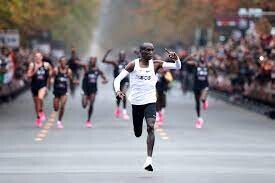
While staying in bed is a luxury some can’t afford when they’re training for a marathon, sleep is probably the best way your body has to recover from hard training runs and set yourself up for a successful marathon.
For Kipchoge that means a whopping 10 hours on average - but that doesn’t all come in one big overnight sleep session
“I’m sleeping eight hours during the night and two hours during the day,” the only man to run a marathon in under two hours revealed while training for the Ineos 1:59 Challenge.
And it’s not just Kipchoge who sleeps this much when preparing for race day. NN Running Team coach Addy Ruiter, who has trained Olympic 5,000 and 10,000 metre gold medalist Joshua Cheptegei, revealed that the 10-hour rule is commonplace among elite marathon runners.
“In general the average elite marathon runner would get around eight hours (a night) plus another two hours during the day for a total of 10 hours. During those two hours, an athlete may not always be sleeping but they’ll at least be lying on their beds making sure that they rest.”
While non-elite runners may struggle to find time for a mid-day rest, the principle of getting a good night’s sleep has been well established, with benefits that include muscle repair and the release of growth hormone.
So if you are struggling to keep up with your marathon training plan, more sleep is a good way to get your body in the right shape for another session.
How does Eliud Kipchoge taper before a marathon?
For many people, tapering before a race is key to their marathon day performance. In simple terms, it involves reducing your training for two to three weeks before your race so that you can arrive at the starting line rested and ready to run at your best.
While this works wonders for a lot of runners, Kipchoge does not taper in the traditional sense before his races.
In his training log for the 2017 Berlin Marathon, the Kenyan revealed that just a week out from the race he had run 182 km (113 miles). It was only in the final week when he travelled to Berlin that he lowered his mileage from his weekly average.
For a large part of the marathon running community, simply copying what Kipchoge does would be futile. He takes no days off during training and his rest day - if you can call it that - includes a 20km easy run.
However, it does make you understand that there’s no “one size fits all” solution for marathon running. While two to three weeks at reduced mileage may be best for some, as little as a week can work for others - including the greatest marathon runner to have ever lived.
How does Eliud Kipchoge fuel during a race?
While a runner’s diet leading up to a marathon race can help them get into tip-top shape, what they consume during a race is equally important.
For Kipchoge, that means taking on large amounts of carbohydrates in the form of drink mixes and running gels.
In the build-up to his 2018 marathon, it was revealed that Kipchoge was consuming around 100 grams of carbohydrates per hour in his race, the equivalent of two cups of long-grain brown rice or just over four slices of white bread.
For most athletes, 100 grams would be on the higher side of what their bodies are able to consume, with many non-elite runners staying within the 25-60 grams per hour range.
However, as with many things to do with marathon running, much of this is down to trial, error and indeed training (in this case training your gut to handle the carbohydrate intake). And if in doubt, it is recommended that you speak to a registered nutritionist.
How does Eliud Kipchoge recover from a marathon?
So, your marathon is done and the first thing you want to do is put your feet up and relax to recover from the strenuous effort you’ve just put your body through.
However, as with so many other aspects of his marathon plan, Kipchoge doesn’t follow conventional wisdom.During his training for the Ineos 1:59 challenge, Kipchoge revealed that he runs slowly for four days after a marathon. The main reasons for this are to check whether he has "cured well" and doesn't have any physical injuries that require medical treatment following his race.
After this, however, it’s time to rest. And for Kipchoge that means three weeks of "total" or "active" rest to ensure his body has recuperated before he once again begins training.
As coach Ruiter explains, athletes don’t have to be at their peak all year round - it’s all about resting, fueling and recovering in the right way to be at your very best on race day.
“The elite athletes I work with don’t have to be in peak physical shape the whole year round they just try and peak for competition, which in the case of many marathon athletes is twice a year,” he says. “They then take a post-race rest for three to four weeks to recharge the batteries. Most marathoners would then do two months of basic training followed by a more specific block of three-month training before the marathon.”
(04/10/2023) ⚡AMPby Sean McAlister
TCS Toronto Waterfront Marathon earns Evergreen sustainability honor
Canada Running Series (CRS) has been honored by the Council for Responsible Sport and given Evergreen certification for the 2022 TCS Toronto Waterfront Marathon. Evergreen certification is a status given to races for outstanding sustainability efforts and community impact, which have always been two key focuses for CRS and its many events. The TCS Toronto Waterfront Marathon is the only race in Canada to have achieved Evergreen status.
Evergreen certification
While major races are huge draws for runners and spectators alike, the bigger the race, the more negative impacts it can have on the environment. Think of all the materials used throughout a race, including plastic water bottles, plastic bags for post-race meals and more. This all adds up to create one big sustainability problem, which is where the Council for Responsible Sport comes in.
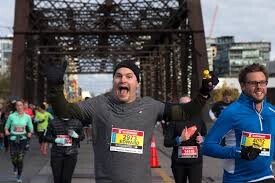
The Council for Responsible Sport gives sustainability scores to events like the TCS Toronto Waterfront Marathon, monitoring a race’s positive environmental, social and economic impact and determining which events are excelling in this space. Only a handful of events are granted Evergreen certification, and in 2022, the Council for Responsible Sport chose the TCS Toronto Waterfront Marathon as one of them.
A sustainable marathon
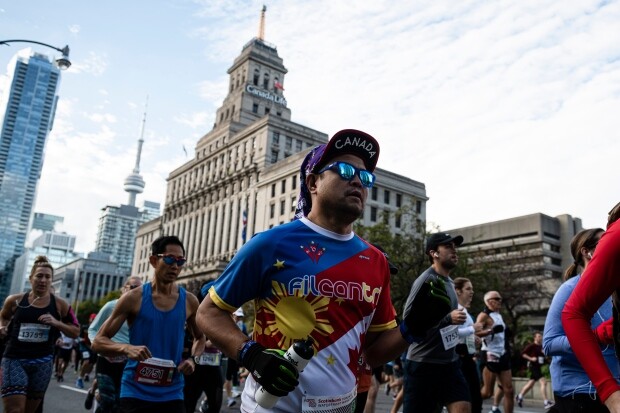
The TCS Toronto Waterfront Marathon team had made a big effort in recent years to make the event as sustainable as possible. In 2022, they diverted 86 per cent of waste away from landfill, meaning any waste the race did produce was “diverted into the proper streams” by “recycling, composting, reusing and donating” it, says CRS event manager Jen Cerullo.
“The types of products and materials that get diverted include cardboard and mixed recycling, textiles, clothing and shoe donations, organic material composting and food donations to local food banks.” Cerullo adds that the grabage bins on the race course were even checked so the waste could be properly sorted. The CRS goal is to land even higher than 86 per cent in coming years, and they are working toward an “ultimate zero-waste goal,” Cerullo says. (Cerullo points out that the term “zero waste” is considered to be 90 per cent or higher for waste diversion.)
The marathon has also succeeded in eliminating plastic water bottles at the race. Cerullo says that instead of carting cases of water bottles around the race route to the various aid stations, they tapped city water hydrants to fill cups, or when hydrants weren’t available, they would bring pre-filled water tanks. “We also encourage participants to bring their own refillable bottles when possible,” she adds.
On top of the race team’s sustainability efforts, the TCS Toronto Waterfront Marathon has always been a funnel for charitable donations. The race’s Charity Challenge raises funds for multiple organizations (the full list can be found here), and participants can choose which they would like to donate to and/or fundraise for when signing up for the race. “In 2022, we welcomed 150 charities to the program,” Cerullo says.
All of this adds up to a race the Council for Responsible Sport is looking for when it comes to Evergreen Certification. Cerullo says CRS and the marathon team have been working toward reaching this status since 2021. “An event achieves Evergreen Certification by achieving 90 per cent or more of the total points available within the council’s Responsible Sport Standards,” she says. “Points are gained by demonstrating adherence to 61 individual criteria across five categories of sustainability.”
To measure the race’s sustainability efforts, the CRS team uses a TCS-designed app called ReScore. This app allows race organizations to track and report their progress when it comes to sustainability and environmental impact. ReScore is a key tool that races all around the world can use to ensure that they are not only improving when it comes to their sustainability, but hopefully meeting the Council for Responsible Sport’s expectations.
Over the course of 15 months, the TCS Toronto Waterfront Marathon team worked toward meeting the Council for Responsible Sport’s criteria and gaining points from the council’s various standards. Haley Price, head of sports sponsorships from TCS North America, also congratulated the CRS team, noting that “maximizing the impact of [an] event” like the TCS Toronto Waterfront Marathon is so important, and adding, “We applaud the TCS Toronto Waterfront for setting the sustainability standard for endurance running races.” Cerullo says the team is thrilled to have met the Council for Responsible Sport standards and to have made TCS officials proud, but that doesn’t mean they’ll stop working toward being even more sustainable.
“We have goals to remain on this trajectory and will continue to make choices for the race and the organization that are centered around environmental responsibility, accessibility, diversity, inclusion and equity,” she says.
(04/10/2023) ⚡AMPby Running Magazine
TCS Toronto Waterfront Marathon
The Scotiabank Toronto Waterfront Marathon, Half-Marathon & 5k Run / Walk is organized by Canada Running Series Inc., organizers of the Canada Running Series, "A selection of Canada's best runs!" Canada Running Series annually organizes eight events in Montreal, Toronto and Vancouver that vary in distance from the 5k to the marathon. The Scotiabank Toronto Waterfront Marathon and Half-Marathon are...
more...The six emotional stages of spring running
Nice spring weather is just around the corner, and with it comes the return of warm and sunny runs.
Wherever you are in Canada, spring weather is almost here, and that means you can ditch your tights, long sleeves and jackets soon enough. Every runner knows how wonderful it feels to wake up one day, look out the window and realize that you’re in for a warm run. However, it’s been a long time—months—since you last ventured out into the sunshine in just shorts and a T-shirt, and because of that, you may have forgotten what spring running can be like. To remind you before that impending warm front fully arrives in your hometown, here are the six emotional stages of spring running.
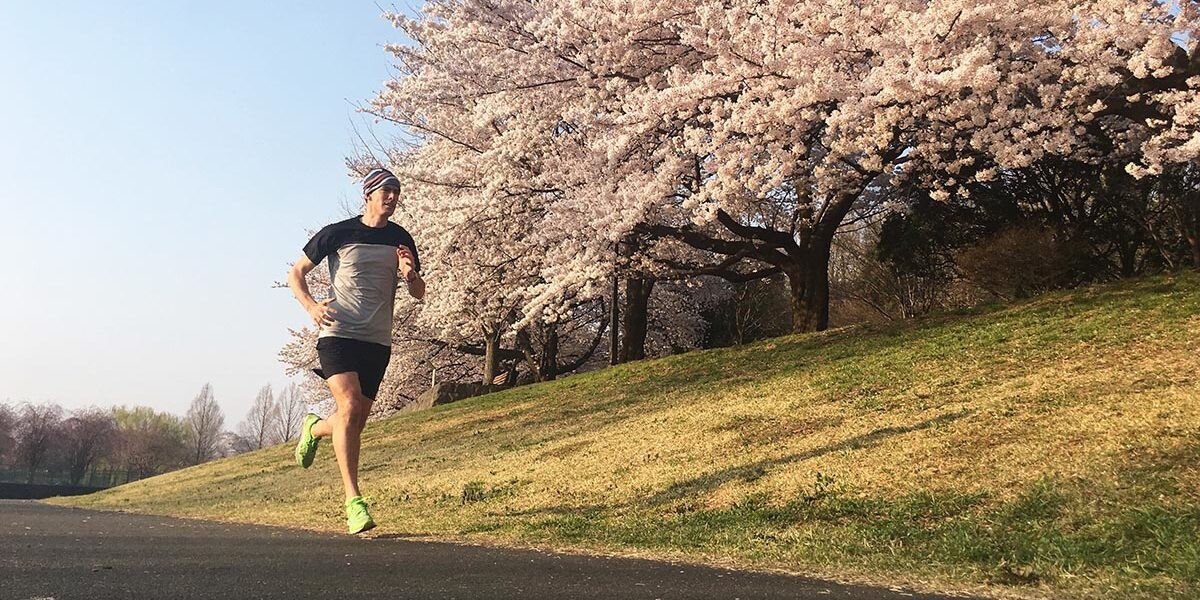
1. FOMO
FOMO, or the fear of missing out, is a common feeling for runners in the early days of spring. There are few things worse when it comes to spring running than being stuck inside when it’s nice out. Whether you’re at work, in school or trapped anywhere else and unable to run, you won’t be able to stop yourself from staring out the window and wishing you were on a run, enjoying the sunshine and warmth. Until you finally do manage to escape and get out for a run, you’re going to experience some serious FOMO.

2. Pure happiness
You’re finally out the door, and in nothing more than your shoes, a pair of shorts, a T-shirt and your sunglasses. Life can’t get much better, can it?
3. A need for more
Maybe you only planned to run a few kilometres, but at some point, you’re going to think to yourself, “I can’t go back yet, it’s way too nice to be done already.” So, instead of pulling a 180 at your usual turnaround spot, you keep going straight with one mission in mind: to soak up as much sun as possible.
4. Slight regret
It’s way hotter than you realized. Maybe the temperature has climbed since you left the house, or maybe you’re just not used to running in anything warmer than 5 C. In either case, you regret not bringing some water along to keep hydrated and cool yourself down.
5. Self-loathing
You might not hate yourself completely, but you will experience some anger in this time. It may be due to the temperature, or it could be because your quest to enjoy the sun took you farther than you should have run, and you still have to run back home (or maybe it’s a combination of the two). Whatever the case, you’re going to be mad that you put yourself in this uncomfortable situation, and you promise yourself that you’ll be smarter next time.
6. FOMO Part II
You’re finally home. You go inside, get cleaned up and look outside again. It’s still sunny. You know you were just out there, but you’re already missing the sun and wishing you could go for another run.
(04/10/2023) ⚡AMPby Ben Snider-McGrath







